
“Tough




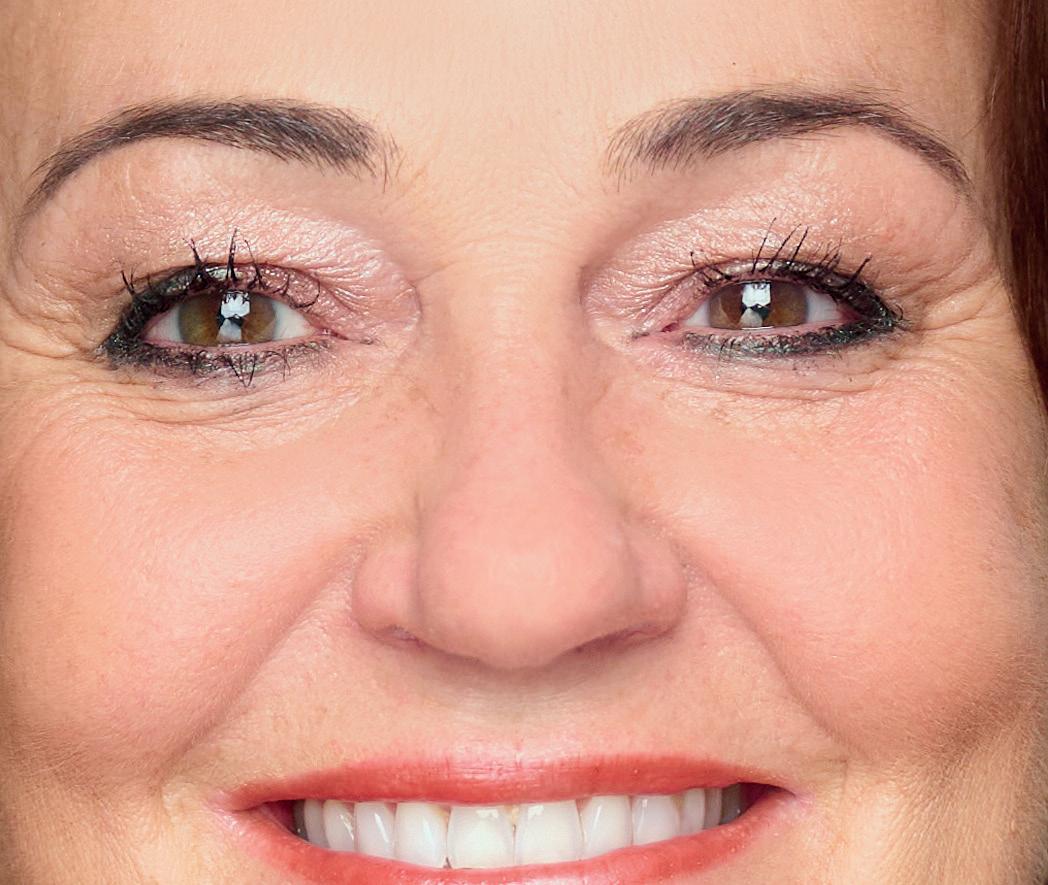
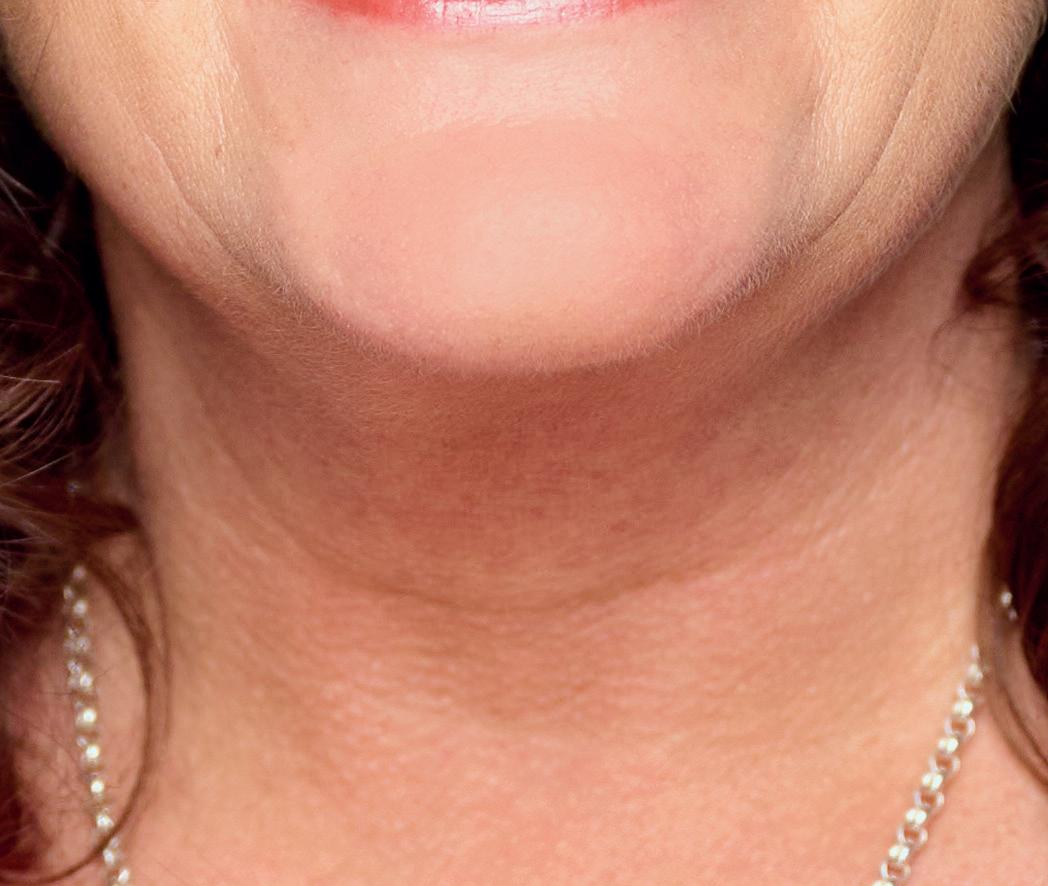









FITNESS, HEALTH, WELLNESS GLOBAL MEDIA PARTNER ISSUE 1 2024 @ HCMmag HCMmag.com
Groves On driving investment into the sector
Jamie
p20
health
legendary entrepreneur talks to HCM p38 SIGN UP FREE
Tackling men’s mental
with Bear Grylls p16 The
Watts ON THE COVER
Chibs Okereke Sarah
LOVE
As a business model p48
Life Lessons
times don’t build character, they reveal it” p70
PHOTO: SCRATCH STUDIOS
Victor Brick
Skillup™
Patented design
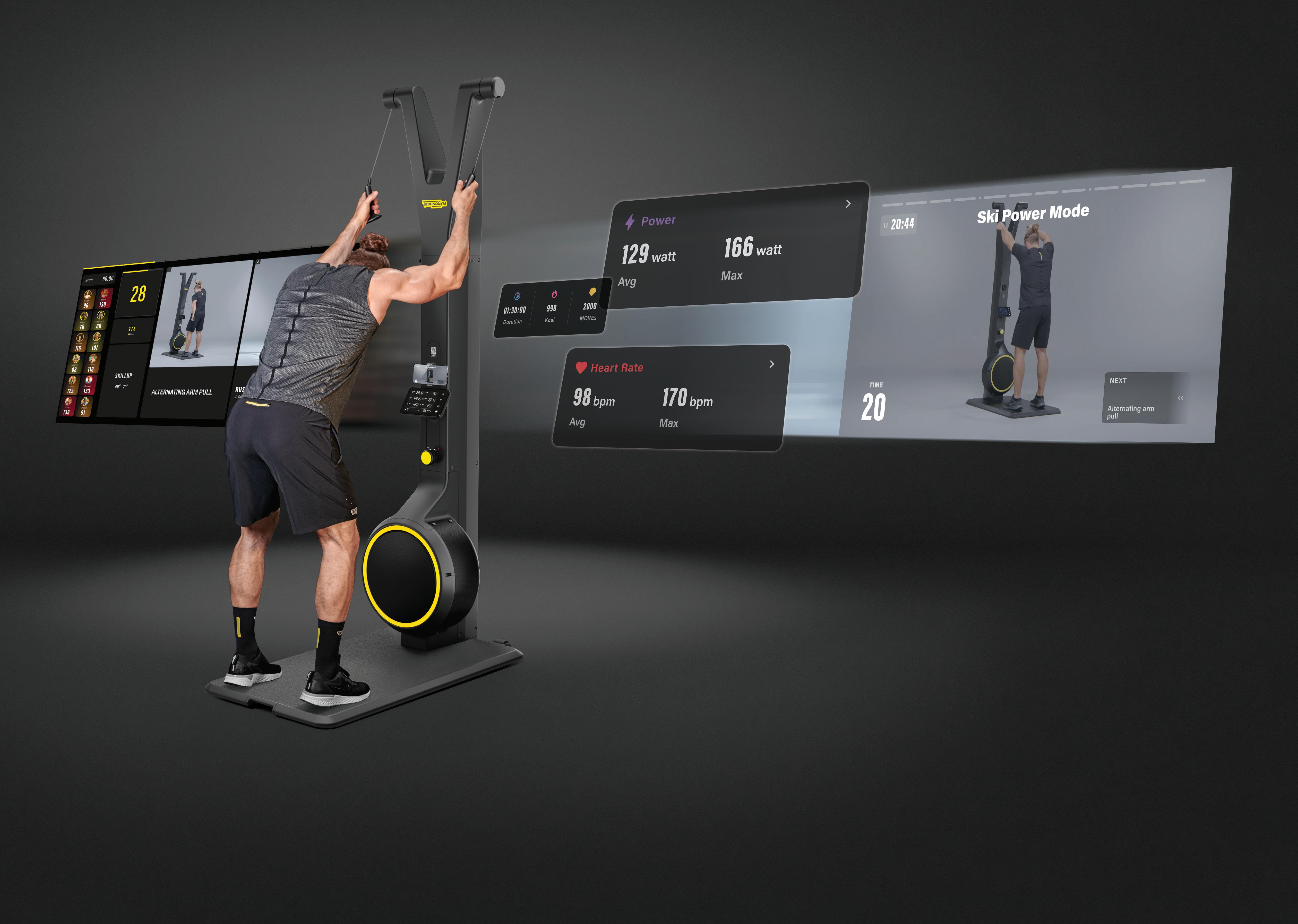
The only upper body ergometer that features the unique Multidrive Technology™ for switching between cardio and power training modes in one workout. In addition to aerobic workout, the magnetic resistance increases intensity for power-building exercises. Superior results faster.

THE MOST INTENSE UPPER BODY CARDIO WORKOUT Discover more: technogym.com/hcm PLAY VIDEO















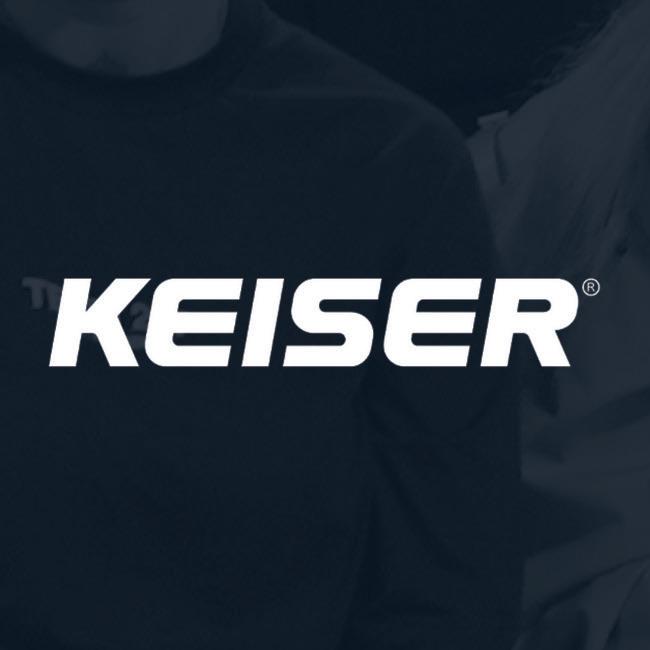



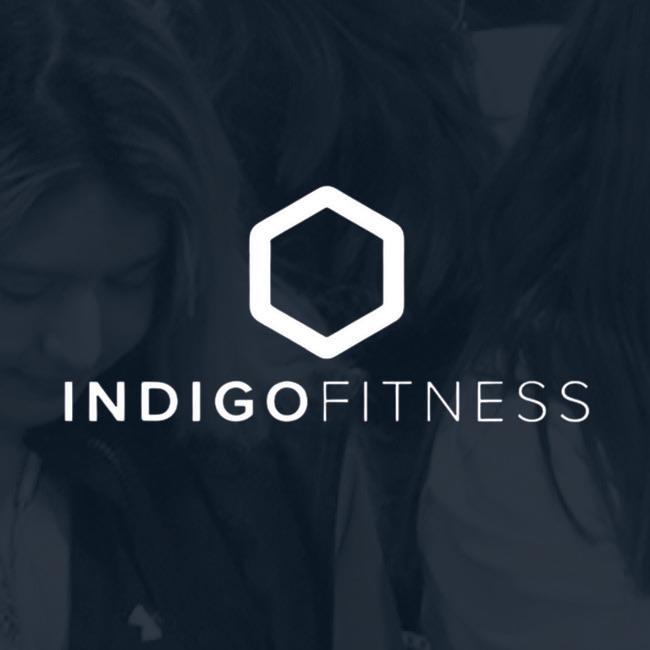













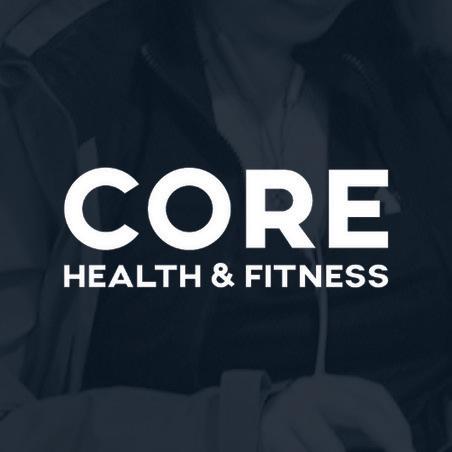










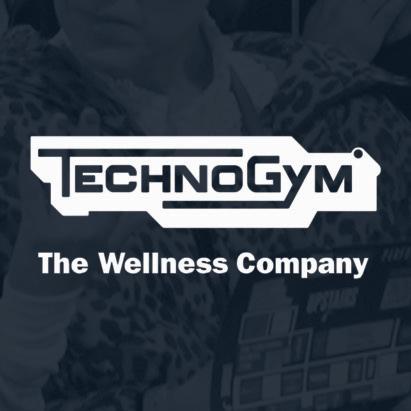







50+ MASTERCLASSES 100+ LEADING BRANDS THE INDUSTRY’S BEST NETWORKING & AFTER SOCIAL THE UNMISSABLE BUSINESS OF FITNESS EVENT USE CODE ‘HCM10’ FOR 10% OFF AT WWW.PERFORMXLIVE.COM TOBACCO DOCK, LDN 21 - 22 MARCH 202 4

AGetting more ambitious
Consumers tell us they want support in leading longer, healthier lives and we’re the only industry sector with the capability of delivering on this, so we must ensure strategy is aligned with demand
whole raft of new research indicates we can afford to be increasingly ambitious for our sector, as it becomes ever more critical to consumers.
Insight from the Vitality Research Institute has found that on average, 16 per cent of a woman’s life and 13 per cent of a man’s life can now be expected to be spent in poor health.
Life expectancy has grown in the developed world, but healthspan – the years spent in good health – is not keeping pace, creating distress for people and their families and exerting a drag on economies and societies.
Demand is growing from consumers for solutions to this as people wake up to this challenge and we’re increasingly pushing on an open door in promoting healthy lifestyle interventions.
US health club operators Life Time produces an annual consumer insight study, with this year’s edition highlighting the value people place on health clubs in helping them maintain their wellbeing.
The study – US consumer health and wellness survey – found the majority (51 per cent) saying that ‘living longer healthier lives’ is a bigger motivation than ‘looking better’ (9 per cent) when it comes to being a member of a health club.
With health data and consumer aspirations aligning so powerfully, the health and fitness sector is optimally positioned to deliver the support people need to build physical activity, wellness and recovery into their lives in a manageable and sustainable way.
We must ensure industry strategy is sufficiently ambitious when it comes to our reach, so we’re skillingup teams to deliver the services people are demanding.
This includes collaborating seamlessly with the health sector, positioning ourselves as one of the key industries of the future and ensuring we are experts in consumer insight.
We have to recognise that we’re effectively the only sector in society offering this support. Where else

We’re the only industry sector enabling people to build physical activity, wellness and recovery into their lives
can people get sound advice about how to live more healthily? Where else do they have the opportunity to exercise in a way that fits in with a busy life? Where else can they get access to specialist equipment and programmes? What we do is special and unique.
Recognising this, ensuring we deliver support to people in all parts of society in a way they can afford and that makes them feel welcome is vital.
If we can do this, we will play our part in closing the healthspan gap and empowering people to live the longer, healthier lives they dream about.
Liz Terry, editor lizterry@leisuremedia.com
5 ©Cybertrek 2024 Issue 1 2024 EDITOR’S LETTER
+44 (0)1462 431385 WWW.HCM mag .COM HCM@LEISUREMEDIA.COM WWW.LEISURESUBS.COM
Consumers are clear that good health is a priority
PHOTO: SHUTTERSTOCK.COM/ALESSANDROBIASCIOLI
CONTENTS
Fitness, health, wellness

























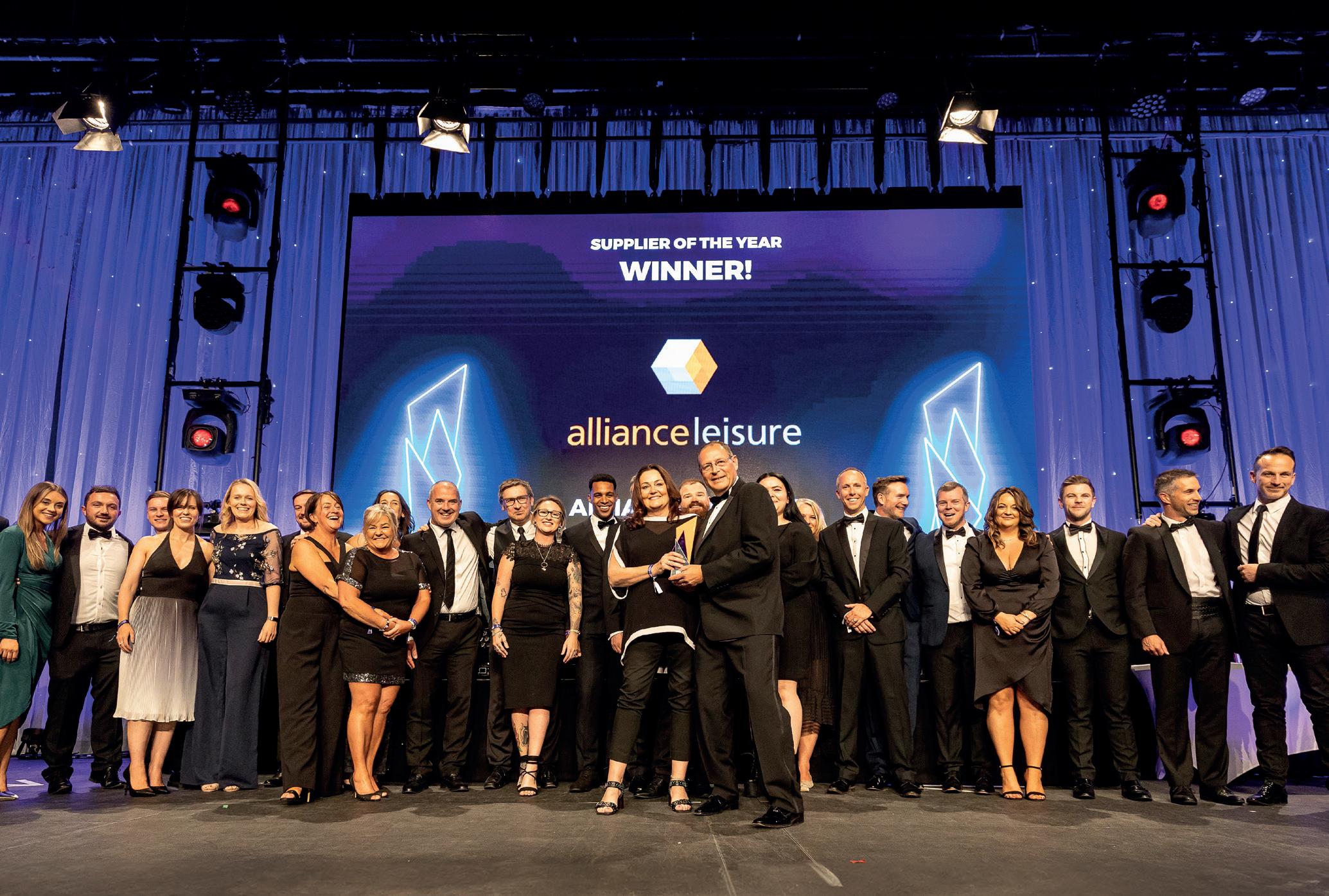
05 Editor’s letter
Public health is in the spotlight and the sector must step up, says
Liz Terry
12 Write to reply
Thoughts from Helen Rowbotham of Access Sport and Jason Stanton of Mytime Active
16 HCM people
Chibs Okereke
The stress coach talks about working with Bear Grylls on the Mettle app for men
20 HCM people
Jamie Groves
The creator of the UK Leisure Framework explains how he developed the concept and the impact it’s having
24 HCM people
Childs & McGuigan
The Life Leisure execs talk about their radical approach to the provision of physical activity in areas of deprivation
30 HCM news
SATS reports its best results yet, Tracy Anderson is heading to London and Adidas and Bumble tackle gymtimidation
38 Interview
Sarah Watts
The legendary and much-loved CEO has forged a stellar career in finance and development, creating facilities that are changing lives and driving regeneration. She talks to Kate Cracknell

48 Talking Point Love
How can we authentically harness the power of love to support our teams, bond with our customers and amplify success? Kath Hudson asks the experts
56 Here comes the future
Members of HCM ’s senior-level industry panel share their thoughts with Kath Hudson on the challenges and opportunities that lie ahead
70 Life Lessons
Victor Brick
The industry entrepreneur reflects on the tough times and the resilience he’s gained from adversity
6 Issue 1 2024 ©Cybertrek 2024 ISSUE
322
1 2024 N o
HCMmag.com
38 Sarah Watts and her awardwinning team at Alliance Leisure
PHOTO: ALLIANCE LEISURE/UKACTIVE
PHOTO: SCRATCH STUDIOS
38 Sarah Watts



74 Progress report
New research into the digitisation of the health club sector has found both examples of best practice and room for improvement, as Dave Gerrish explains
82 Eco floors
A powerful ESG strategy is essential when it comes to everything from recruitment to fundraising. Steph Eaves finds eco-procurement is another piece of the ESG jigsaw puzzle
92 Everything in its place
Delivering a powerful customer journey relies on having the right systems in place. Steph Eaves looks at the latest designs for gym floor management

102 Product innovations
Steph Eaves reports on the latest kit and services from Technogym, Precor, BLK BOX and Fitter Stock
104 Reader services HCM Directory
106 Research
The power of placebo
Researchers in Norway have found that people who believe workouts are customised for them achieve better results
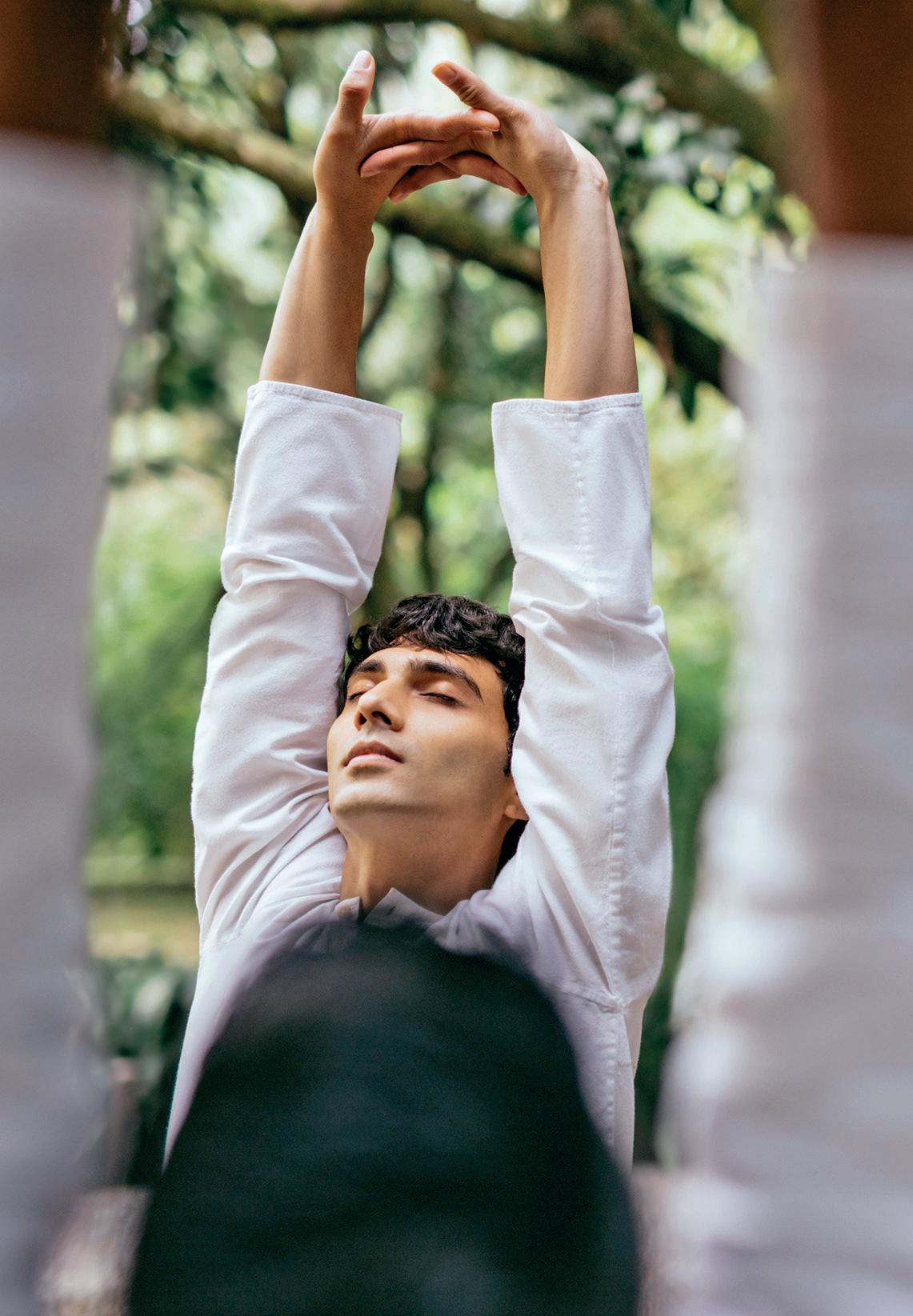



If you’re in procurement, the HCM directory is part of a network of resources designed for you that includes www.HCMmag.com/CompanyProfiles


7 ©Cybertrek 2024 Issue 1 2024
20 Jamie Groves
70 Victor Brick’s life lessons
82 Eco-procurement
56 Trends and predictions
48 Love as a business model
PHOTO: BLK BOX/EXOS
PHOTO: BRICK BODIES
PHOTO: SI SENSES
PHOTO: SHUTTERSTOCK/JACOB LUND
PHOTO: DENBIGHSHIRE LEISURE
MEET THE TEAM
theteam@leisuremedia.com

Editor
Liz Terry
+44 (0)1462 431385

Managing editor
Steph Eaves
+44 (0)1462 431385

Editor-at-large
Magali Robathan
+44 (0)1462 431385

Publisher
Jan Williams
+44 (0)1462 471909

Head of news
Kath Hudson
+44 (0)1462 431385

Assistant editor
Megan Whitby
+44 (0)1462 471906
Email us:
Customer service
+44 (0)1462 471901
Advertising
+44 (0)1462 431385
Subscriptions
+44 (0)1462 471910
Circulation
+44 (0)1462 471932
Finance
+44 (0)1462 471930
Credit control
+44 (0)1462 733477
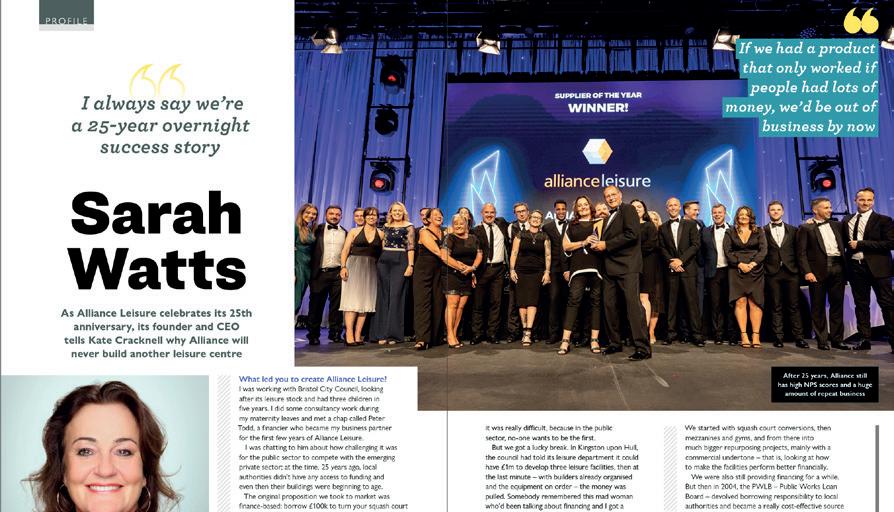
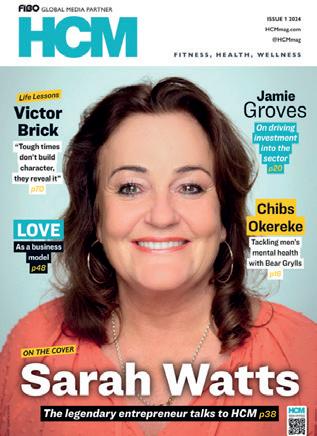

Choose how you read
HCM digital
Read free online and enjoy extra links and searchability www.HCMmag.com/digital
Print
HCM magazine is available in print from www.leisuresubs.com
HCM PDF
A PDF edition is available to read offline at: www.HCMmag.com/pdf

Other resources from
Fit Tech magazine
www.fittechglobal.com
www.fittechglobal.com/archive
HCM Handbook
www.HCMhandbook.com
www.HCMhandbook.com/pdf
HCM Online library
www.HCMmag.com/archive
HCM Ezine & Instant Alerts
www.leisuremedia.com/subscribe Leisure Opportunites jobs & news
www.leisureopportunities.co.uk
Buyer Search Engine
www.fitness-kit.net
To subscribe to HCM in print (Health Club Management): log on to www.leisuresubs.com , email subs@leisuremedia.com or call +44 (0)1462 471930.
Annual subscriptions: UK £45, Europe £57, rest of world £80, students (UK) £22.
Style: HCM follows an editorial house style which precludes the use of marketing devices in body text and headlines, eg: capitalised or part capitalised names and registered trademarks. CamelCase is allowed. Contact the editor for more details – lizterry@leisuremedia.com.
Copyright details: HCM (Health Club Management) is published 12 times a year by Leisure Media, PO Box 424, Hitchin, SG5 9GF, UK. The views expressed in this publication are those of the authors and do not necessarily represent those of the publisher. All rights reserved. No part of this publication may be reproduced, stored in a retrieval system or transmitted in any form or by means, electronic, mechanical, photocopying, recorded or otherwise, without the prior permission of the copyright holder, Cybertrek Ltd 2024.
Print and distribution Printed by The Manson Group Ltd. Distributed by Royal Mail Group Ltd and Whistl Ltd in the UK and Total Mail Ltd globally.
©Cybertrek Ltd 2024 ISSN 1361-3510 (print) / 2397-2351 (online)
8 Issue 1 2024 ©Cybertrek 2024
PUBLIC AFFAIRS MEDIA PARTNER GLOBAL MEDIA PARTNER
www.HCMmag.com Issue 1 2024 Volume 30 Number
322
24 OCTOBER 2024 www.HCMmag.com/summit SAVE THE DATE LONDON
Conference Centre
Queen Elizabeth II


WANT TO LEARN MORE? lesmills.com/uk/limited-edition


ARE YOU READY TO GIVE YOUR MEMBERS THE FUTURE OF STRENGTH? Demand for strength workouts is insatiable. It’s Gen Z’s favourite way to workout1 and is the most-wanted training program for all age groups2. That’s why we’re injecting variety and challenge into the category with LES MILLS FUNCTIONAL STRENGTH™ Help your members take their training to the next level, with a full-body workout combining heavy compound lifting and tempo-focused supersets. Inspired by sports conditioning and performance training, FUNCTIONAL STRENGTH offers an entirely new way to strength train that builds power and improves athleticism and stability. 1 Civic Science, 2Mindbody Classpass Lookback Report (2022)
Write to reply
Fuel the debate about issues across the industry and share your ideas and experiences. We’d love to hear from you.
letters@leisuremedia.com
Traditionally, operators have struggled to engage with disadvantaged and disabled young people
Helen Rowbotham, CEO, Access Sport
Access Sport, the sport inclusion charity, has entered into a partnership with Lex Leisure and Legacy Leisure to pilot an inclusive community sport offer centred around leisure centres.
The partnership aims to develop a national inclusive club support model that recognises the important role of leisure centres as hubs for positive change in community sport.
Traditionally, operators have struggled to engage with disadvantaged and disabled young people in their local areas. For example, only 17 per cent of public leisure centre users are from deprived communities and understandably, staff are not typically experts in social and disability inclusion and often don’t have the tools to work with these young people.

The project will initially be based in Derbyshire and Devon UK and will deliver social and disability inclusion training and development support to local community clubs.

The training will focus on building local connections with communities, upskilling coaches and developing new inclusive programmes. The project will then be reviewed with a view to creating a national offering that can impact the lives of thousands of disadvantaged and disabled young people.
We’re excited to be working with Lex Leisure and Legacy Leisure to pilot this concept and we’re aiming to create a new leisure centre-focussed inclusive club offer that will enable more children and young people to access the transformational benefits of community sport. These benefits include mental and physical health, life skills and prospects, a sense of belonging and community engagement.
12 Issue 1 2024 ©Cybertrek 2024 LETTERS
Helen Rowbotham
PHOTO: ACCESS SPORT
PHOTO: MYTIME ACTIVE
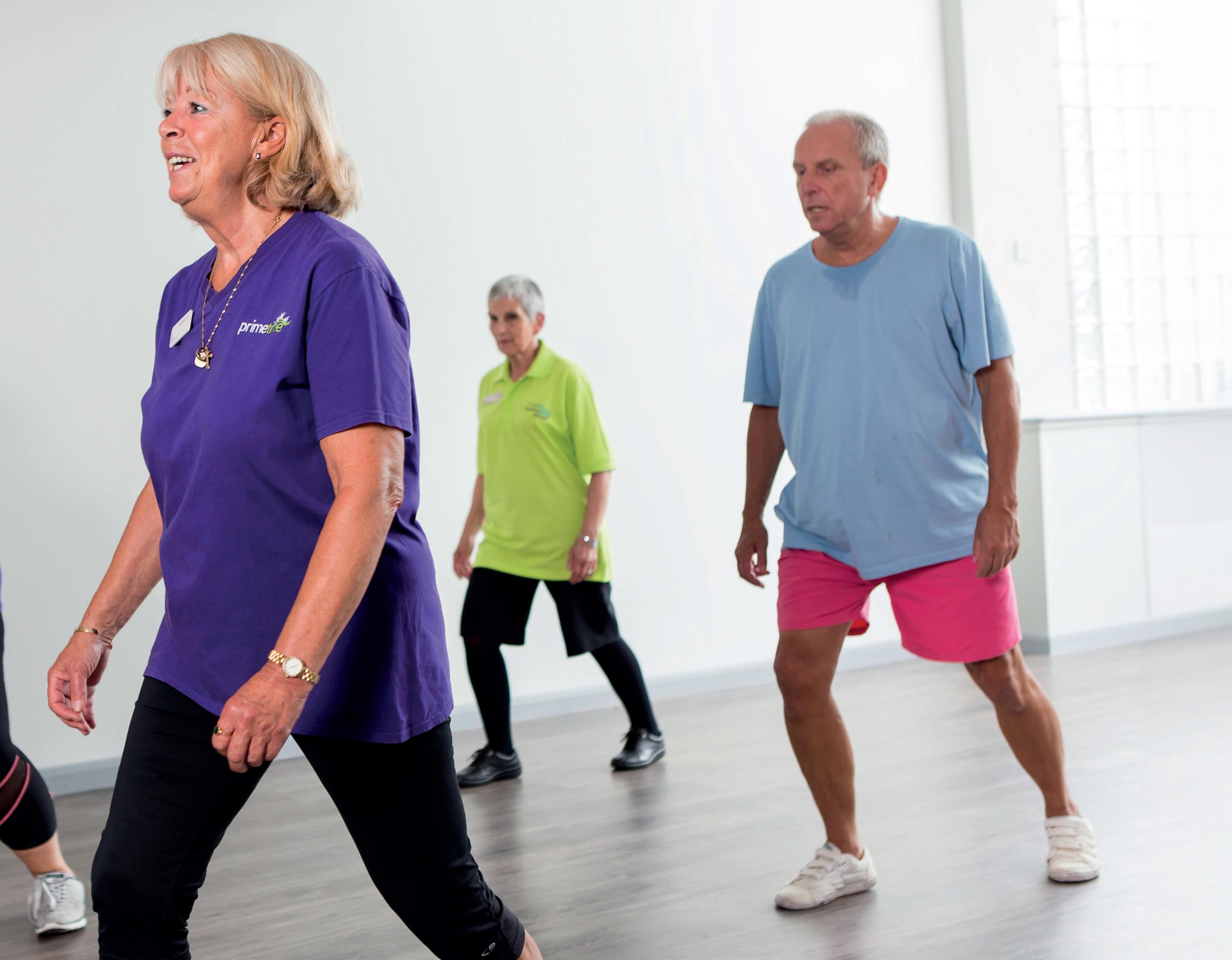 Jason Stanton, CEO, Mytime Active
Jason Stanton, CEO, Mytime Active
I read with interest the research by Savanta, on behalf of UK Active, that 78 per cent of respondents cited improving their mental health and wellbeing as a reason to take out a gym membership, while 43 per cent said going to the gym helps them make new friends (www.hcmmag.com/Savanta).
It’s positive news that people are seeing that accessing physical activity is about much more than just getting ‘fit.’ However, if operators really want people to keep coming, we have to prioritise and deliver opportunities for making friends and eliminating social isolation when they come through our doors.
At Mytime Active we’ve found the key to unlocking this need for
We have to prioritise and deliver opportunities for making friends and eliminating social isolation
friendship, particularly for those who may be more vulnerable, such as older people who are inevitably more likely to live alone, introducing a ‘Buddy’ scheme for our Primetime (over 60s) members.

Primetime buddies are volunteers, who are positive role models who understand the fears and challenges older people may feel and can give peer-to-peer information, help and support to our customers.
The buddies are an approachable, friendly and welcoming face. You can’t miss them in bright purple buddy T-shirts – they’re the first faces people see when they come through our doors. They also keep a look-
out for anyone who’s unwell, nervous or needs help if they’re struggling in a class. Our army of volunteers ensure a buddy is available at every class to help foster friendships. We know it works because our customers tell us, with comments such as “Being a buddy is one of the best things I’ve ever done. I feel I’m doing a worthwhile job and get a lot of satisfaction.”
For many of our customers it’s been a lifeline after their partners have died. Making friends can be difficult at any age and I’m proud that many of our Primetime members tell me they consider each other to be like family. l
13 ©Cybertrek 2024 Issue 1 2024
Buddy volunteers support members at Primetime sessions
Jason Stanton
PHOTO: MYTIME ACTIVE













































For a strong and





11 – 14 APR 24 Exhi







































bition Centre Cologne

































FITNESS heal thy society. Get your ticket fibo.com PLAY VIDEO
GLOBAL
HCM people
Almost 40 per cent of men have never spoken to anyone about their mental health. There's a lot of suffering in silence
Chibs
Okereke
Stress and burnout coach, Mettle
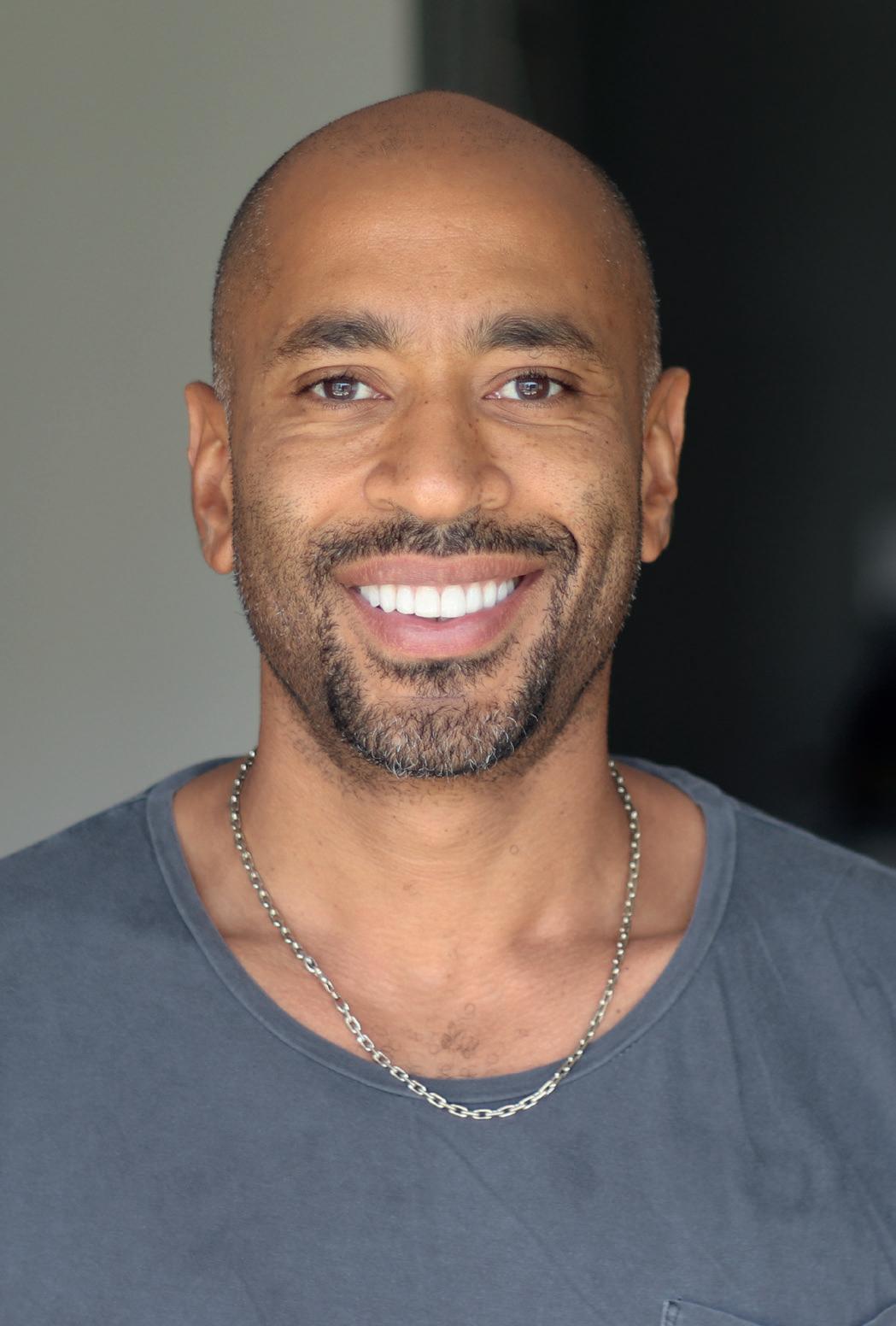
Tell us about Mettle
Mettle was the brainchild of Bear Grylls and Neil Smith, who wanted to address a gap in the market for services supporting men with their mental wellbeing. They came up with the idea for a mindfulness app incorporating meditation, breathwork and neuro linguistic programming (NLP). Designed in conjunction with Imperial College London, the Mettle app is research-based and curated to appeal to the sceptical male mind. Men can be difficult to engage in this sort of activity and need to hear things in slightly different ways.
I'm in charge of delivering meditation, Jamie Clements is the breathwork expert, we’ve got Paul McKenna for the NLP and Dr Alex George and Bear work on the motivational mindset.
You already feature as an expert on the Calm app, what drew you to Mettle?
I'm still with Calm, but Mettle is an important project for me, as I've always wanted to help men with their mental health. The stats are pretty alarming: 40 per cent of men say they feel low or worried on a regular basis. Almost 80 per cent of men have suffered from mental health symptoms, such as anxiety and stress or depression, at some point in their lives and almost 40 per cent of men have never spoken to anyone

HCM PEOPLE
PHOTO: METTLE
Okereke delivers meditation for men on the app

I want to get Mettle into health clubs, so we're aiming to to build some partnerships
Bear Grylls works on motivational mindset on the Mettle mental health app. Here with founder Neil Smith
PHOTO: METTLE
Team Mettle...
M EDITATION











































PHOTO: METTLE

PHOTO: METTLE
PHOTO:
PHOTO: METTLE
PHOTO: METTLE
18 Issue 1 2024 ©Cybertrek 2024 HCM PEOPLE
K
Chibs Okereke
BREATHWO R
E T
Jamie Clements
M OTIVATIO NAL MINDS
M ENTAL FIT N E SS
Bear Grylls
Dr Alex George
M INDHACK
Paul McKenna
/ JUSTIN OPPUS
METTLE
/
JOHN BRESLIN
Almost 80 per cent of men have suffered with mental health symptoms
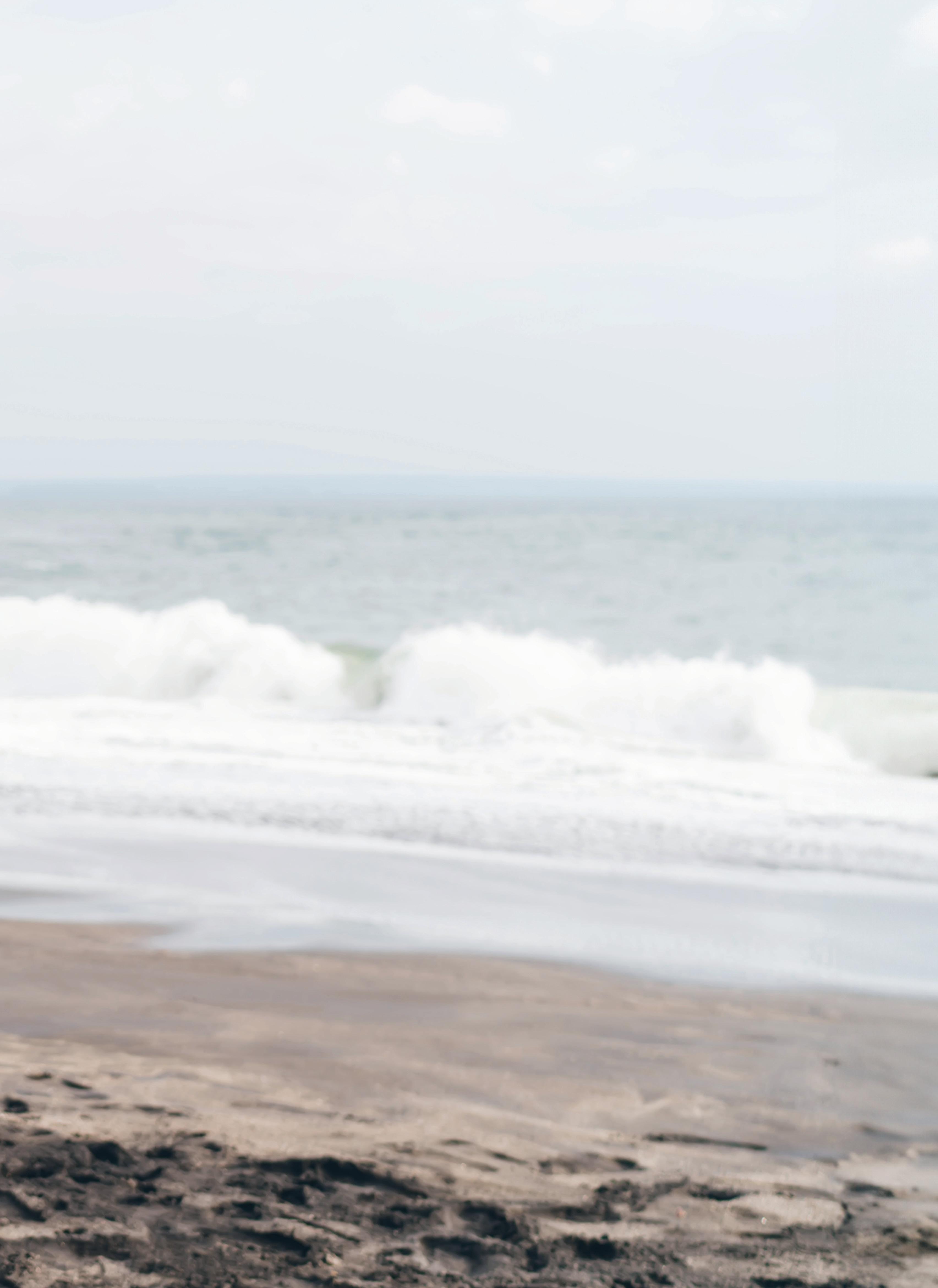
Every crap thing that's happened to me in my past has got me to where I am now
about their mental health. That's a lot of suffering in silence, so we need to get a handle on this issue.
Why do men find it difficult to talk about their emotions?
From an early age, men are taught not to express their feelings – it’s in our programming. If a boy falls over we encourage them to just brush it off. If a girl falls over we’re more likely to rush to comfort her. We need to become aware of that programming and then break it.
In the past men haven’t had role models talking about mental health, this is starting to change, with more male sports stars talking about their mental health difficulties.
Of course, the pandemic also had a negative impact for some and then technology causes stress and anxiety. Even though I love technology and AI, it does mess up a lot of people’s mental health, but we can harness it for the good of mental health.
The more conversations we have the better, but we can't just talk. We need to have some practical solutions and that’s where Mettle comes in.
How does Mettle target men?
Firstly, we’ve got Bear at the forefront and as he’s about as masculine as you can get, you can’t argue with his 'man' credentials! He's the perfect collaborator: everyone respects and likes him.
Beyond that, it's all about the language and it's very practical. So instead of saying breathwork, we introduce it as something the military use called combat breathing, which soldiers use to keep calm and in control of their body when their life is on the line. When we’ve done some combat breathing, I’ll tell them this is also yogic breathing, which has been around for 3,000 years, so they know where all these techniques come from.
How do you expect men to use it?
It can be used every day. It starts with an assessment to give the user a mental fitness score and then we use AI to send them in the right direction to build
that score. This might be via a breathwork exercise, a meditation, a motivational snippet or a mind-hacking tool from Paul McKenna. The average exercise is about five minutes, although there’s an option to go longer. We wanted to keep it short, sharp, edgy and to the point. Meditation and breathwork are really useful tools, but most men don't know about them.
How much time does the average person need to devote to mindfulness each day?
Think of it as mental fitness training, so you need to work harder at the beginning to build the muscle – say 20 or 30 minutes a day. Once you’ve built up that mindfulness muscle it’s about using it to support your life, to become more aware – especially of the stress response – so you can change your behaviour.
For example, if I'm in the middle of an email, and I notice my shoulders are rising, I’m able to relax myself. And if I can’t, I know I have to break for five minutes and meditate. So for me it’s more about micro breaks, being aware of my stress levels and then using the skills to rebalance myself.
In my old life, I relied on unhealthy coping strategies to deal with stress. Now if I’m stressed I step up my healthy habits: I'll go to bed early rather than stay up late watching Netflix and eating snacks.
The other skill I’ve been able to develop is whenever anything bad happens to me, I'm think, OK, what lesson am I'm going to learn from this? Because I know every crap thing that's happened to me in my past has got me to where I am now. That's not just positive thinking, it's legit.
How can club operators engage with you?
The more conversations health club operators can have about mental fitness the better. I want to get Mettle into health clubs and we're aiming to build some partnerships. In my eyes there's no difference between physical health and mental health. l More: www.bemettle.com
19 ©Cybertrek 2024 Issue 1 2024
PHOTO: SHUTTERSTOCK/GAUDILAB
Denbighshire Leisure’s turnover has increased by 25 per cent since 2021, so the developments have paid for themselves and more Jamie Groves
MD, Denbighshire Leisure

You won the Jan Spaticchia Award for the UK Leisure Framework recently, what is the framework and how did it come about?
In 2009, I’d been appointed head of leisure at Denbighshire County Council and the department was in a lot of difficulty. At the time it was considered one of the worst in Wales and we were struggling to afford the basics. I knew the only way forward was to think more commercially.
The idea for the UK Leisure Framework popped into my head while I was on holiday: a mechanism for local authorities which provides a turnkey solution to create facilities which then deliver a commercial return. Existing frameworks tended to be limited to construction, rather than geared to delivering a full leisure package.
The dual purpose was to help local authorities build sustainable facilities and to leverage investment into our cash-strapped department. In a local authority environment, trying to operate more commercially was an ambitious approach, but the Framework helped us completely transform our facilities and culture.
In 2019, Denbighshire Leisure launched as a company in its own right, and has continued to thrive, becoming recognised as an industry leader.
How does the process work?
Our partner, Alliance Leisure, manages and operates the framework and work with the local authority
HCM PEOPLE
Groves says the Framework can transform facilities
PHOTO: DENBIGHSHIRE LEISURE

to determine the right solution and the feasibility, work out business cases, establish costs and how the investment will be paid back, assessing what type of facility would be commercially viable, while still delivering on the clients’ objectives.
Once the business case is approved, Alliance Leisure commissions more detailed planning and eventually manages the construction. It works with local authorities to establish business case targets, so we can support marketing, rebranding of the entire offer. Alliance goes beyond the concept and the build to ensure the clients achieve the agreed business case levels.
What results have you seen so far?
We've delivered 105 projects, with a total value of £136m. Projects valued at £500m are in development or at the pre-construction stage.
The Framework has seen approximately £30m invested in Denbighshire over the last decade and
since its launch our company has grown from 250 to 750 people. Some of the leisure stock we’ve redeveloped had been on the cusp of closing.
Denbighshire Leisure delivered its SC2 waterpark, in Rhyl, through the Framework. An economic impact assessment of the investment found footfall through the town centre had increased by almost 300,000 visitors, so local businesses have benefitted and jobs have been created.
One major store in Rhyl, which was the biggest loss maker in the chain received a £1m investment as a consequence of the leisure development in the area and is now one of the busiest in the group.
Caravan parks also tell us they're full as a consequence of our investment. The developments have clearly delivered significant economic benefits to the town and surrounding businesses and helped generate confidence from the private sector to invest as well.
Our ageing theatre was costing close to £1m a year to run. With only 1,000 seats there’s a limit
21 ©Cybertrek 2024 Issue 1 2024
The Framework has seen £30m invested in Denbighshire
PHOTO: DENBIGHSHIRE LEISURE
As a non-statutory service, leisure has lost a lot of experienced senior people over the last decade
to how many acts you can attract because of the return. Using the Framework, we refurbished the theatre and developed the restaurant, which has now made the theatre commercially sustainable and enhanced the experience for audiences.
Further down the coast we transformed Nova, from a traditional pool into a multifaceted destination, with a Beach Hut restaurant and four Costa outlets. It has a new play structure, a pool, indoor restaurant and a premium health club. Nova went from a loss-making, ageing burden for the local authority to a profitable, seafront destination. The restaurant used to generate £20,000 a week and now generates £107,000 a week.
As a consequence of these investments, Denbighshire Leisure’s turnover has increased by 25 per cent since 2021, so the developments have paid for themselves and more.
Why do local authorities use the UK Leisure Framework rather than going solo?
Initially, there was some scepticism around the Framework – partly because I was only 30-years-old – but in light of its fantastic achievements, confidence in the process is now high. It delivers what it says – sustainable solutions and expertise from start to finish – and removes a lot of the risks.
Also, the leisure industry has suffered from a loss of expertise. As a non-statutory service, leisure has traditionally been passed around within local authorities, which sadly, over the last decade, has led to the loss of a lot of experienced senior people and experts in the field. The Framework offers professional leisure experts who help to plug this gap and sector specialists who make sure these facilities are the right fit and the right solution. These are passionate people who understand the current and future needs of the leisure offer.
How does it work financially?
Although the Framework receives a management and an administration fee, it is cost-effective for local

authorities, because the expertise offered at the front end means concepts and outline designs can be generated without incurring the huge and in many cases abortive, fees which have traditionally been the norm. If the concepts are taken forward through the various stages, local authorities will pay for the services associated with project management and construction.
How did you feel about winning the UK Active award?
Truly honoured. I’m incredibly proud of the amazing work we’ve led on over the last 10 years and appreciate the hard work, determination and dedication of the whole Denbighshire team which has brought us to this point. It was a strong field, so it was great to receive recognition for the company and an endorsement that DLL and Alliance Leisure have been doing something right for the past 12 years.
22 Issue 1 2024 ©Cybertrek 2024 HCM PEOPLE
Nova in Prestatyn has been turned into a leisure destination
PHOTO: DENBIGHSHIRE LEISURE
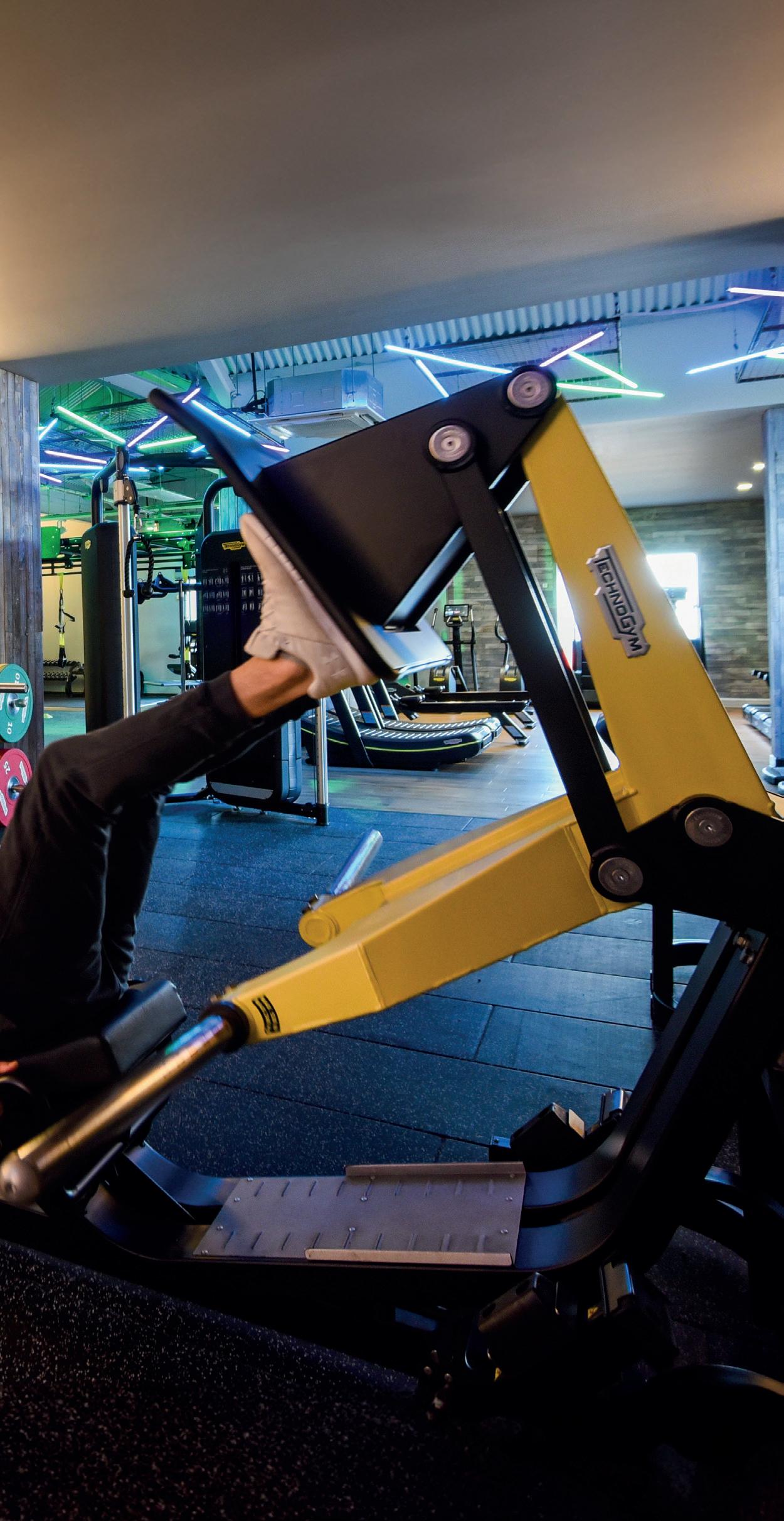
We need to thank UK Active for recognising how the Framework has changed the industry. It’s been a challenge and we’ve come up against lots of scepticism along the way.
The award recognises that we’ve delivered something which is making a significant difference nationally and something which has created a legacy for many generations to come.
The UK Leisure Framework has been a game changer in terms of developing leisure stock across the UK and I really didn’t anticipate it being this successful and this is largely down to our development partner Alliance Leisure which has helped us deliver a successful framework beyond anyone’s expectation. My original aim was to create something which could generate some investment into the noncommercial areas of our business and now the Framework is influencing the entire leisure industry.
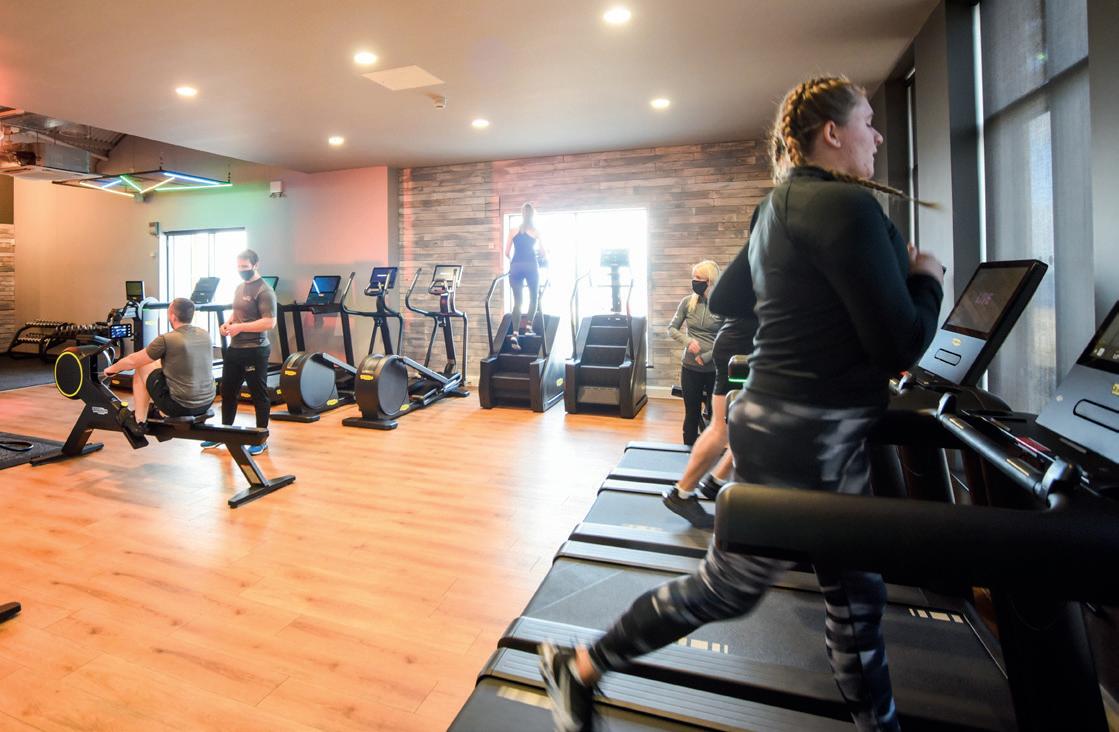
The Framework has had a national impact

A more commercial approach can help LA facilities thrive
How do you predict local authority leisure will fare this year?
Local authorities are facing tough times and leisure being a non-statutory function in the eyes of local government it’s always been exposed to risk to some degree.
This risk has increased at a time when budgets are so stretched, LAs are struggling to deliver statutory functions. But we’re used to dealing with austerity measures in leisure and it is a very resilient industry.
Even though consumers have less money due to the cost of living increases, we haven’t seen a real impact on our membership or footfall numbers as yet, and the spend per head is still reasonably consistent. Controlling cost will be key for most operators, alongside maintaining solid relationships with local authorities to manage contract expectations. l
23 ©Cybertrek 2024 Issue 1 2024
PHOTO: DENBIGHSHIRE LEISURE
PHOTO: DENBIGHSHIRE LEISURE






It's about health being everybody’s business and recognising that inclusion is everyone’s responsibility
Michelle Childs & Ross McGuigan
Life Leisure
What’s Life Leisure’s approach to the provision of physical activity in Stockport?
RMG: We launched a community strategy in 2022 which takes a whole systems approach to supporting Stockport residents in being more physically active.
The strategy runs to 2030 and has a huge focus on inclusivity when it comes to programming.
We’ve been given much more autonomy, told to take risks, work differently and not to come up with solutions. Instead, we give ownership to the community when it comes to making decisions about what they want to do.
We’re striving to positively address health inequalities and as part of this we’ve introduced

the role of inclusion officer, as well as training that’s specific to certain disabilities, such as autism, as well as disability awareness generally.
How were you working before?
What’s changed?
MC: Rather than being a delivery partner, we see ourselves as a promoter and a connector. We’ve moved away from the traditional way of working, which was a focus on sports development and are now focusing on communities.
A really important part of our work is putting people first, meeting people where they are and with a particular focus on people who aren't being seen.
HCM PEOPLE 24 Issue 1 2024 ©Cybertrek 2024
PHOTO: LIFE LEISURE
PHOTO: LIFE LEISURE
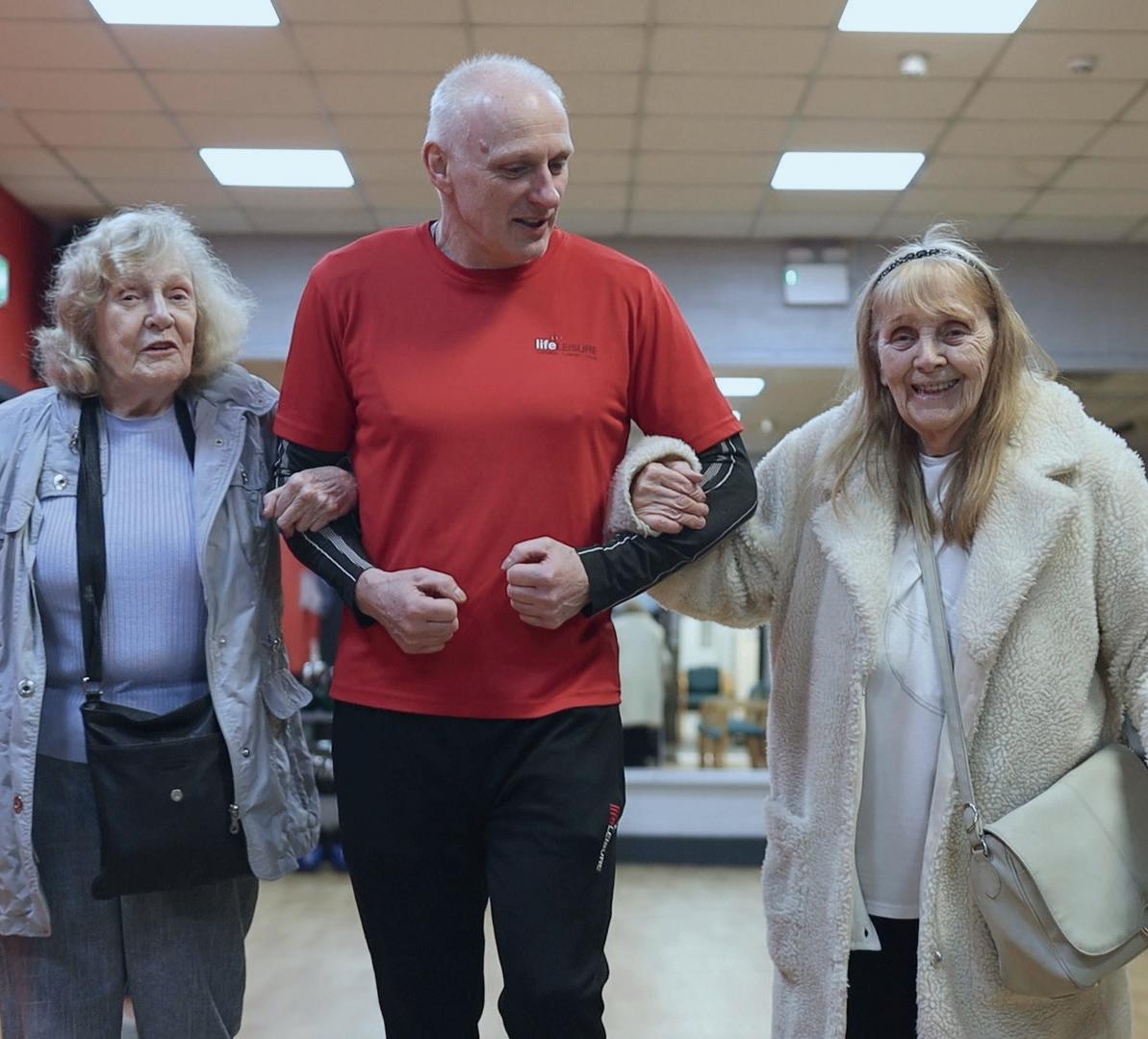
Traditionally, as a sector, we roll out one programme across the whole locality, but our approach is about understanding that each neighbourhood is different. We're the seventh or eighth most polarised borough in the UK, with areas of high affluence, as well as social deprivation.
Stockport has a 10-year difference between the life expectancy of a male in the most deprived area compared to the most affluent, despite their being just a few miles apart. So naturally we shouldn't be delivering exactly the same across all areas. That's where we've taken the neighbourhoodlevel approach: we want to connect with those communities and give them a better opportunity.
There are five key demographics we want to engage with: those with special educational needs and disabilities (SEND); inactive adults; ageing adults; families and young people and those with long-term conditions.
How do you find out what communities need?
MC: We connect with community champions and partner with trusted organisations that have relationships in those areas and are able to act as icebreakers for us to start speaking to people. We also attend community events and run an informal forum.
For example, teaming up with R Time and Youth Offending Service is giving young people the voice to
25 ©Cybertrek 2024 Issue 1 2024
PHOTO: LIFE LEISURE
Stay steady workouts led by Colin help older people avoid falls
It’s easier to secure funding when you can prove there is a need
shape the provision they want. This way of working and being person-centred has meant R Time received an additional £180k of Lottery funding over three years to continue to drive this really important work.
What changes have you made as a result of these collaborations?
We had some tough meetings with SEND families who gave us feedback that our swimming lessons were not inclusive and that they couldn’t access the inflatable sessions because their children were not able to swim.
We took that on board and now hold a two-hour event every six weeks, exclusive for SEND families, where we put all the inflatables out and have additional lifeguards.
When we put the expression of interest out, we had 250 families respond. We listened to feedback about how to make the session more inclusive and less overwhelming, which included making small modifications, such as turning off hair dryers. Going forward we hope to roll this out to more facilities.
RMG: To support the session we also put together a sensory booklet which details the journey of going to the swimming pool, which


26 HCM PEOPLE
Attendances at Brinnington have doubled
PHOTO: LIFE LEISURE
PHOTO: LIFE LEISURE

can be really beneficial for a SEND family in terms of what to expect and how to prepare.
MC: Another example is how we worked with volunteers to create a map around Brinnington. It’s basically a walking trail, which is a great way of getting people active, especially families. We’ve also created Halloween and Christmas trails. This is not the sort of work traditional leisure operators do, as it’s more like public health, but we’re working to bridge the gap between the two by doing engagement work.
RMG: The Active Communities team, in partnership with Age UK, also runs an OAP youth club to get older people active and relieve social isolation. Part of this are Confidence Walks around the sports hall. These appeal to those with mobility, or breathing difficulties, who want to be active but lack the confidence to walk outside.
They do a few exercises to help with strength and balance, have a walk, but also have the reassurance of there being plenty of chairs for a rest and people to chat with.
Life Leisure Impact ENGAGEMENT
There’s been a 46 per cent increase in people accessing Life Leisure from the 20 per cent most deprived areas of Stockport since April 2022
PILOT SCHEMES
Attendances at Brinnington – one of the most deprived wards in England and Wales and a Sport England and GM Moving local pilot delivery area – has doubled to almost 11,000 annual visits and growing
IPAQ RESULTS
93 per cent of participants who completed an IPAQ (international physical activity questionnaire) increased their physical activity levels by an average of 74 per cent when compared to baseline
EXERCISE REFERRAL
Since April 2022, there’s been a 43 per cent increase in exercise referrals, which supports those with long-term health conditions to better manage their condition through physical activity
27 ©Cybertrek 2024 Issue 1 2024
Life Leisure has worked with volunteers to create local walking trail maps


TEMPORARY PAGE
Hosting coffee mornings has helped encourage people through the doors who previously had a negative perception of the gym
We’ve also found hosting coffee mornings in an active setting has helped encourage different people through the doors, some of whom may previously have had a negative perception of the gym.
Is this a more expensive way of working?
RMG: No, it means money is spent in a targeted way, because we find out what communities want, then create the programme. It is easier to find funding when you can prove there is a need.
How do you measure success?
MC: We don’t have specific targets, it’s more about understanding who we’re motivating to take part rather than how many people we’re attracting We also look at what percentage of our visits come from target groups and if this percentage is proportionate to the cohort who live in Stockport. We measure the benefits of engaging in the activities,
however, the KPIs can vary depending on where the funding comes from – Sport England might want us to measure X Y and Z, whereas funding from public health commissioners might want something else, for example.
Should more local authorities work this way?
MC: I think we’re seeing a cultural shift and there are some good examples nationally. It’s about health being everybody’s business. Historically, there was a siloed approach, with health being limited to one department and fitness in the other, but where we get the most traction and have the biggest impact, is when everyone – from the lifeguard to the general manager – buys into the idea that everyone has a role to play in getting people active. It's about making being physically active the norm and recognising that inclusion is everyone’s responsibility. l Michelle Childs is head of health development and Ross McGuigan is Active Communities manager at Life Leisure
28 Issue 1 2024 ©Cybertrek 2024
HCM PEOPLE
Coffee mornings bring new people to the facilities
Life Leisure listens to the needs of the local community
PHOTO: LIFE LEISURE
PHOTO: LIFE LEISURE











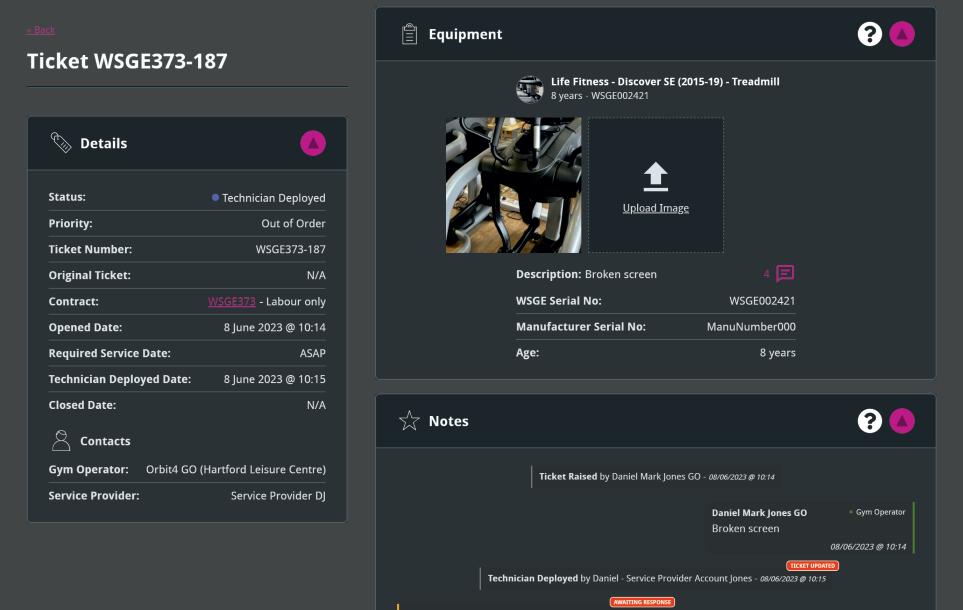


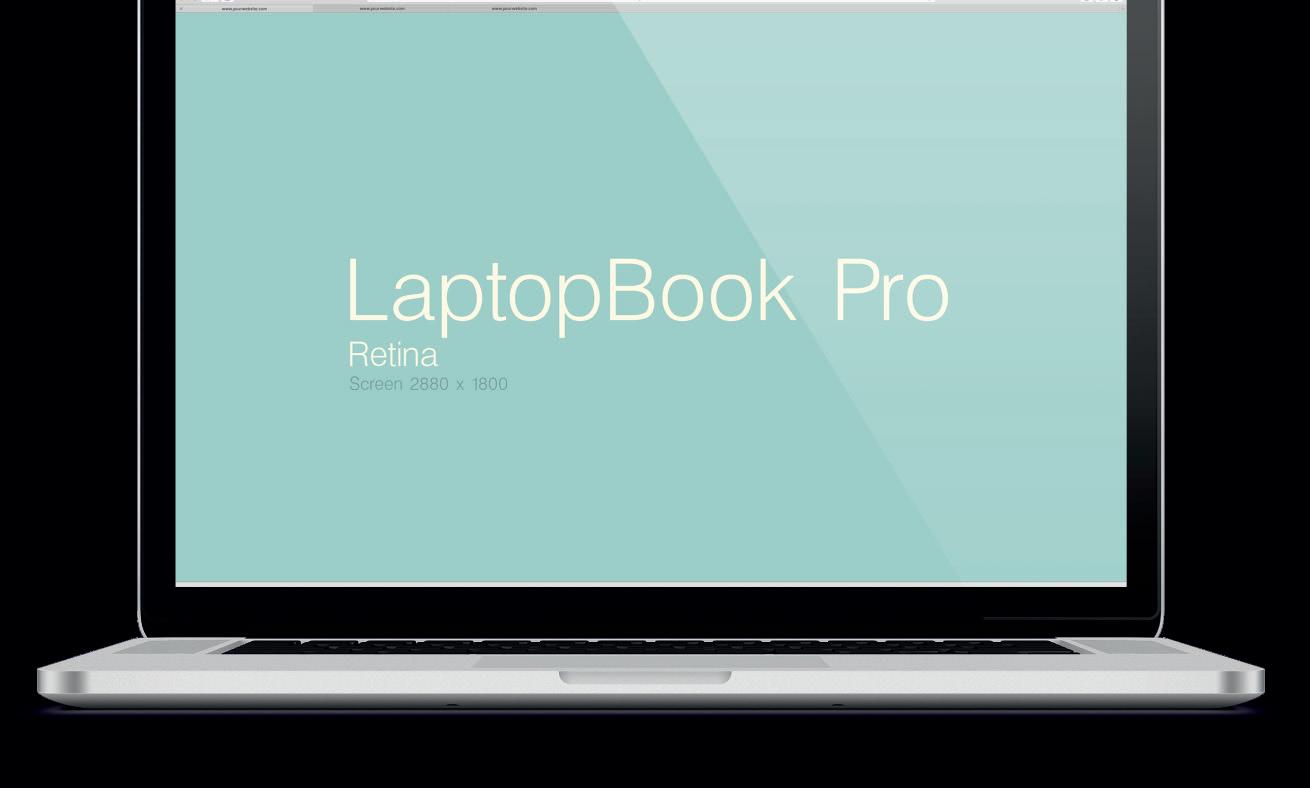
Tracy Anderson signs for Surrenne, London
Surrenne, a luxury private members club gym and spa launches in London in April, with membership costing £10,000 a year.
Spanning almost 2,000sq m across four floors, Surrenne is part of Maybourne Hotel Group’s new all-suite hotel, The Emory.
The first floor includes a 22-metre swimming pool, which features a sound system to allow in-water meditation, a spa café, sauna, steam and snow shower.
A state-of-the-art gym, kitted out by brands including Technogym, Woodway, Hydrow and Peloton, is on the second floor and Maybourne has promised to open its ‘little black book’ to secure the best visiting personal trainers.
Alongside the gym is a multifunctional studio for yoga and Pilates set against the backdrop of a Japanese Garden. There’s also a recovery area.
The spa is on the third floor, with a focus on longevity that

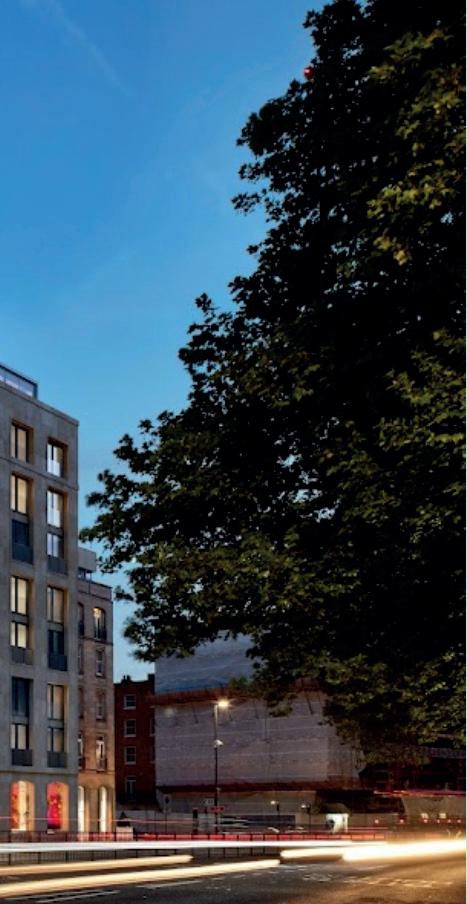
The Emory Hotel will feature a private members club called Surrenne includes a hamman, treatment rooms and relaxation area – with a hyperbaric chamber and cold plunge. The treatment menu features a 90-minute, four-hand ceremony, as well as Ashiastu massage which is delivered using the feet.
The fourth floor is dedicated to classes by fitness pioneer, Tracy
Anderson, who has a celebrity following for her sculpting method. Surrenne is her first London outpost.
Inge Theron, creative director of Maybourne, has brought together the concept , which blends modern science with a holistic health approach.
More: http://lei.sr/5A8h4_H
Nike Well Festival takes on Les Mills and Adidas
Nike is launching a one-day fitness, wellness and mindfulness festival in London in March, before taking the event around the world.
Scheduled to take place on 2 March, at the Woolwich Works, the Nike Well Festival is being organised by the Nike Well Collective, which was
launched last year to deliver lifestyle guidance through the company’s global community of trainers and coaches.
On the launch of its Collective, Nike said it was committed to being more than a global sports brand, but aspires to be a place for everyone to feel connected and included.
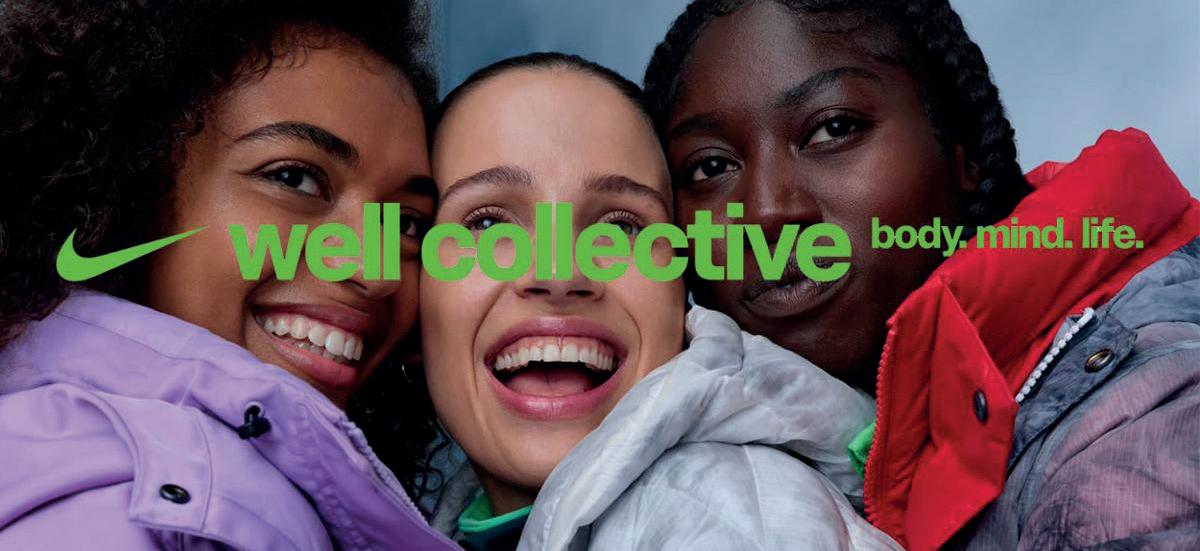
“Our ultimate goal is to help more people move, feel good in their bodies and connect with what matters most – a life well lived,” says VP/GM of Nike Women’s category, Amy Montagne.
The Collective is founded on five pillars of holistic fitness: movement, mindfulness, nutrition, rest and connection and the Festival’s line-up of events reflects this aspiration.
Nike trainers will run high energy workouts and community runs. There will be skipping with Jump LDN and a class with The Curve Catwalk, the UK’s first-plus size dance class.
Really Nice Sounds will perform a sound bath and Rosie Hall, founder of The Rogue Room, will lead a slow-flow yoga session.
news 30 Issue 1 2024 ©Cybertrek 2024
More: http://lei.sr/t4K7R_H
PHOTO: NIKE INC
PHOTO: MAYBOURNE/RSHP/GOOGLE
Nike has launched a global series of events
SATS releases ‘best financial results ever’
Last year set a new standard for SATS with record-high revenues, less debt and more visits, showing the policy of cost discipline and focusing on existing clubs is paying off.
In a presentation this morning, CEO Sondre Gravir says the company has enjoyed four consistently improved quarters, with record-high revenues of NOK 1,227m (£92m, $116.8m, €108.5m) for Q4 2023.
“SATS’ overarching strategy has remained consistent since our Capital Markets Day in Q4 2022,” says Gravir.

Despite the challenging macroeconomic situation people are continuing to invest in their health Sondre Gravir, CEO
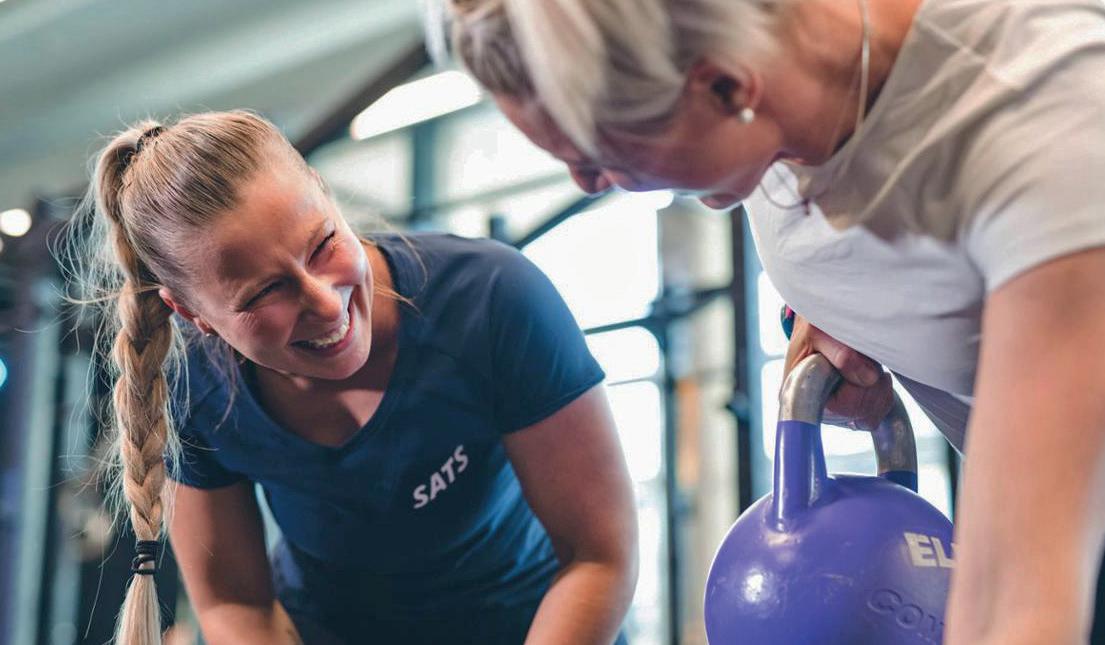
“This involves boosting the utilisation of the existing club portfolio by expanding the membership base, enhancing revenue per member and maintaining strict cost discipline.”
Full-year EBITDA before IFRS 16 grew from NOK 145m (£10.9m, $13.8m, €12.8m) in 2022, to NOK 614m (£46.2m, $58.4m, €54.3m)
in 2023, an increase of 322 per cent. Gravir adds that despite the challenging macro-economic situation people are still investing in their health, and members grew by 10,000 to 731,000 in the 276 clubs in Denmark, Norway, Sweden and Finland.
More:
F45 kicks o rollout of Vaura Pilates concept
Described by F45 Training as a “dynamic fusion of art and science to energise every cell of your body”, the first Vaura Pilates studio opened in New York City recently.

With light shows, ‘seductive lighting’, a luxe setting and ‘entrancing beats’, CEO at F45 Training, Tom Dowd, says Vaura Pilates brings an athletic vibe to reformer Pilates: “We’re creating a new full-body sensory experience unmatched by any other exercise regimen,” he says.
“Everything about our classes, from the studio design and luxurious amenities to the club-like mood lighting, work in harmony to create a space that inspires transformative results members will love and they’ll awaken muscles they never knew existed.”
F45 is clearly finding Pilates a lucrative model, having launched the FS8 Pilates concept in 2021 in Australia. “We’re thrilled to add another Pilates concept to the family
of F45 offerings for our growing fitness community, along with our other Pilates concept, FS8,” said Dowd.
Franchised by Travis Frenzel, Club Sports Group CEO, the 1,800sq ft space on NYC’s Upper East Side includes 28 Pilates reformers, showers and a beauty bar.
Four 50-minute classes are on offer. Signature class Total combines strength, endurance and stretching.
Stretch is influenced by Pilates and yoga and aims to improve mobility and flexibility and build strength.
Circuit is a high-energy calorieburner, which fuses strength, HIIT and stability training, while Fusion is a 50-50 class split between reformer and floor-based, functional movements.
31 ©Cybertrek 2024 Issue 1 2024 Get live news at www.HCMmag.com
http://lei.sr/7b5G2_H
More:
http://lei.sr/p6Y5S_H
PHOTO: SATS
PHOTO: VAURA PILATES
PHOTO: SATS
SATS has focused on member experience and improving product offerings
F45’s new dynamic pilates brand
David Lloyd ramps up growth with new openings
David Lloyd Clubs has been granted planning permission to develop a health and racquets centre in Swords, County Dublin as it pushes to grow its portfolio.
The project has been in planning since August 2022 when the first application was submitted to Fingal County Council.
This is the company’s second location in Ireland, with the existing David Lloyd Dublin Riverview earmarked for an upgrade.
The new site will be two-storey and include a tennis dome, padel courts, multi-use courts, indoor and outdoor swimming pools and group exercise studios. It will also have a spa garden – including an outdoor sauna – and a café/restaurant with an outdoor terrace and play areas.
The company is continuing to invest across its estate and on 19 February the west London club, Fulham Broadway reopened following an upgrade, with changes

David Lloyd is opening its second location in Ireland including a new gym and four group exercise studios for its proprietary concepts: Blaze, Mind and Body, High Energy Studio and Cycle Hub.
The 20m indoor pool has been refurbished and a spa retreat added with a salt sauna, rainforest experience shower and a hydrotherapy pool. The clubroom has also been revamped.
The company currently has around nine clubs in its development pipeline – two purchased and on-site and seven exchanged, subject to planning – and plans to build clusters in Brussels and Madrid. The new Ireland site counts as one of the nine.
More: http://lei.sr/c6v3c_H
Total Fitness launches women’s club concept

Total Fitness has launched a women-only concept called The Women’s Gym in Manchester, UK.
The new concept has been informed by interviews with more than 150 women and a wider research study in which more than 3,500 women detailed their attitudes and preferences.
Design of the space was based on this consultation process, with an emphasis on fostering empowerment and delivering personalised fitness journeys. Users can choose to work-out alone or with others and in mirrored or mirror-free spaces – whichever they find the most motivating.
“The Women’s Gym is a statement to women that we take their needs seriously,” says Total Fitness CEO,
Sophie Lawler. “We listened to thousands of women through our research and have applied what we learned in a very thoughtful way to create a gym that’s designed to help them feel at ease while working out. It’s a space where women can achieve progression and enjoy a full, uninterrupted workout, no matter the occasion, their frame of mind or life stage.”
Total Fitness has repurposed vacant space in its Whitefield club to create the new gym as a club-in-club set-up with its own access control and dedicated entrance. To further lessen feelings of intimidation, the new space will accommodate no more than 50 users at one time.
More: http://lei.sr/x9B8Z_H
news 32 Issue 1 2024 ©Cybertrek 2024
PHOTO: TOTAL FITNESS
PHOTO: DAVID LLOYD CLUBS
Total Fitness plans to roll out its new women-only concept
Frasers Group buys WIT Fitness assets
Frasers Group, owner of Everlast Gyms, has acquired the assets of WIT Fitness from administrators RG Insolvency, adding the brand to its portfolio.
A health club operator and sports retail specialist, WIT has strong CrossFit connections.
The company’s boutique gym in London – at One New Change, near St Paul’s Cathedral – will retain the WIT name, while WIT’s retail arm will complement Frasers’ Sports Direct sportswear retailing business.
It’s not yet known if Frasers will roll out more WIT locations as a second brand to complement Everlast Gyms. However there could be a good fit for the company, with WIT Fitness functioning as a premium offering, aligning with Frasers elevation strategy.
AI
WWIT Fitness appointed Matt Brewster as CEO in 2022, at which time founder, Dan Williams, moved into a chief brand officer role.
Under Brewster, the company did a crowdfund in Q3 2022 with plans for global expansion, telling investors in September 2022 that the business was ‘in great shape’ with “400,000 customers and revenues that had grown five times over”.
Accounts filed for that year show the company ended up losing nearly £4m in the 12 months to December 2022.
The business had also been backed by VGC, but the company is no longer showing WIT as being part of its portfolio.
More: http://lei.sr/d5E9z_H
‘could help shift from cure to
ith pressure on medical services at an all time high, the Tony Blair Institute for Global Change is calling for investment in disease prevention – treating people when they are asymptomatic.
The institute says governments are aiming at the wrong target by dealing with late stage symptomatic disease, rather than managing illness in its early, asymptomatic phase. Diagnostics and therapeutics, combined with new public health policies, could change this trajectory.
According to the new report from the institute, called Moving From Cure to Prevention Could Save the NHS Billions: A Plan to Protect Britain, although people are living longer, they’re not living more healthily –7.77 million people were waiting for medical treatment at September 2023.
This situation is causing a drag on the economy and ruining the quality of life for individuals living with chronic diseases that compromise their ability to work.

prevention’

By age 75 the average Brit is 60 per cent more likely to have two or more significant health conditions, with this increasing to 75 per cent for those between the ages of 85 and 89.
The Blair thinktank says a change in approach could prevent this, halting disease progression before irreversible damage is done. The risk factors which cause heart attacks, strokes,
dementia and diabetes in later life present much earlier in the form of raised cholesterol, hypertension and increased body mass.
Genomics and AI could assess the lifetime risks carried by individuals in order to create personalised prevention plans, the report suggests.
More: http://lei.sr/F4C2Y_H
33 ©Cybertrek 2024 Issue 1 2024 Get live news at www.HCMmag.com
PHOTO: ANDREY_POPOV/SHUTTERSTOCK
PHOTO: WIT FITNESS/FRASERS GROUP
The WIT Fitness boutique in London
The Tony Blair Institute is calling for prevention to be an urgent priority
Andy Reed Think Tank launches 2024 manifesto
In a newly-launched manifesto, physical activity sector stakeholders are calling for the next UK government to promote active environments, cut red tape and elevate the status of PE in schools.
The Road to the 2024 Election Manifesto has been put together by independent body Sports Think Tank, which asked 29 organisations to create resource-neutral policies they would like to see the UK’s political parties champion in both their upcoming manifestos and the first 100 days in office.
The document details more than 100 policy ideas for physical activity, wellbeing and sport, including elevating PE status within the school curriculum; incorporating active environments into planning policies; addressing deep-seated inequalities; embedding physical activity in further education and moving the sector towards health and wellbeing, especially through prevention in integrated care systems.
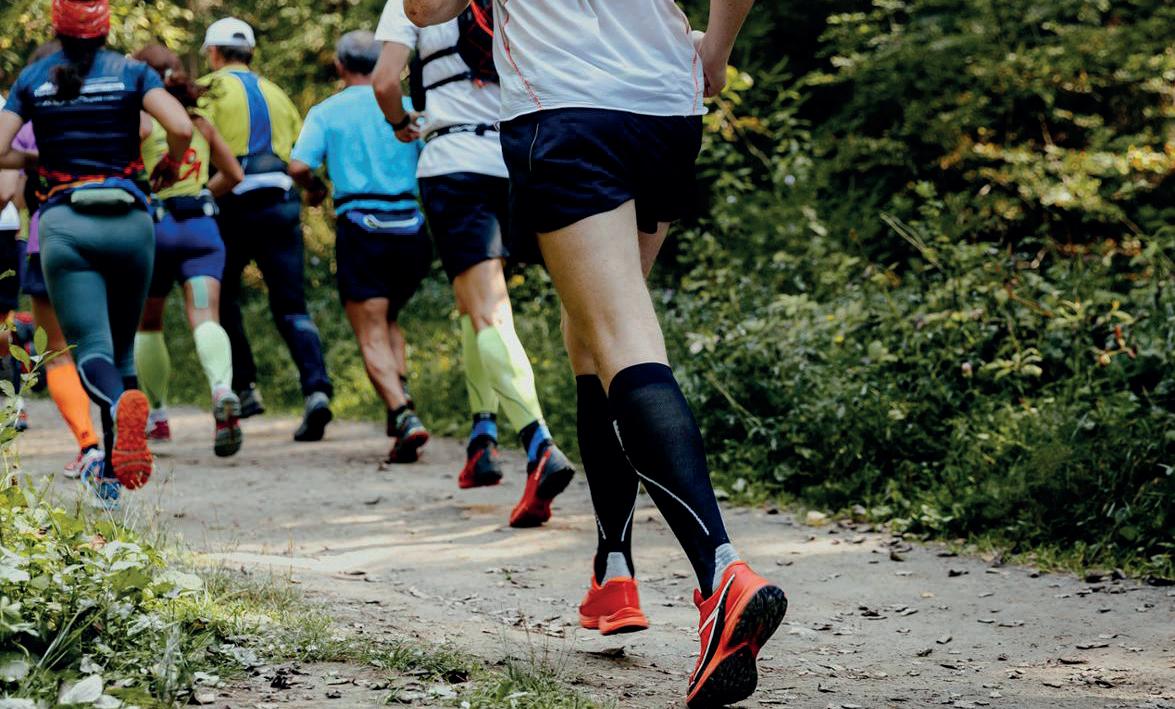
Cost-neutral policies suggested include the creation of more active environments
Andy Reed OBE, founder and director of Sports Think Tank, says funding challenges were considered: “We asked our contributors to produce policy ideas that remain resource-neutral for the government over the budget cycle. While it’s easier to ask for large policy wins, with resource implications, we felt using the
principle of marginal gains – so well used in sporting circles – was a fresh, much-needed approach. We’re aiming for the work we’ve done in collecting these policy ideas to be the start of an iterative process involving both the contributors and policy makers.”
More: http://lei.sr/g9T4p_H
No wealth without health – UK Active chief

As the UK’s political parties set their sights on the general election in 2024, UK Active CEO, Huw Edwards, says there can be no economic growth without better health in the population.
“Economic growth will be a dominant political issue this year,” he said. “The issue of ill health among working-age people needs to be a national priority for the leaders of both political parties as they seek to form the next government.
“This is an issue that either Sunak or Starmer must begin to address as PM in 2024. We can no longer afford to accommodate our poor national health and how we address it must now move from the fringes to the centre of the debate about our country’s future,” said Edwards.









Economic growth will be a dominant political issue this year
Huw Edwards, CEO, UK Active
“They need to understand there will be no wealth without health.”
Poor health among working-age people cost the UK economy £150bn a year in 2023 (equal to 7 per cent of GDP) a recent Times Health Commission study found.
More: http://lei.sr/V4W5D_H
news 34 Issue 1 2024 ©Cybertrek 2024
PHOTO: SHUTTERSTOCK/NEBOJSA TATOMIROV
PHOTO: SHUTTERSTOCK/REAL SPORTS PHOTOS
PHOTO: UK ACTIVE
Wealth generation depends on nations having healthy populations
Farrar: NHS ‘needs physical activity sector’
Mike Farrar, chair of UK Active, has called on the UK government to deploy the physical activity sector to support the health service and tackle the UK’s pandemic of poor health and the sluggish economy.
Speaking at the Active Uprising conference in London, Farrar warned Prime Minister Rishi Sunak and Labour leader Keir Starmer there would be “no growth without health” and that any future government must make physical activity a central part of both its health and economic strategies.
“We’re losing the battle for the nation’s health, but it doesn’t have to
I’m calling on party leaders to deploy the physical activity sector to turbocharge the economy.
Mike Farrar, chair, UK Active
be this way,” said Farrar. “I’m calling on our party leaders, as a matter of urgency, to deploy the physical activity sector to help save the NHS and turbocharge the economy.
“The road to a better NHS, a healthier workforce and a happier Britain lies at the heart of every community – in our nation’s health clubs, swimming pools and leisure centres,” he said.
“Physical activity is one of our best weapons in the battle against sickness and disease. The evidence is irrefutable – put physical activity in your strategy.”
A quarter (25.8 per cent of the population in England is classed as inactive (averaging less than 30 minutes of exercise a week).
More: http://lei.sr/c6F2Y_H


Fixing the social care crisis is ‘key to success’
Solving the UK’s social care problem is the key to overcoming the financial challenges facing public sector leisure, argues industry veteran and social change agent, Martyn Allison.
Writing in his annual industry analysis, Allison says there could be a positive future ahead for public sector leisure if change is embraced. However, a radical new approach is needed, requiring a mindset shift and further leadership development.
The financial squeeze which has burdened public sector leisure since the introduction of austerity and which has been exacerbated by inflation, high energy costs and the cost of living crisis has led to widening health inequalities, making access more difficult for the demographics which need these services the most.
Allison says financial pressures could result in the biggest reduction in public sector sport and leisure infrastructure in 50 years.

“Management alone cannot deal with the complexity and uncertainty we face,” he says. “We must stop relying on our outdated models of management and skill development and embrace system leadership as the only way to secure a future for this part of the sector in this complex world.
“We have to stop asking the health system to fund what we currently
do and start asking what we can do together to address common problems.”
“Repeating the same message does not seem like a good idea to me.” said Allison, “I think we should join forces with others to make a composite demand for all political parties to solve the social care problem once and for all.”
More: http://lei.sr/E5K4j_H
35 ©Cybertrek 2024 Issue 1 2024 Get live news at www.HCMmag.com
PHOTO: SHUTTERSTOCK/BELUSHI
PHOTO: LIZ TERRY
Mike Farrar’s recent address at the Active Uprising conference in London
A solution for social care costs would benefit public sector leisure
Will next generation of wearables be jewellery?
University of Washington researchers have created a wireless wearable in the form of a thermal earring that continuously monitors a user’s earlobe temperature.
In a study of six users, the earring outperformed a smartwatch at sensing skin temperature during periods of rest. It also showed promise for monitoring stress, eating, exercise and ovulation.
About the size and weight of a small paperclip, the earring has a magnetic clip that attaches one temperature sensor to a wearer’s ear, while another sensor dangles about an inch below, estimating room temperature.
The earring can be personalised with fashion designs made of resin, without negatively affecting its accuracy.
Co-lead author Qiuyue (Shirley) Xue, a UW doctoral student in the Paul G Allen School of Computer Science & Engineering says many people find smartwatches and rings unfashionable, bulky

The University of Washington’s prototype thermal earring or uncomfortable so earrings could be a viable alternative.
She said: “I like to wear earrings, so we started thinking about what unique things we can get from the earlobe. We found that sensing the skin temperature on the lobe was much more accurate than the hand or wrist. It also gave us the
option to have part of the sensor dangle to separate ambient room temperature from skin temperature.”
In small proof-of-concept tests, the earring detected temperature variations correlated with eating, exercising and feelings of stress.
Adidas and Bumble tackle ‘gymtimidation’
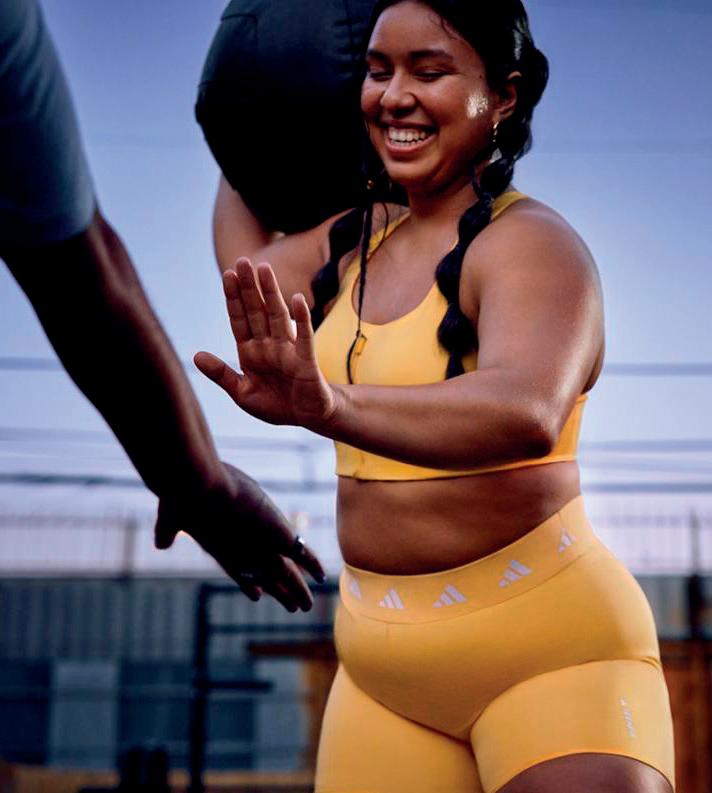
Sportswear giant, Adidas, and social network app, Bumble for Friends, have collaborated to help people find gym buddies.
The partnership has been formed in response to international research commissioned by Adidas into ‘gymtimidation’.
This found the main reasons for being nervous about joining a gym are fear of being judged (almost one in five); not being confident about how equipment works (one in three); uncertainty about how to push to the next level (more than one in four) and having no one to work out with (one in three.)
Having a gym buddy provides a good solution for these issues. Seven out of 10 said having a gym partner helps them to overcome their feelings
of discomfort; six out of 10 said they would be more motivated and half said they would work out more often.
As a result of this new partnership, people looking for local workout mates can use Bumble for Friends and add “Adidas gym buddy” as an interest badge to their profile.
“At Adidas, we know that nextgen athletes can be pressured by negative-self talk which can form a barrier to training, so disarming these self-limiting beliefs with community-first solutions is important to us,” says Aimee Arana, GM for sportswear and training at Adidas.
“Partnering with Bumble perfectly supports our mission in helping athletes of all levels.”

36 Issue 1 2024 ©Cybertrek 2024 news Sign up at www.FitTechGlobal.com/signup
More: http://lei.sr/n4q3r_H More: http://lei.sr/6P4E8
PHOTO: ADIDAS TRAINING
PHOTO: RAYMOND SMITH/UNIVERSITY OF WASHINGTON
Having a gym buddy helps to overcome feelings of ‘gymtimidation’














THE B2B EVENT THAT GETS THE NATION MOVING WWW.ELEVATEARENA.COM The UK's largest annual trade event dedicated to physical activity, health and performance. REGISTER FREE 250 5000+ 200+ 1000+ Exhibitors Attendees Speakers Products
I always say we’re a 25-year overnight success story
Sarah Watts
As Alliance Leisure celebrates its 25th anniversary, its founder and CEO tells Kate Cracknell why Alliance will never build another leisure centre

What led you to create Alliance Leisure?
I was working with Bristol City Council, looking after its leisure stock and had three children in five years. I did some consultancy work during my maternity leaves and met a chap called Peter Todd, a financier who became my business partner for the first few years of Alliance Leisure.

I was chatting to him about how challenging it was for the public sector to compete with the emerging private sector; at the time, 25 years ago, local authorities didn’t have any access to funding and even then their buildings were beginning to age.
The original proposition we took to market was finance-based: borrow £100k to turn your squash court into a gym, for example, and you’ll have to repay £2,100 a month. However, in addition to providing the funding, we’ll also drop in a support team to get you the members you need to generate enough revenue to pay back those original finance costs and create a surplus.
I went around knocking on doors, telling people about this new funding mechanism, but
PROFILE
PHOTO: ALLIANCE LEISURE
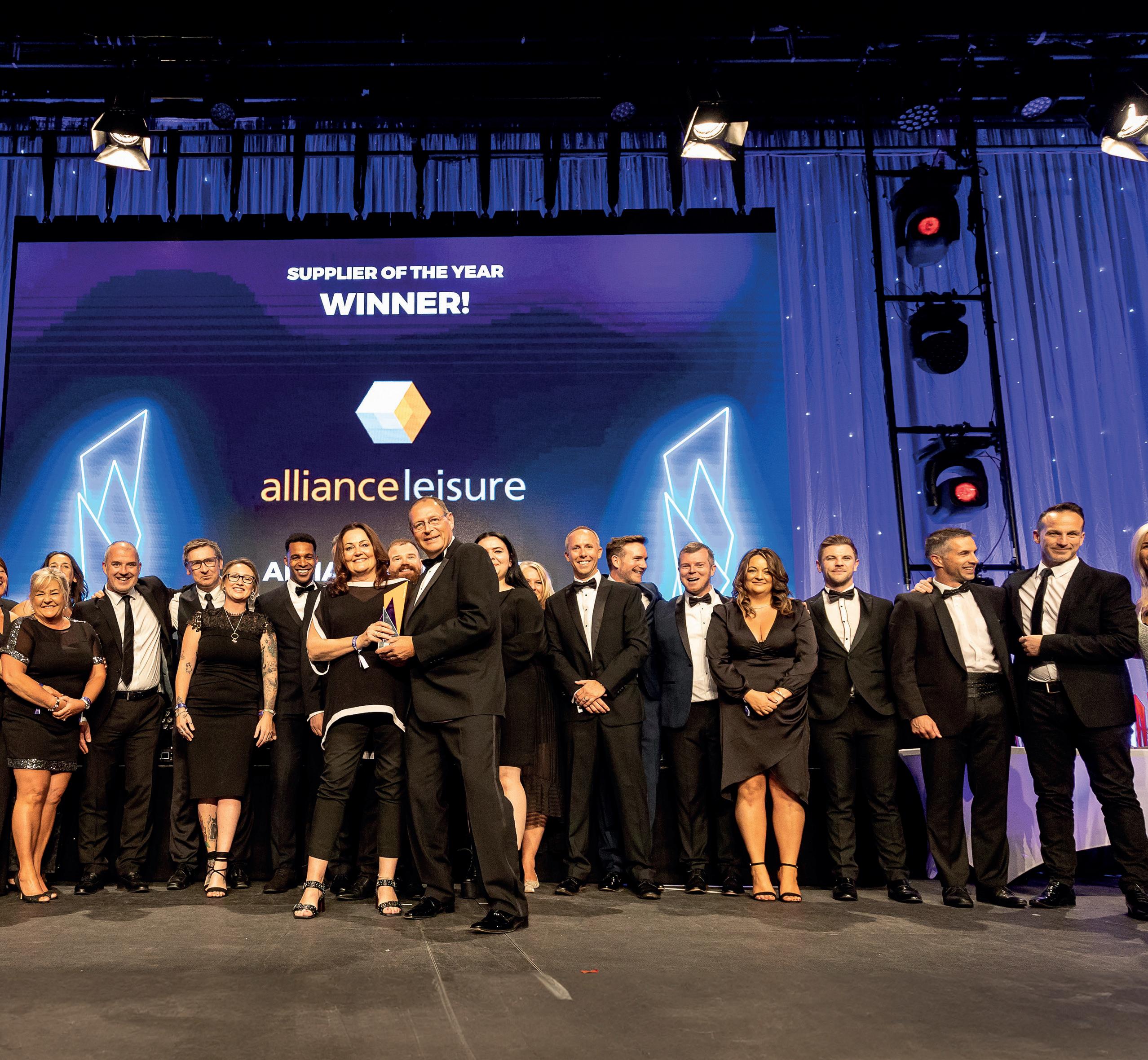
it was really difficult, because in the public sector, no-one wants to be the first.
But we got a lucky break. In Kingston upon Hull, the council had told its leisure department it could have £1m to develop three leisure facilities, then at the last minute – with builders already organised and the equipment on order – the money was pulled. Somebody remembered this mad woman who’d been talking about financing and I got a phone call asking if we could fund the £1m. I said yes – then put the phone down and took a deep breath! – but we managed to pull it off.
How has the business evolved?
For the first 15 years, Alliance was all about refurbishments and repurposing existing facilities.
If we had a product that only worked if people had lots of money, we’d be out of business by now
After 25 years, Alliance still has high NPS scores and a huge amount of repeat business
We started with squash court conversions, then mezzanines and gyms, and from there into much bigger repurposing projects, mainly with a commercial undertone – that is, looking at how to make the facilities perform better financially.
We were also still providing financing for a while. But then in 2004, the PWLB – Public Works Loan Board – devolved borrowing responsibility to local authorities and became a really cost-effective source of money for councils. There we were, a funding partner, and suddenly our clients had access to much cheaper funding than we could provide. We had to quickly evolve, becoming a development partner. The market had never had a development partner and didn’t know it needed one. Luckily, we managed to persuade people they did.
39 ©Cybertrek 2024 Issue 1 2024
PHOTO: ALLIANCE LEISURE / DARREN HARVEY PHOTOGRAPHY
The game-changer was the UK Leisure Framework which enables local authorities to work with Alliance without going through a competitive procurement process
This was a much more proactive proposition than our financing model, which had been about providing money for projects people had already decided they wanted to do. Our new development partner proposition was about working together, looking at each opportunity and creating propositions we knew would work commercially.
It was less about social outcomes at that time, more about how we could make existing spaces generate more revenue. As an example, a standard four-court sports hall would generate approximately £60k a year through badminton, volleyball and five-a-side bookings. But install a mezzanine, with 10-pin bowling underneath and fitness on top and that same space could generate £600k a year.
We were the first company to put spa, 10-pin bowling, clip and climb, high ropes and TAGactive into the public sector, taking spaces that financially didn’t quite work and driving in a new financial model.
How did things develop?
The next stage of our evolution came in 2018 with the rebrand of our support division, TA6 – a team that focuses on the branding, marketing and launch of new centres, sometimes embedding impact sales teams, as well as providing ongoing support for the operators in the shape of training, mentoring, mystery shops and so on.
It’s also TA6 that does the SWOT analyses, demographic profiling and competitor audits for new projects while also supporting the initial community consultations and then letting the community know what’s coming.
Alliance is uniquely positioned in the market as a development partner, so we have to bring huge added value into our proposition. We have to give councils
really strong reasons not to solely use a construction company to build the facilities themselves, so we hold their hand from the moment they have the first germ of an idea, through to cutting the ribbon in the opening ceremony – and beyond if required, providing embedded, ongoing support over subsequent years.
It’s really important to us that when we build something, it works. There’s a fairly limited pool of people we can sell to, so we have to build facilities that are relevant, we have to properly support the operators and we have to deliver on our promises.
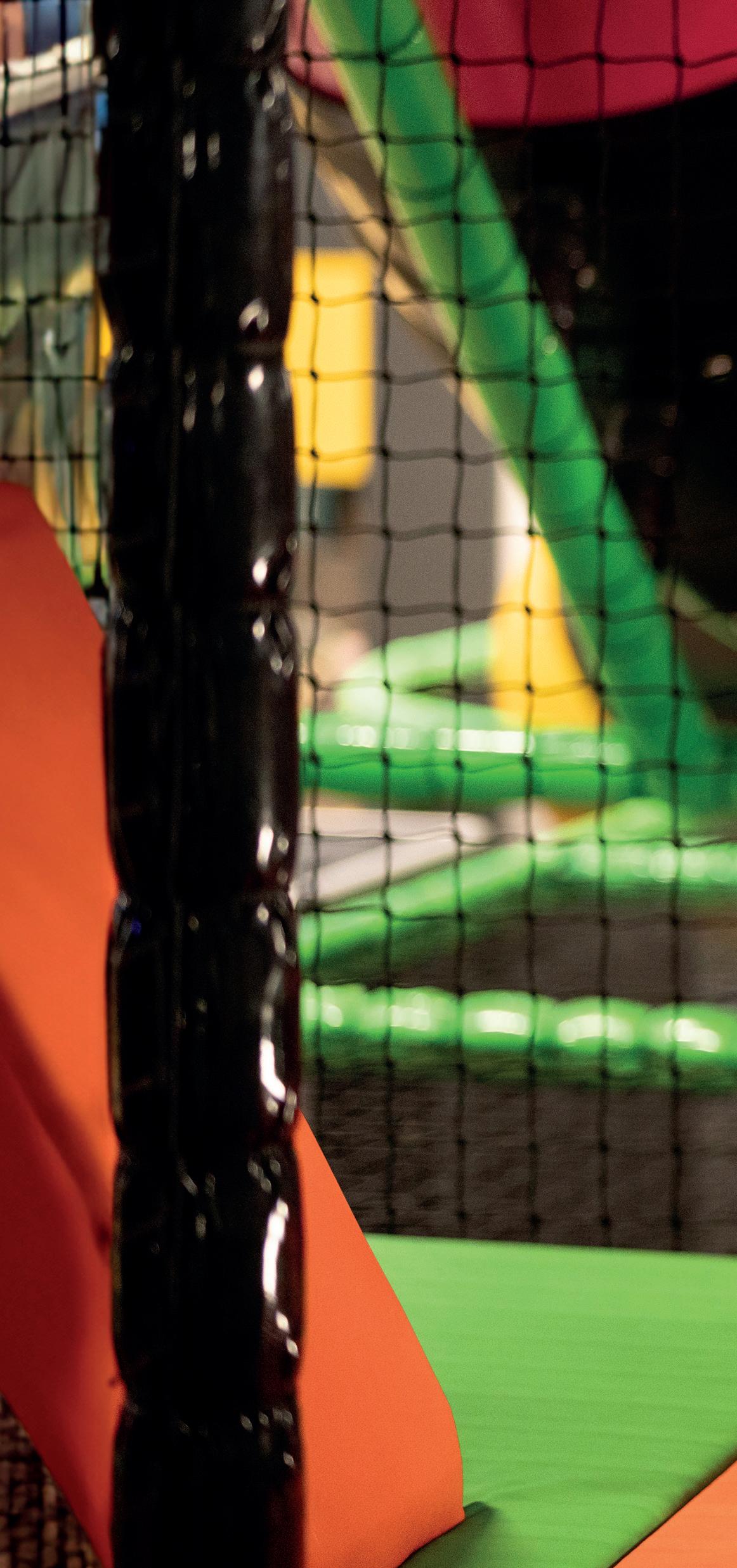
We do all of that, which is why Alliance is still going strong 25 years on, with really high NPS scores and a massive level of repeat business.
We rarely fund projects now, though. Most facilities are funded either using ‘free money’ – Levelling Up or Towns Fund funding, for example, which we’re doing a lot of – or by councils borrowing money.
You also do new-builds now.
Tell us more about that Yes, and doing new-builds has been transformational for Alliance. Our average deal size used to be around £1m, then £2m. Now we’re looking at projects in excess of £40m.
PROFILE 40 Issue 1 2024 ©Cybertrek 2024
In the last eight years, turnover has gone from £7m to £90m, with a trajectory towards £150m
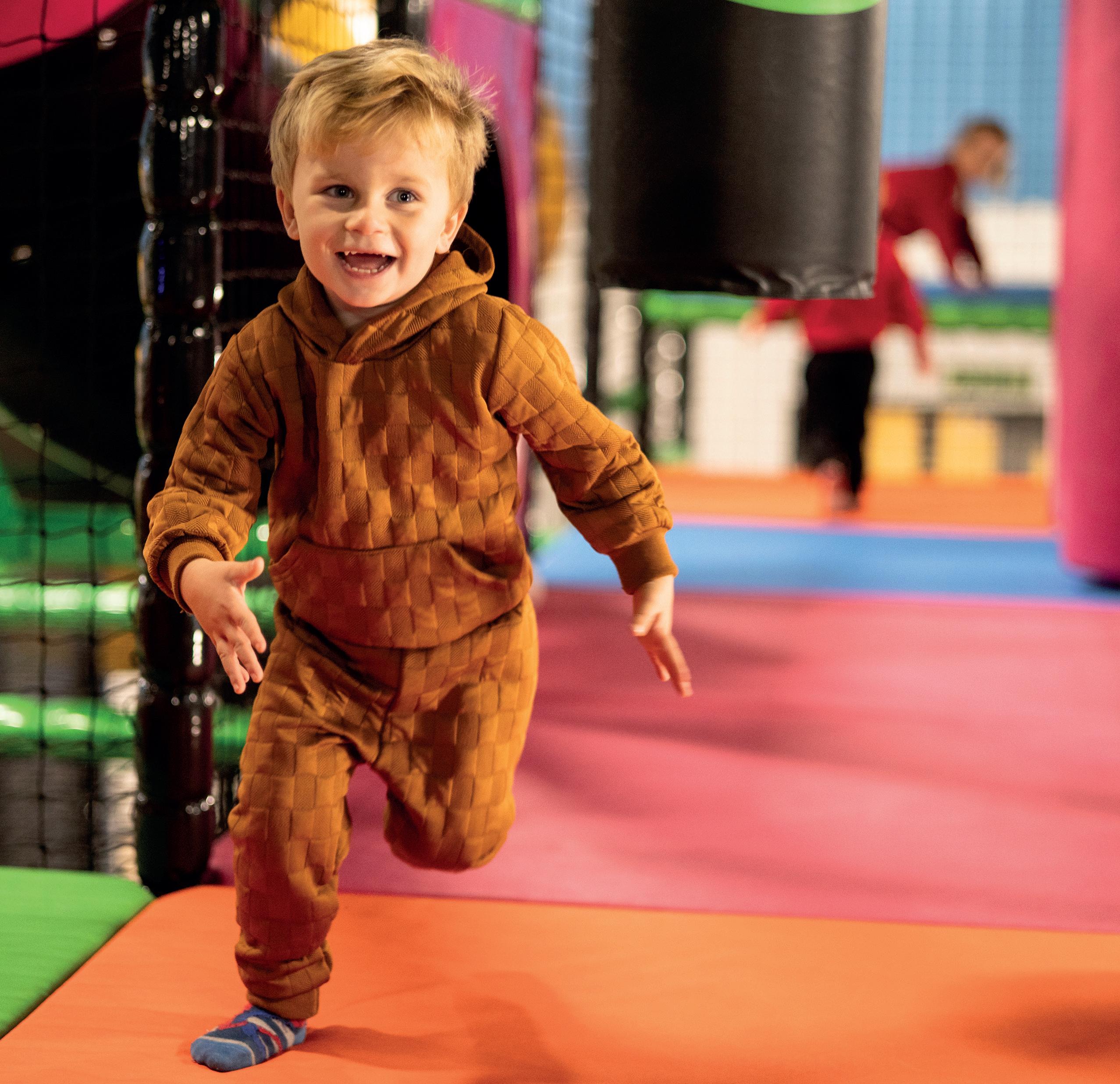
Today, Alliance repurposes, remodels and develops new wellness facilities that meet social needs and objectives, are relevant and accessible to a much wider community than the old sports centre proposition and that have a commercial foundation, so they’re sustainable.
And we don’t just build things now. We also advise on everything from the security of the car parking to the signage around the building, from the spa treatment menu and products to the café menu, what’s needed to service that menu, number of covers and what the gross profit will look like.
We’re not operators ourselves, but we create a manual for the operation of the facilities we build.
Tell us more about your growth.
In 25 years, we’ve completed over 230+ developments with an investment value of £340m. But in the last eight years, our turnover has gone from £7m to £90m and we’re on a trajectory towards £150m.
We currently have £500m of projects in various RIBA stages, from early feasibility studies through to construction. That’s about 80 projects.
I always say we’re a 25-year overnight success story. Everyone keeps telling us we’re everywhere now, but it’s taken 25 years to get that level of traction.
The big game-changer was the UK Leisure Framework – owned and managed by Denbighshire Leisure – which enables any local authority in the UK to work with Alliance without going through a competitive procurement process. This can often take six months off the lead-in time to a project, which can help mitigate inflation.
Developments include city-wide transformation plans like those with Durham and North Yorkshire councils. In Durham, we’ve repurposed four facilities and are approaching delivery of the first new build, with potentially two more coming later. This all forms part of a £100m+ programme that will transform the region, with multiple facilities for the community.
41 ©Cybertrek 2024 Issue 1 2024
PHOTO: ALLIANCE LEISURE

Then there’s the UK’s Levelling Up legislation, which has been a massive opportunity for us. A lot of Levelling Up has community wellness and health facilities at the heart of the bids, and we’ve delivered a fair few of those. One project we’re looking at at the moment is worth over £45m.
What have been your most memorable projects?
Pendle Wavelengths was one of my absolute favourites: the most beautiful spa which we built in one of the poorest areas of the UK. It really shouldn’t have worked and people said we were mad building it, but it did work and has continued to thrive.
Salt Ayre Leisure Centre in Lancaster is another memorable one. The site was losing £800k a year, but with an investment of £5m we managed to get it to break-even, which meant it was forever protected. We added about 10 different revenue streams and put the café at the heart of the building, making it a real community-focused facility.
King George’s in Brentwood I really liked, too. We brought in splash pads and built a really lovely pavilion with TAGactive, a sensory room and great play facilities. That’s been a big success.
And then it would have to be our first big new-build, which was with Sevenoaks District Council in Kent. That project really made me reflect on our journey,
from humble beginnings working from my bedroom, with three small children and no real business plan, doing small squash court conversions – our first project had a budget of £68k – to now building this fantastic, innovative, £20m community facility.
What role do you play in shaping each development?
We’re quite influential, I think, because we work across the whole of the UK and can see what works and what doesn’t. We’ve identified what ‘good’ looks like.
We’re also very involved at the initial consultation stage. We do a lot of work with non-users – they’re the people we actually need to drive into our centres – and with strategic partners, such as health organisations, active ageing charities and so on. We conduct proper research to make sure what we’re putting on the table truly delivers what the community needs and appeals to a wider proportion of the population.
In our consultations, we focus less on what facilities people think they want and more on outcomes. Do people want to be active as families? Do we need to address loneliness, particularly among older adults, by creating spaces where you can talk with like-minded people?
Once we’ve established the desired outcomes, we design a facility mix that delivers on that agenda. Because what you build has to be relevant, and in
PROFILE 42 Issue 1 2024 ©Cybertrek 2024
Alliance’s first major new build was a £20m community site in Kent
PHOTO: ALLIANCE LEISURE
At lot of Levelling Up has community wellness at the heart of the bids

the past, arguably a lot of what’s been built in our sector hasn’t been relevant – at least not to the wider population. Good quality public sector facilities have a massive part to play in the health of the nation and quality of life outcomes, but this has to be integral from the start of the design process.
So, what’s the opportunity now?
The landscape is really changing. We still need enough commerciality in what we build to protect it, but the two big drivers now are carbon reduction and delivering on the health and wellness agenda.
We all know how big an issue the nation’s health is: more than 7 million people on NHS waiting lists, high levels of obesity, diabetes, musculoskeletal issues, an ageing population living longer but in poor health.
Our sector is starting to better deliver on some of these challenges, pivoting away from leisure to align
I don’t think Alliance will ever build another leisure centre. We’ll only build active living and wellness centres
with wellness and the health agenda. And it’s coming from the top: from government, from UK Active bringing in Mike Farrar as chair with his healthcare background, from Sport England debating whether it should even be called Sport England. There’s starting to be much better strategic alignment.
What this means in practice is that I don’t think Alliance will ever build another leisure centre. I think we’ll now only build active living centres and wellness centres.
What will these new centres look like?
Historically, we’ve already had co-location: a doctor’s surgery here, a library there, a gym over there. All in the same building, but not really linked.
Better than that is integration, where thought goes into how the different services interact to really live and breathe wellness. If there’s a café, for
43 ©Cybertrek 2024 Issue 1 2024
PHOTO: ALLIANCE LEISURE
What you build has to be relevant and a lot of what’s been built in our sector hasn’t been relevant to the wider population
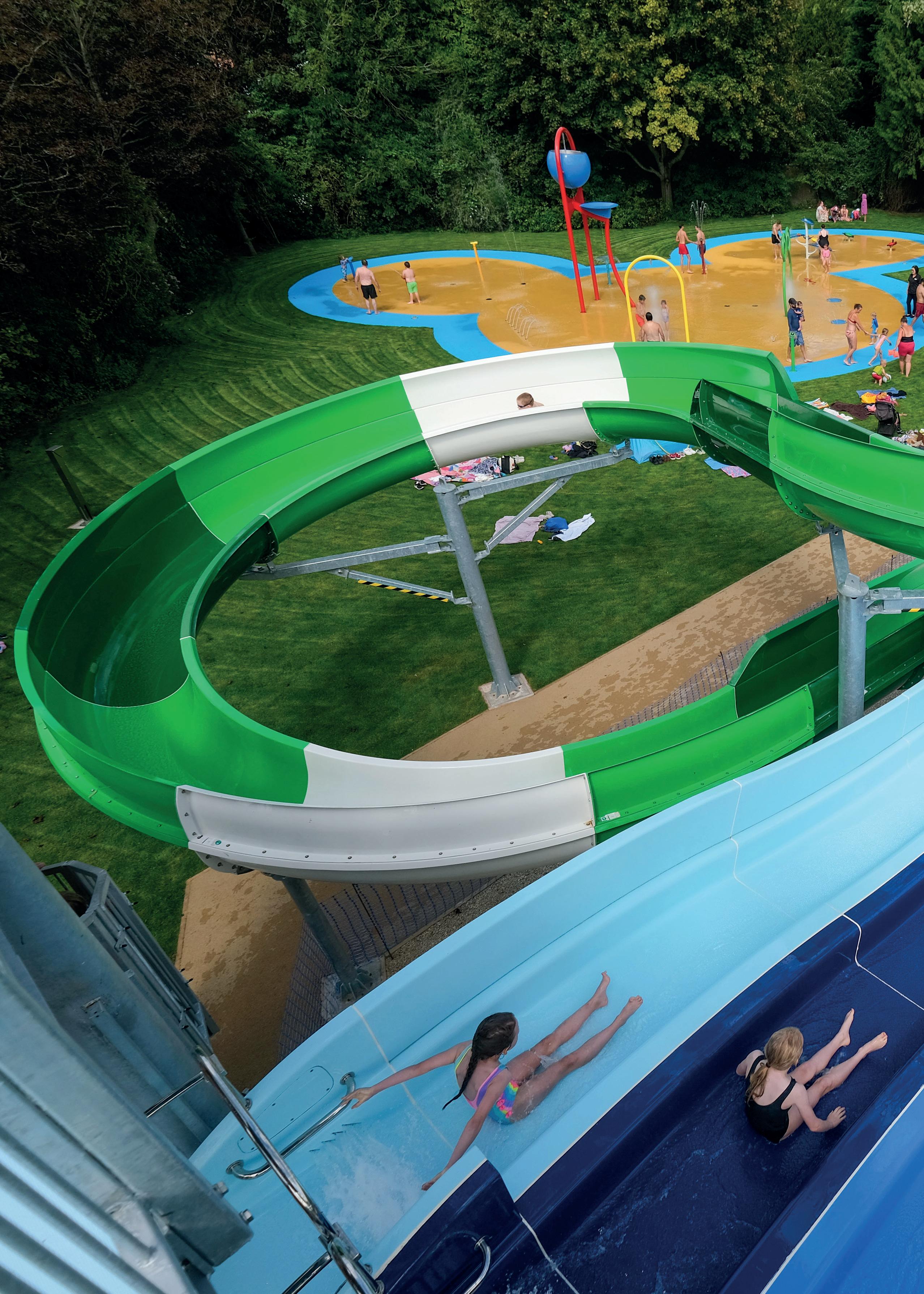
The sector must no longer build facilities just for people that use them, but to attract the non-users
PROFILE
PHOTO: ALLIANCE LEISURE
example, it needs to offer good nutrition, as well as guidance and education. Physio can be delivered in the pool. There are GP and hospital outpatient services, maybe even a Citizens’ Advice bureau.
Budgets mean this won’t happen in every centre we build – although there is a swing towards this model – but with the ticking time bomb we’re facing, honestly, it’s pretty much now or never. We either sort it out or we might as well pack our bags.
So far our sector has only really built better facilities for people who already use them. What we need to do now is genuinely build facilities for people who don’t currently use them. That’s why we’re so focused on speaking to non-users and strategic partners in our consultations.
It’s also why I’ve set up a ‘health supergroup’ of talented, like-minded people such as Lisa Taylor and Harry MacMillan from Momenta, Andy King who’s spearheaded GM Active’s cancer prehab programme, Warren Smyth from Abbeycroft Leisure, Mark Tweedie from Brimhams Active
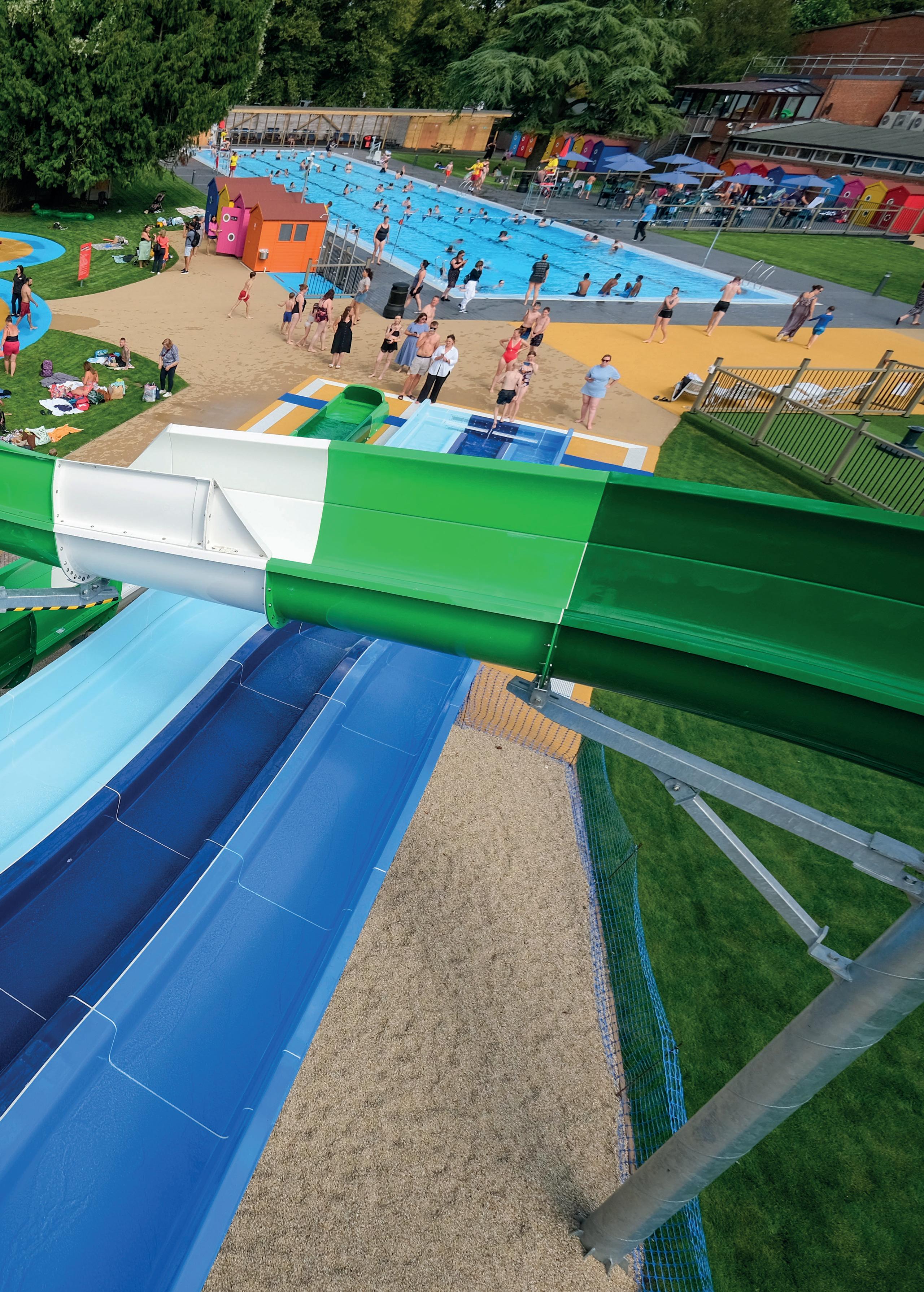
and EuropeActive’s Dave Stalker. Together, we’re going to look at how best to embed health-related programming – programmes related to obesity or diabetes prevention, for example – not only in facilities Alliance is building, but across the sector as a whole.
In other words, when you build a wellness centre, what do you do at the end that makes it a wellness facility rather than a leisure centre with a different name? This project is in its infancy, and it will move us into a more operational field, but it’s my priority for 2024.
You also mentioned carbon reduction?
Leisure centres are massive users of energy, but all councils have signed up to Climate Emergency and have pledged to be carbon neutral by 2030. What that really means is still unclear – does it mean in construction, in operation, in the whole lifecycle of the building including the end of its life? Do we also need to factor in people’s travel to the facility, meaning we must choose more expensive central locations?
45 ©Cybertrek 2024 Issue 1 2024

New build facilities now need to focus on community wellness
I don’t want to call carbon neutral a soundbite, but it is something people don’t really understand yet.
We are, however, working hard to reduce carbon in our developments and our new builds have it at the heart of their design. We use air source heat pumps, ground source heat pumps, solar power and we’re investigating the use of small wind farms on top of some of our coastal facilities.
Even more importantly, it’s how we physically construct our new buildings: airtightness, the fabric we use, how we elevate and orientate a building to make best use of the sun rising and the light.
We’ve also delivered around 20 Salix-funded decarbonisation projects, which normally involve retrofitting to make existing buildings more carbon-friendly. That’s much harder than being carbon-friendly in a new build!
What’s your view of councils taking leisure back in-house?
It’s called insourcing, and I actually believe it shows the councils are serious about it. When you outsource a service, it becomes something that might or might not make a bit of money. But when you run it yourself, it’s part of the fabric of what you want to provide as a council.
A lot of the London boroughs are doing it, and I believe it’s to better integrate leisure into health and wellbeing and the strategic direction of the council. I think they’re beginning to move away from seeing leisure as a cost to instead see it as a value, with wellness facilities part of a much wider strategic objective.
But of course, step away from your management operating partner and all of a sudden, you have no website, no staff training, no uniforms… TA6 has therefore been brought in to help with a lot of the big insourcing projects.
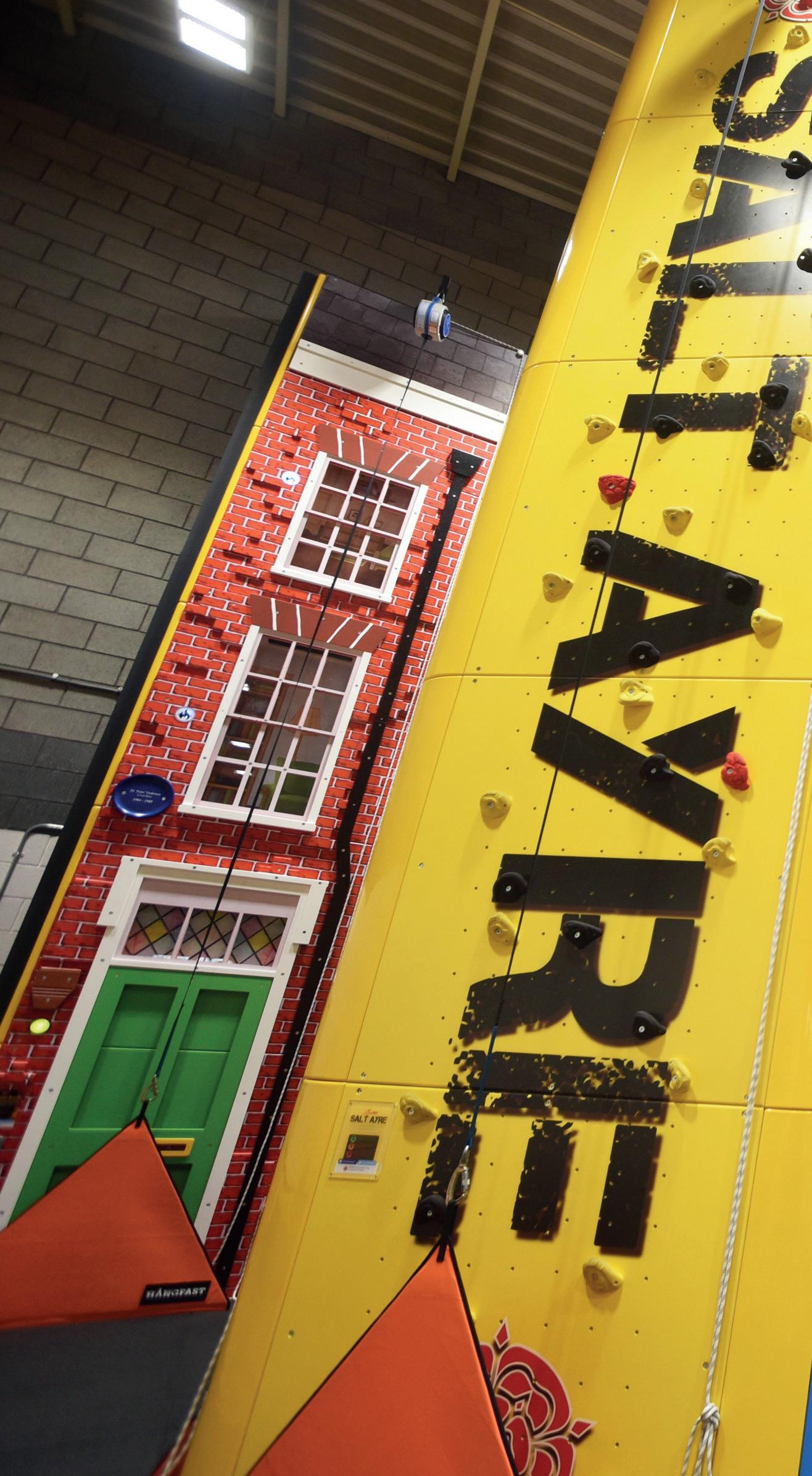
What changes would you like to see in the sector?
I’d like to see a rebrand of leisure to wellness, and I’d like to see it become a statutory service, with an obligation on the public sector to provide facilities for communities to be fit and active.
I’d also like to see a continuation of better integration into the health agenda, and I think the move towards insourcing is very interesting in this respect.
Funding will come into play, of course, with many councils facing real budgetary pressures. However, there is sometimes an economic argument for building a new facility, even if you have no money, because ageing leisure buildings carry high maintenance costs and are non carbon-efficient.
46 Issue 1 2024 ©Cybertrek 2024
PROFILE
Ten different revenue streams were added at Salt Ayre in Lancaster

If you have inefficient stock, building something more relevant could actually cost you less.
Paul Cluett [MD at Alliance Leisure] and I talk about this a lot, because on paper – in a challenged market, with councils in financial difficulty – we shouldn’t be as incredibly busy as we are. But we’re getting inquiries every week. And that’s because a lot of what we do makes facilities more effective or more relevant.
If we had a product that only works if people have lots of money, we’d be out of business by now.
What’s next for Alliance?
Twenty-five years after starting Alliance Leisure, I have an amazing team of some of the best people in the industry, as well as the absolute joy of longevity
I’ve set up a ‘health supergroup’ to look at how best to embed health-related programming across the sector
as people tend not to leave. Investors in People found that 100 per cent of the team had 100 per cent confidence in Alliance’s leadership, which the assessors said they’d never seen before.
Alliance is like my fourth child, but I turn 60 in 2024. I don’t like to talk about succession planning, but we are upskilling the team and elevating our development board: Tom Fairey, Paul Woodford, James Foley, John Leaver, Jonny Curley. They will help drive the business forward.
Whether I’m at the helm or not is I think almost immaterial now for Alliance as a business, as it has such a strong identity and an amazing team. However, it’s really important to me that it continues to grow and prosper, as we still have a lot to do! l
47 ©Cybertrek 2024 Issue 1 2024
In essence, love means trusting both your staff and your customers

Everyone’s talking about
LOVE
Our experts believe love is the best foundation on which to build a business. Kath Hudson finds out why
The concept of love as a business strategy hasn’t yet gained much traction, but it makes a great deal of sense. I think we’d all agree the world would be a better place with a bit more love.
In essence it means trusting your staff and your customers, so they give you and each other their loyalty. Leading your team with praise before criticism will make them feel empowered and better able to take feedback. Listening to them and their ideas as much as you impart your own will make them feel valued and heard. Fostering this type of culture will lead to easier recruitment and better retention, translating to a better customer experience and a healthier operation.
Research professor at the University of Houston, Brené Brown, is a trailblazer in this regard. Her TED Talk, The Power of Vulnerability is the fifth most watched ever and shows the toxicity of shame and that there is strength in vulnerability.
Author and illustrator, Charlie Mackesy, presents this well in his book The Boy, The Mole, The Fox and The Horse. He recently shared on Instagram that a
teacher asked him to make another book because his first one had given some of her boys permission to be kind and honest about how they feel.
Within the health and fitness industry, Tara Dillon, went about creating an empowering culture when she took over as CEO of CIMSPA, an organisation that was off-balance at the time.
“I wanted to build a culture on the foundations of equality, respect and teamwork,” she says. “I implemented the policy of treating people like grown-ups: for example offering unlimited leave – they have to check with their colleagues rather than me.
“With expenses, we ask employees to treat the company money as they do their own and have always taken an open-minded approach to flexible working.
“Fully immersing the team in the direction of the organisation, so they buy into the purpose and love what they do is so important,” says Dillon. “The work culture has also helped recruitment and retention.”
So is love the answer? And how do you make a start? We ask the experts…
48 Issue 1 2024 ©Cybertrek 2024 TALKING POINT
PHOTO: SIX SENSES

Start with acknowledging each person’s unique journey
Anna Bjurstam
Wellness pioneer
Six Senses
Ifirmly believe integrating love and wellness into business strategy is not just beneficial but essential. It’s about creating a work culture that values mental health and emotional wellbeing, which then leads to a more resilient and successful organisation.
Cultivating a kind and compassionate culture has been integral to our work at Six Senses. We have an employee wellbeing programme called Mission Wellness, which has led to a more engaged and emotionally healthy workforce.
In a compassionate work environment, we see fewer conflicts and greater collaboration. People are more open to sharing ideas and feedback, which is crucial for innovation and growth.
From a talent attraction standpoint, a reputation for having a caring and healthy work environment is a significant draw. I have stayed with the company for 11 years and worked
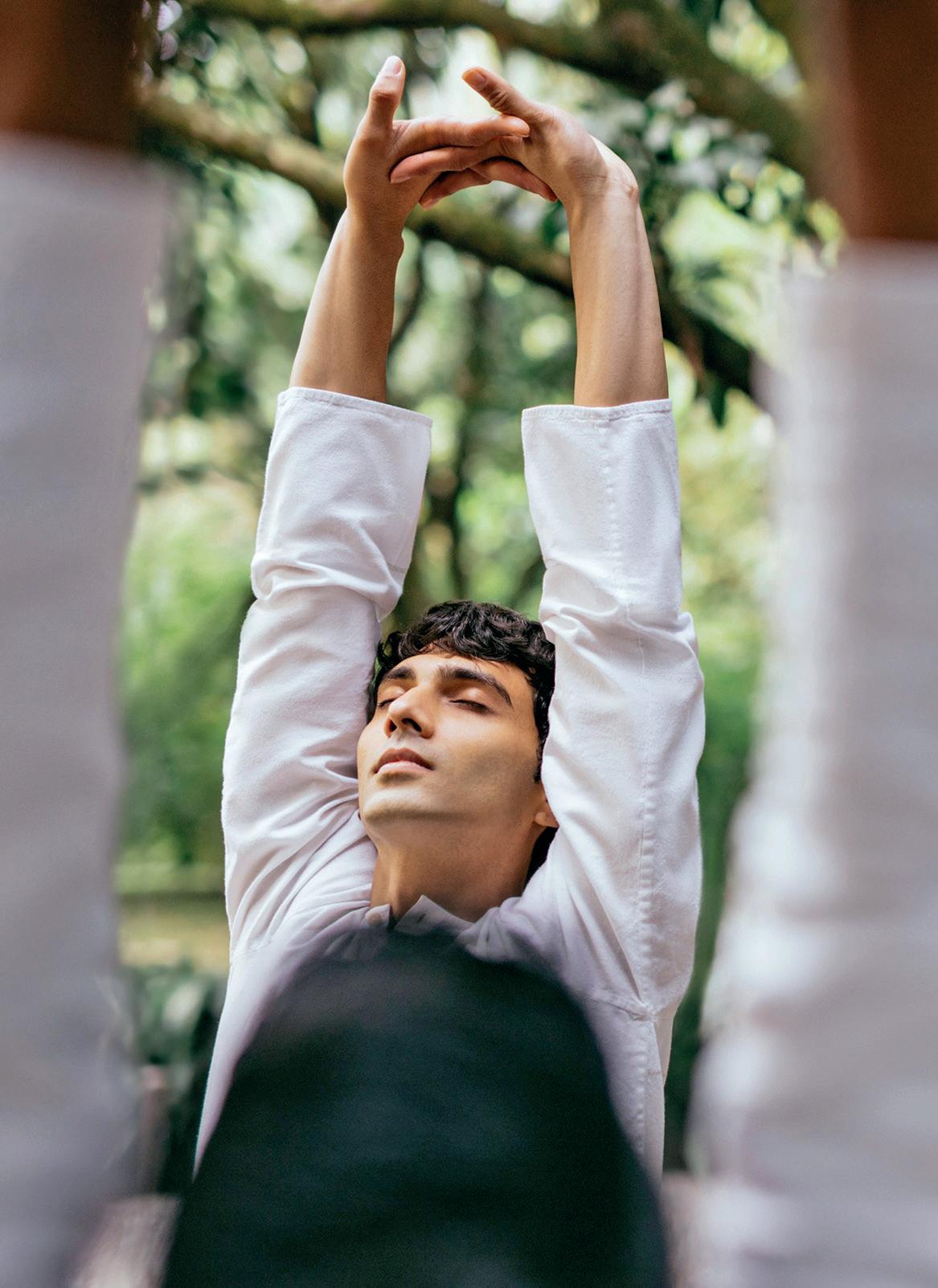
with many of my team members since the beginning. We have fun, support each other and share a great deal of love and respect for one another.
To integrate love into a health club’s strategy, I would recommend creating a personal and welcoming experience. Start with acknowledging each person’s unique journey, understanding their goals, and providing personalised support. Ensure the club is welcoming to everyone, and celebrate every member’s achievements, no matter how small. Also work to foster a sense of community where members feel connected and supported by both staff and fellow members.
I would also place great importance on the wellbeing of the team and train staff in customer
service and empathy. A lot of Six Senses’ training is focused around emotional hospitality and doing good to yourself and others.
Happy and empathetic employees naturally extend care to members, creating a positive and nurturing environment. Our guests always appreciate the genuine care when a member of staff goes the extra mile, which is way more important than the other touchpoints.
Extend love beyond the four walls of the club by participating in community outreach and wellness education. We channel 0.5 per cent of revenue to sustainability measures in the local community.
Bringing love into the business creates a supportive community members and staff can be proud of.
49 ©Cybertrek 2024 Issue 1 2024
PHOTOS: SIX SENSES
PHOTO: SIX SENSES
Happy employees naturally extend greater care to your members


People have a pretty good bullshit meter when you fake it
 Steve Farber Founder Extreme Leadership Institute
Steve Farber Founder Extreme Leadership Institute
Around 20 years ago – after 15 years of working in change management - I took stock of what I’d learned over the years, from the many leaders I’d met and the determining factor in success and influence was love. My first book about love as a business and leadership principle, The Racial Leap, was published in 2004. I don’t mean love as fluff, or love as the sentiment. I mean love as a practice and a discipline. The case for love and business is simple: your competitive advantage comes from your customers loving what you do. Anything short of that and they’ll be easily wooed away by another company.
If you want to create that experience for your customers, you have to create a culture and environment people love working in. If you don’t love the business, the people you’re working with, the clients you’re serving, the mission you have, the product or service you’re providing then the only option is to fake it and people have a pretty good bullshit meter when you fake it.
When people get concerned this is fluffy it’s because there’s this idea that somehow love lowers standards and expectations, when in fact it’s the opposite. Everybody wants love, so this whole idea that love has no place in business makes no sense. It’s about creating raving fans. If someone loves doing business with you and loves the way you take care of them that’s not soft or fluffy, it’s difficult. It demands a level of commitment that a lot of people aren’t willing to give.
One of my favourite examples of the companies I’ve worked with is an unsexy shipping and logistics company based out of Florida. The company was doing badly: almost bankrupt, people hated working there, they’d had three CEOs in four years. Then a CEO took over who was a “love guy”.
He made a few changes to improve the work culture, including bringing in a food truck every Thursday so the staff could eat together, adding a popcorn machine and table tennis table to the communal space, getting the managers out of the office and holding weekly sessions where any question or idea was welcome.
Customer policies were reassessed to make sure decisions were made through the lens of customer service. In not a very long amount of time, the debt was reduced to virtually nothing and it was

voted the number one place to work in the city of Jacksonville.
To implement love as a business strategy, start by asking the question: “why do I love this health club?” Love has implications for everything we do in business, from the way we hire people and the kind of people we hire, to the physical environment and how you relate to customers. Every action should be put through the filter of “does this meet the love standard?”
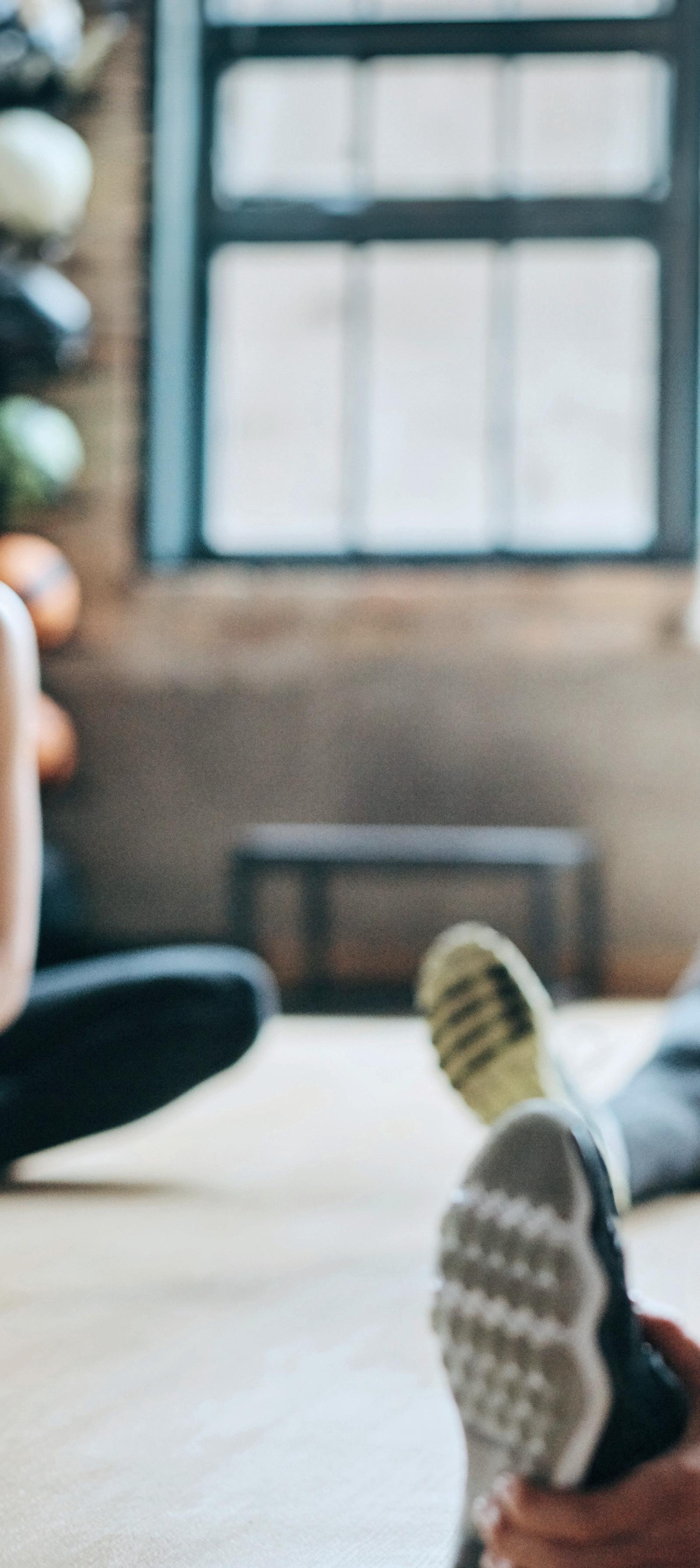
50 Issue 1 2024 ©Cybertrek 2024
TALKING POINT
PHOTO: EXTREME LEADERSHIP INSTITUTE
Every action should be put through the filter of “does this meet the love standard?”


To implement love as a business strategy, start by asking ‘why do I love this health club?’
51 ©Cybertrek 2024 Issue 1 2024
PHOTO: SHUTTERSTOCK/PEOPLEIMAGES.COMYURI A
Only leaders who authentically believe in the power of love should be leading it as a business practice
Mia Kyricos
President and chief love officer Kyricos & Associates
Over the years, I’ve taken multiple leadership assessments that have identified love as one of my core leadership traits, but I didn’t always understand its power or even feel comfortable leveraging it in professional environments.
During the pandemic, I studied the potential of love as a business strategy and was blown away by what I discovered and this gave me the courage to become a love advocate. Not only does it feel good, it’s good for business too.
Simply put, love is a good business strategy because it impacts business performance. Research has shown that high-performance companies tend to have three times the number of leaders who embody loving credentials, including proactively inspiring, or empowering others by managing to people’s strengths and modelling empathy, gratitude and respect in the workplace.
The body of research which proves the power of love is growing. Three years ago, I looked at companies such as Subaru, Southwest Airlines and

Prudential Insurance, among others, to see how love – or in this case, positivity management – has helped them outperform the competition.
I also read the pioneering work of leadership experts such as Steve Farber (see below), and positivity experts such as Barbara Frederickson, each essentially naming love as a “superpower” whether from a business or science perspective. They all led me to the same belief that love should have a seat at the business table because its potential is huge if we have the courage to leverage it.
However, this is a radical concept and while business leaders may talk about love in a casual sense – such as loving the industry, their career paths or teams – most of them don’t know how to institutionalise love as a business practice.
In my opinion, there are four practical ways to begin.
Firstly, believe in the power of love and be fearless in championing its place at work and in life. If you’ve worked in the business of wellness over the last 10-20 years, you have likely spent a good deal of time attempting to make a business case for wellness, even before the data existed to prove its worth to owners, investors and consumers, because you knew in your gut that the business of wellness could impact profit and health outcomes even before the research was available. Well, the same is true for love.
Secondly, adopt a positive and flexible mindset. This means shifting awareness to what’s going right, rather than wrong and managing to people’s strengths rather than their weaknesses. Start meetings, or even training sessions, by acknowledging successes rather than challenges, welcoming change
52 Issue 1 2024 ©Cybertrek 2024
TALKING POINT
PHOTO: KYRICOS & ASSOCIATES
Kyricos has studied love as an effective business strategy
rather than resisting it, publicly practicing gratitude, and above all else, establishing trust in your organisation. Without trust, it’s impossible for love to even grow, let alone produce business impact.
Thirdly, find ways to easily and objectively measure love in business. Metrics can vary from net promoter score to customer acquisition and retention, higher margins, and evangelist marketing. Find out what your employees love about their jobs. Even more courageous, ask what they don’t love in order to identify ways to turn negative emotions and experiences into positive ones.
Finally, be honest. Only leaders who authentically believe in the power of love should be leading it as a business practice. There’s nothing wrong with passing the torch to a believer so that you can follow their lead. l
 Passing the torch to the ‘love believers’ in your organisation can eventually help you become one too
Passing the torch to the ‘love believers’ in your organisation can eventually help you become one too
YURI A
PHOTO: SHUTTERSTOCK/PEOPLEIMAGES.COM
Enhancing spaces
Ridgeway has created a series of luxury spaces for the new Third Space in Wimbledon, designing, making and installing furniture in key areas of the club
Ridgeway, established in 1986 and renowned for its furniture manufacture and craftsmanship across the hotel and leisure industry, recently completed a prestigious project for Third Space, building and installing bespoke lockers, washroom facilities, reception and studio furniture for their world-class health club in Wimbledon, south-west London.
Expertly designed to blend functionality with aesthetics, the stylish forest-green lockers offer impressive storage, while the subtle timber finish in the washrooms and polished black marble vanity areas create a modern and luxurious changing space.
Working alongside Third Space’s designers, TONIK and Quadrant Design, Ridgeway proudly teamed up with Woodford Interiors, Premier Flooring, CRE and Aquascapes on the project. This collaboration underscores Ridgeway’s commitment to enhancing spaces, providing an unrivalled environment for gym enthusiasts and health club members. l
More: www.ridgewayFM.com

Ridgeway was responsible for the changing room fit-out

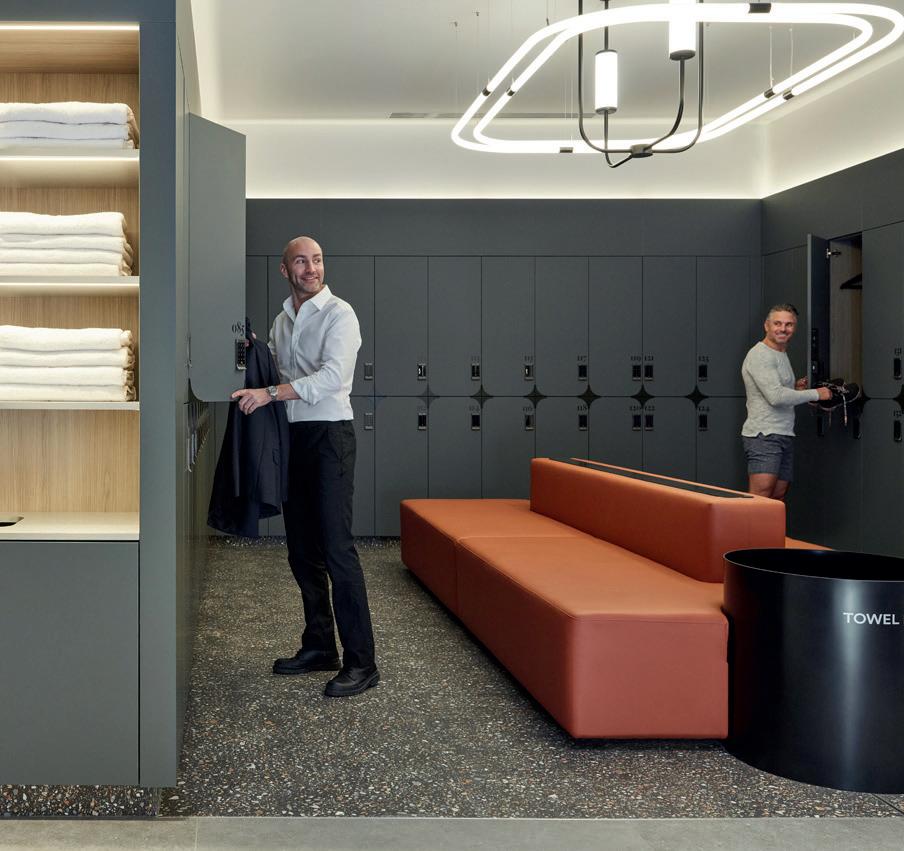
SPONSORED
Studio furniture was designed and made by Ridgeway
Ridgeway created lockers for Third Space Wimbledon
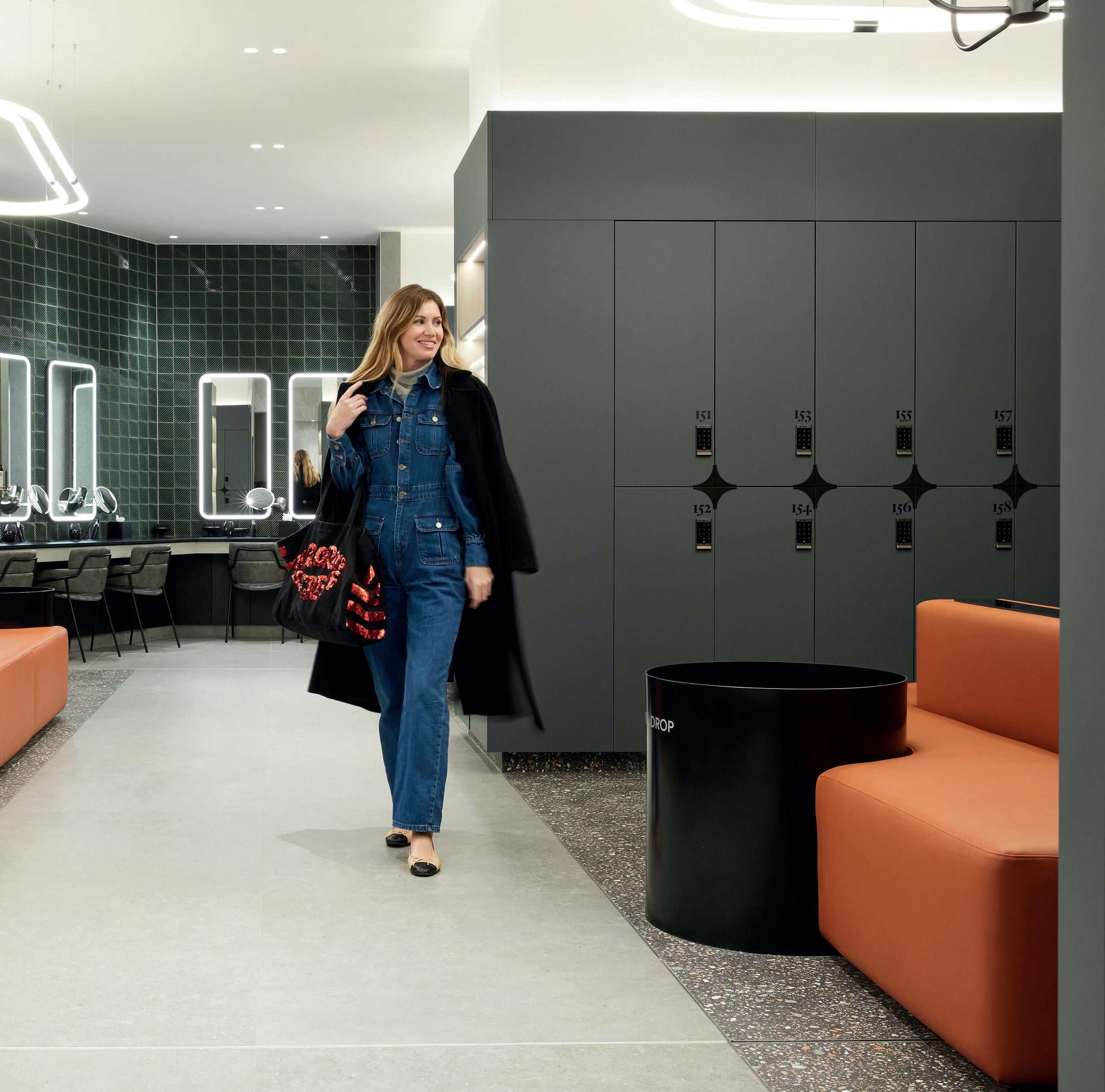
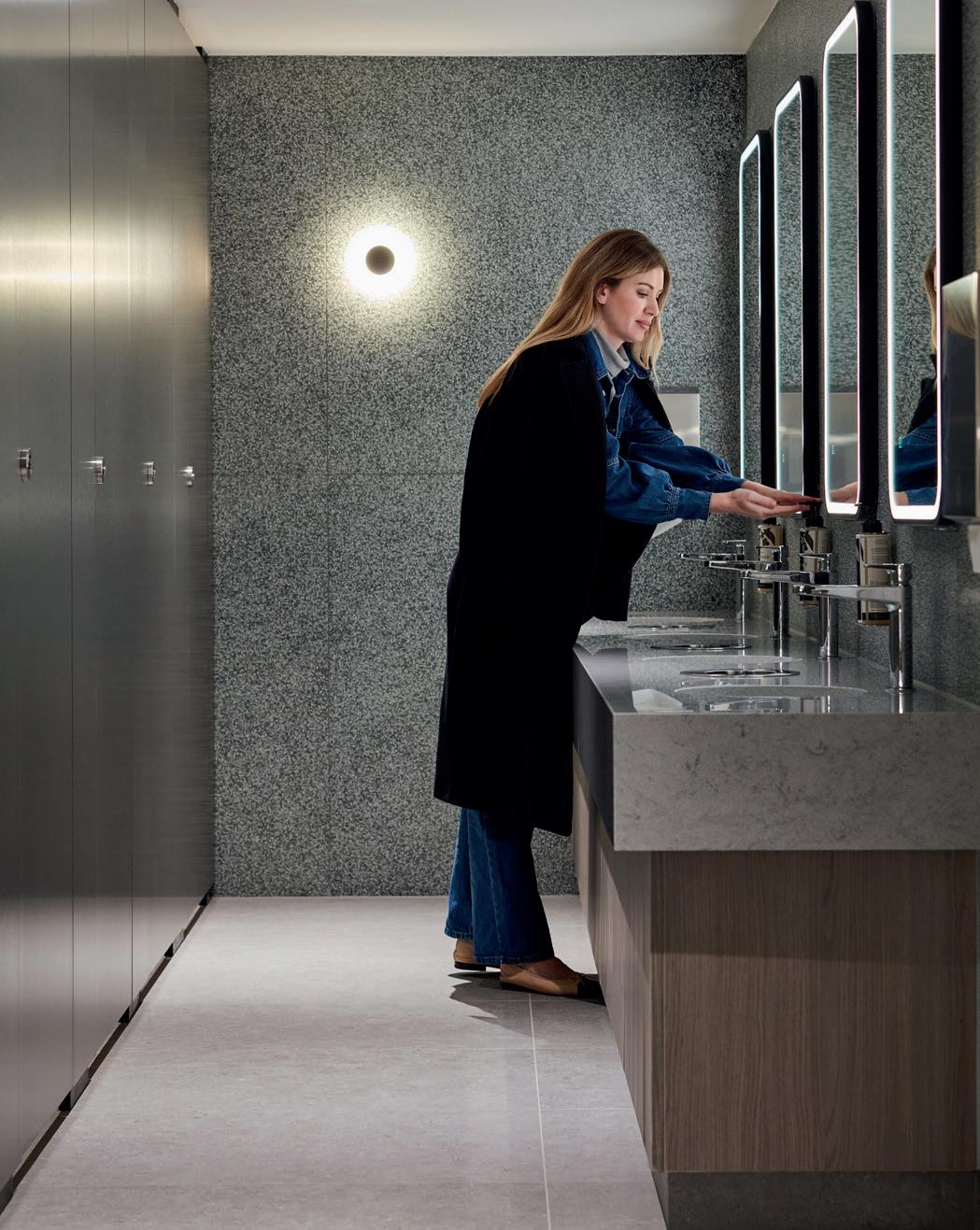
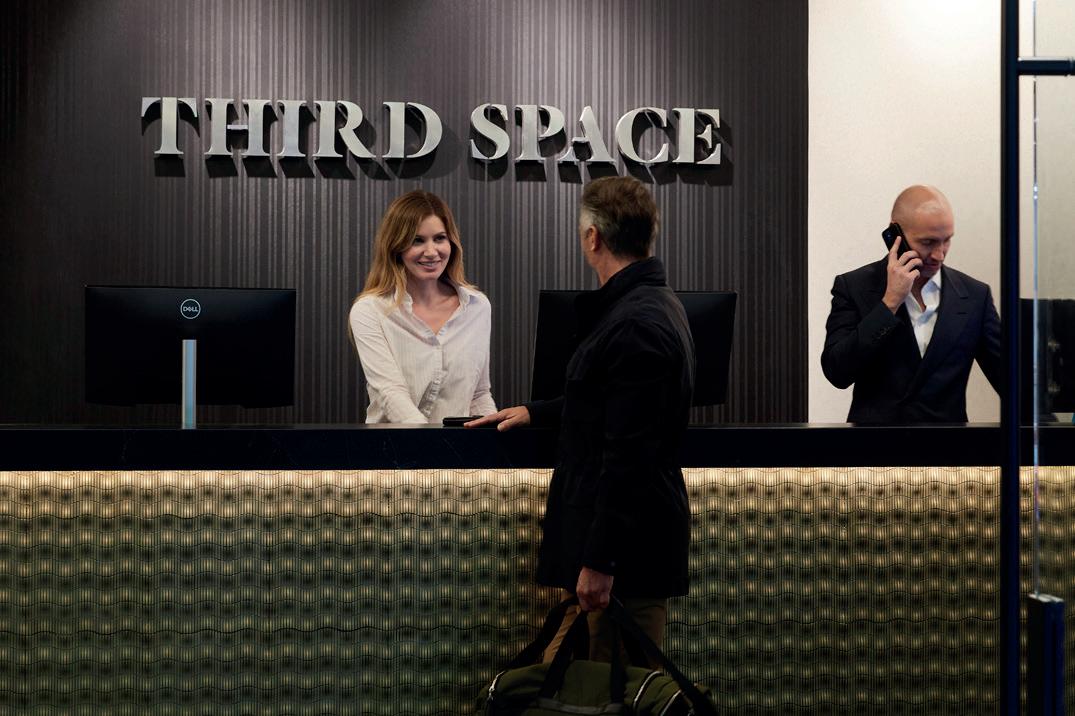
This collaboration underscores Ridgeway’s commitment to enhancing spaces, providing an unrivalled environment for gym enthusiasts and health club members
 Changing rooms have a range of luxury amenities
The reception area was fitted out by Ridgeway
Washrooms have a luxury look and feel
Changing rooms have a range of luxury amenities
The reception area was fitted out by Ridgeway
Washrooms have a luxury look and feel
ALL
PHOTO: RIDGEWAY

OPINION PHOTO: SHUTTERSTOCK/JACOB LUND
HERE COMES THE FUTURE

Kath Hudson talks to industry experts from around the world about their key takeaways from last year and their hopes for 2024
57 ©Cybertrek 2024 Issue 1 2024
Karsten Hollasch and Steffen Gausselmann
Deloitte
Although operators passed some of the inflation-driven price increases on to their customers last year, paying more for memberships doesn’t appear to have dampened demand.


Europe’s largest fitness chain, Basic-Fit, recorded 23 per cent year-on-year growth in membership, reaching 3.61 million members at the end of June 2023. Similarly, UK-based operator The Gym Group reported a membership increase of 10 per cent for half-year 2023 compared to half-year 2022, while SATS Group, one of the largest fitness chains in the Nordics, saw its total members increase by 6 per cent comparing the second quarter of 2023 to Q2 2022.
Despite a good recovery from the pandemic, the expansion plans of European operators are being challenged by inflationary-driven rises in operating and financing costs. Longterm cost control programmes and respective strategic measures are required to ensure sustainable growth and profitability.
As the current economic environment encourages fitness operators to evaluate and improve cost-efficiency, smart cost concepts demonstrate potential areas for cost savings. Finnish operator Liikku Kuntokeskus has set an example with its highly efficient club management, a small headquarters team, smart processes and automation for the operation of its 41 clubs.
Further expansion of 20 clubs per year in the Finnish market until 2025 has already been announced, which underlines the expected broader market acceptance of this approach.
Smart cost concepts have already taken root in several other European markets. Fitness Up in Portugal is cutting costs across its chain of around 40 sites by using second-hand gear or equipment of local suppliers and FitActive, which runs around 100 clubs in Italy, as well as Fitomat in Germany all operate partially without staff.
Looking ahead, large European fitness operators could be affected by new EU regulatory requirements. The Corporate Sustainability Reporting Directive (CSRD),
“Smart cost concepts have already taken root in several other European markets”
which aims to modernise and improve sustainability reporting across the EU, came into force at the beginning of 2023.
European fitness operators that exceed certain criteria – eg, based on the number of employees and sales – will need to comply with the new EU reporting requirements in the coming months. Further market insights including the development of European markets and operators in 2023, M&A activities and recent consumer findings will be portrayed in the European Health & Fitness Market Report 2024, to be published by EuropeActive and Deloitte in April 2024.

Basic-Fit recorded
23 per cent yearon-year growth
OPINION 58 Issue 1 2024 ©Cybertrek 2024
PHOTO: DELOITTE
PHOTO: DELOITTE
PHOTO: BASIC FIT
 Sarah Luna President Xponential Fitness
Sarah Luna President Xponential Fitness
Last year, holistic health came through as a trend which we expect to see more of in 2024, as consumers consider their overall health rather than just working out. People are looking to incorporate fitness and wellness into their lifestyles, not for it to be for just one hour a day.
Although people are keen to be a part of a community again, digital fitness will remain important and Xponential is looking at ways to use technology to innovate and keep delivering exceptional workout experiences, regardless of where that might be. The challenge going forward is striking the right balance – and allocating the right resources – between the in-person and digital experience.
I think we’ll also see a move towards more personalised fitness products, informed by sophisticated data and biometric data and possibly driven by AI, which will allow a customisable experience tailored to individual needs, while being general enough to be affordable.
Experience-driven fitness is another trend I expect to see more of, crossing over with entertainment. People are looking for more than just being able to replicate running
“We’ll see a move towards more personalised fitness products, informed by sophisticated data and driven by AI”
in the park or doing push-ups on a bench: they’re looking at how they can get community, entertainment and fitness all in one place, because everyone is strapped for time.
I’m feeling very optimistic. There are so many untapped opportunities and great things that our industry can continue to deliver to the end consumer. It’s exciting to see where technology will take us, especially with customising fitness and making sure it’s a top-notch experience.
In 2024, our core focus will be supporting our franchisees to perform strongly. We also have the launch of Lindora – our newlyacquired weight management and wellness brand, as well as our new dance-fitness brand, Kinrgy –an online brand which we’re taking into bricks and mortar. Usually we go the other way round, so we’ll use this experience to prove out a new model.
 Online dance fitness brand Kinrgy will move into bricks and mortar
Luna is excited about untapped opportunities
PHOTO: XPONENTIAL FITNESS
PHOTO: XPONENTIAL FITNESS
Online dance fitness brand Kinrgy will move into bricks and mortar
Luna is excited about untapped opportunities
PHOTO: XPONENTIAL FITNESS
PHOTO: XPONENTIAL FITNESS
“PureGym is in a good position to achieve its growth ambitions”

Customers are now more cost-conscious and will spend wisely
Rebecca Passmore
Group chief operating officer PureGym
Last year represented tough operating conditions including high inflation, high energy costs and high interest rates. Yet PureGym continued to recover and invest, launching 40 new clubs. With people prioritising their health and wellbeing like never before the global fitness industry is booming, so we feel optimistic about the year ahead.
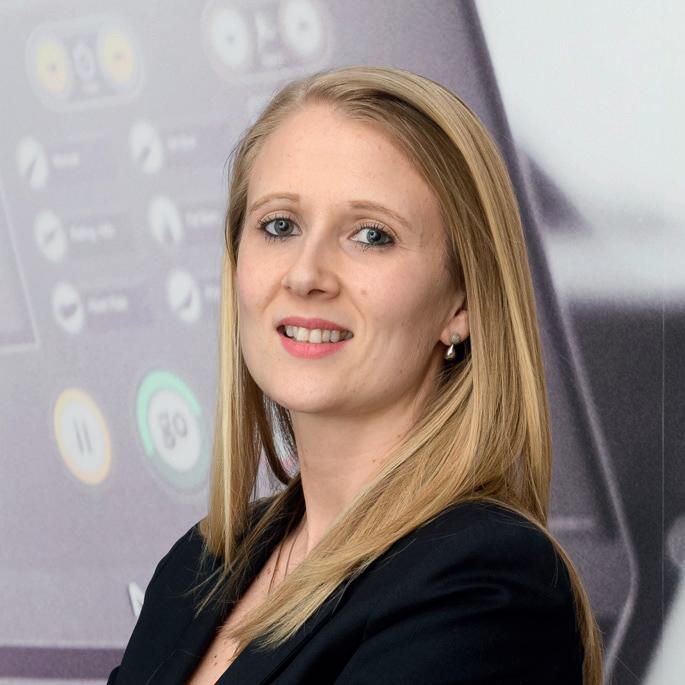
under control. With only 5 per cent inflation expected in 2024 versus 2023 and with fixing our utility contracts, we’ve done our best to mitigate rising costs.
While the macroeconomic environment is likely to remain challenging, PureGym is in a good position to achieve its growth ambitions. There remains significant opportunity in our core markets of the UK, Denmark and Switzerland and we’re continuing to seek growth through franchising in other areas of the world.
Customers are clearly more cost-conscious and will continue to spend carefully in 2024, but this plays to our strengths and proposition. At £23 a month in the UK, a PureGym membership costs the same as one takeaway coffee every three days. The value sector has historically proved resilient during times of economic downturn and there’s a clear opportunity for operators at the lower end of the market.
Inflation and the higher-than-expected increase to National Minimum Wage will continue to put pressure on operators’ cost bases, including our own. The challenge will be to mitigate these while finding new ways to continue to unlock value for members. So far we’ve kept like-for-like costs well
With our partners from Al Hokair, we’re progressing well in the Middle East and have opened 19 gyms in the region since 2021. By 2027, we have plans to open 130 gyms across the wider Middle East and North Africa region and are in active conversations in numerous other territories including Japan, India and the US [PureGym has recently partnered with RCS Real Estate Advisors in the US on site-finding and franchise rollout, trading as Pure Fitness].
Further to this, we’re always looking to improve market penetration and are exploring ways to make our small box format gyms commercially viable in areas with smaller populations so we can bring value fitness to underserved communities.
60 Issue 1 2024 ©Cybertrek 2024
OPINION
PHOTO: PURE GYM
PHOTO: PURE GYM
“The demand side of our industry is in great shape”
Colin Waggett CEO
Third Space
In terms of optimism I’m a 10 out of 10! The big tailwinds continue to blow very strongly for us: people prioritising experiences, fitness being a social as well as a health pursuit, fitness being a sport in itself, younger people exercising more, older people exercising more, broadening our appeal and reach… you get the drift.
Despite the foreboding tales of consumer spending meltdown earlier in 2023, life goes on for most and people are prioritising spending on gyms, so the demand side of our industry is in great shape. What people told us at the start of last year in surveys has played out. Imagine what might happen when real incomes start to grow again!
There have been some adjustments around where people spend their time, but many are working from home less than was predicted. As every month goes by we see new Monday looking more

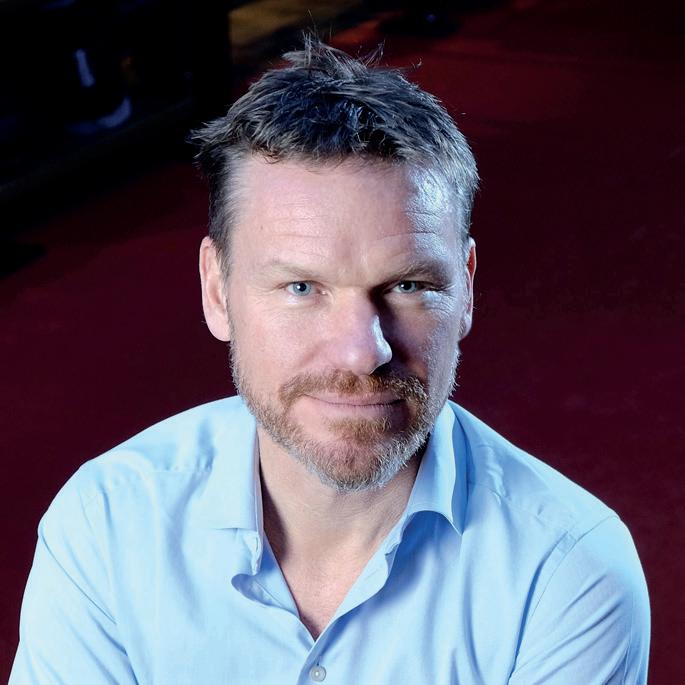
like old Monday and Friday was always a quieter day in the city.
From a training trend perspective, the big news is strength and conditioning and mind and body, with all things recovery and relaxation thrown in. I like the fact that mental health is now the number one driver for visiting a club, bumping losing weight off the top slot. It seems like a more honest and sustainable reason: you will nearly always feel happier after a workout, while achieving sustained weight loss is much harder.
Access to capital is still quite hard for our sector, and where businesses have emerged with their

own form of long-COVID – with more debt than they would like and a backlog of investment needs –consumers will be unforgiving and take their business elsewhere.
As David Minton’s LDB report highlighted there was actually a 4 per cent reduction in the number of clubs in the UK between 2019 and 2023. I think this rebalancing might have another year to run, as operators sort out their portfolios and shed marginal sites. At the same time the report highlights the growth in members and yield, which is reflective of the strength of demand, despite net club closures. I see this growth in rates continuing, with operators having gained confidence in putting price increases onto members.
The boom in franchising concerns me slightly. Although I’m sure there will be some great stories, I wonder how often the unit economics match the dream sold. Some people will find it tough-going, with more expensive capital making it doubly hard. There’s been some press around this with regards to the bigger franchise platforms and I expect it will take some years for this to play out.
Third Space’s mantra is to get bigger as we get better. As we roll out new clubs we’ll also be rolling out new class programmes and expanding wellness and medical services. The demand from Londoners for our offering has never been greater. We’re also seeing great real estate opportunities as landlords repurpose office and retail space.
61 ©Cybertrek 2024 Issue 1 2024
Third Space will open more London sites
The Wimbledon club will be followed by Battersea, Wood Wharf and Clapham
PHOTO: THIRD SPACE
PHOTO: THIRD SPACE
“The Gym Group will continue to focus on bringing down barriers to exercise and attracting new audiences”
 Will Orr CEO The Gym Group
Will Orr CEO The Gym Group

Orr says there are plans for 10-12 new sites in 2024
We’re entering 2024 feeling optimistic and think it will be a great year for both the industry and The Gym Group.
The fundamentals of the UK health club industry – particularly the lowcost sector – remain strong, with an ever-greater desire from consumers to prioritise their health and wellbeing. With mounting pressure on the NHS and obesity levels rising, the health and fitness sector continues to have an important role to play in enabling people to build healthy habits and feel good.
Cost of living pressure means people are seeking more value in their spending and we’re finding that our low-cost, high-quality and flexible memberships offer is an ideal
solution: memberships at The Gym Group were up by almost 10 per cent on the prior year as of June-end 2023. We’re now making them even more accessible with the introduction of an off-peak membership, starting at just £12.99 a month at some clubs.
This year, The Gym Group will continue to focus on bringing down barriers to exercise, attracting new audiences and supporting more people to be healthy. Currently more than 50 per cent of the UK population lives within a 15 minute drive of one of our gyms, and we’ll continue to grow our estate, with plans for 10-12 new sites this year. We’ll also be investing in our current clubs with refurbishments and kit upgrades, including the introduction of 50kg dumbbells, lifting rigs, SkiErgs and air bikes.
OPINION
PHOTO: THE GYM GROUP / WILL HARTEY
PHOTO: THE GYM GROUP
A £12.99 off-peak membership will launch at some clubs
“One of RSG’s main challenges is to renew our cult brand McFit in a careful but futureorientated way”
Hagen Wingertszahn and Dr Jobst Müller-Trimbusch
Joint CEOs RSG
Last year proved that despite the digital offers, people still like to go to the gym to work out. People want to support their health and the community aspect of training is appealing, especially in a highly individualised society like Germany. Flexible memberships are also desirable, as people don’t want to enter into long contracts.
For both men and women, the fitness trend is moving back towards heavy strength training, increasingly involving free weights, such as dumbbells and barbells. Strength training is also becoming more of a focus in group fitness,
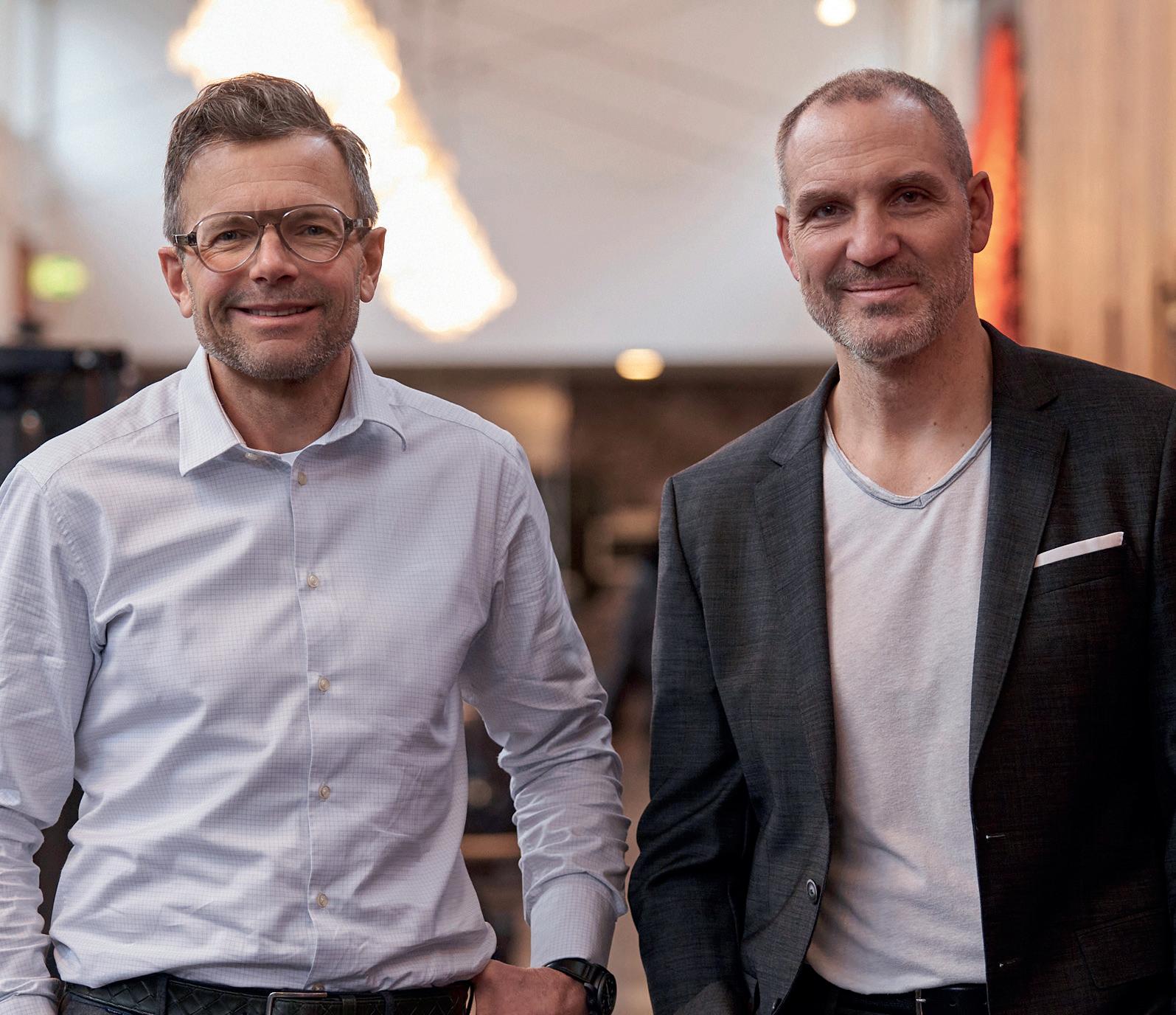
for example boot camp classes or circuit training. Functional training –holistic full-body training using bodyweight – also remains in vogue.
Reformer Pilates is on the rise and we’re starting to offer this at John Reed Fitness. Pilates training on the machine is particularly intensive and efficient, as it trains and stabilises the entire body in a way that’s gentle on the joints.
After more than 25 years, one of RSG’s main challenges is to
Flexible memberships are more desirable in the current climate

renew our cult brand McFit in a careful but future-orientated way, that will continue to fulfil the needs of our various target groups, including Gen Z. Stay tuned for the launch of a new concept in 2024, where we will gradually modernise and remodel the studios.
There is still a lot of potential in Germany. At 13 per cent, our penetration rate is still nowhere near as high as in other countries, such as Scandinavia, where it is more than 20 per cent. A combination of aggregators working in the market, target groups for fitness operators becoming broader and consumers’ special interests increasing significantly is creating further opportunities for boutique studios.
In 2023, we set the course to lead the RSG Group into a sustainably successful future. Unlike other industries, we’re not afraid of digital solutions or AI. To get fit, people must continue to train – muscle only grows under resistance – so we feel optimistic. This year, we’ll continue to focus on our core brands McFit, John Reed and Gold’s Gym and continue our expansion course.
63 ©Cybertrek 2024 Issue 1 2024
PHOTO: RSG GROUP
PHOTO: RSG GROUP
RSG Group still sees great growth potential in the German market
Peter Bundey CEO GLL
Last year – GLL’s 30th year of operation – was defined by resilience, rejuvenation, and reimagination. There were a number of financial challenges that we matched with robust plans to mitigate potential impact, deliver our financial plans and allow us to focus on forward-looking strategies.
Positive progress across many agendas in 2023 has enabled us to enter 2024 with optimism and knowledge that the foundations for forward plans are in place. We also have a number of exciting innovations that will come through this year, assisting both GLL and the sector to enhance its messaging and impact.
Last year we launched our Five Year Plan, which includes exciting new agendas and a range of performance outcomes, that will enable us to showcase how the sector can be at the vanguard of societal, economic and environmental change.
GLL’s 2023 customer survey had 42,000 responses which provided us with key information to help shape our values, customer experience and local impact. This customer insight and data will shape product innovation, consumer engagement and increases in activity levels.
A range of new partnerships with multiple agencies will help us expedite the power of collaboration to develop long term and sustainable solutions across extensive health and wellbeing agendas. Continued digitalisation will drive better community outcomes, as well as business efficiency and customer interaction. We expect heightened focus to strengthen the sector’s workforce attractiveness, improve career development and grow skills and expertise to raise opportunities and resilience.

“The sector can be at the vanguard of societal, economic and environmental change”
 GLL received the Investors in People Gold Award
GLL received the Investors in People Gold Award
OPINION
PHOTO: GLL
PHOTO: GLL
 Martin Franklin
CEO Europe Les Mills International
Martin Franklin
CEO Europe Les Mills International
Operators rose to the challenge of 2023, remaining resilient and resourceful in a perfect storm of global economic conditions, a changing consumer landscape and labour market conditions.
Going forward, I think we’ll see operators making increasingly bold plays to stand out in a competitive market. We’re hearing that member tenures are skewing shorter, so elevating the member experience to provide an irresistible offer that holds their attention for longer will become table stakes. Talent acquisition and retention will be crucial to elevating the member experience.
The gamification of fitness offers potential to reach consumers and fitness novices alike, providing new routes to exercise for those not currently working out. We’ll see AI influence what fitness
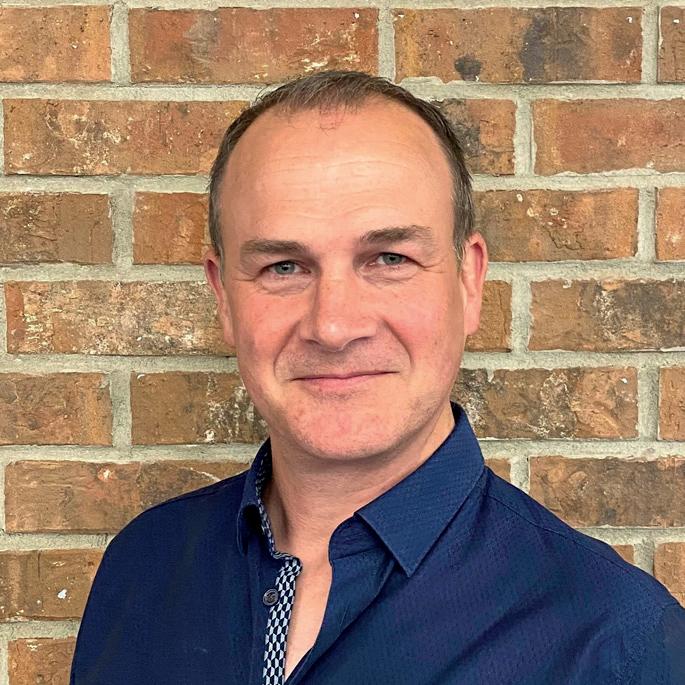
“We’ll see operators making increasingly bold plays to stand out in a competitive market”
experiences look and feel like, but not to the extent that it supplants human connection.
Our own research, the Gen Z Fitness: Cracking the Code report,
delved deep into younger members’ training habits, revealing the size of the opportunity that awaits operators willing to meet the specific needs of this group. Half of Gen Z are ready to start working out and those already exercising have a strong preference for choosing different workouts.
With research showing that 55 per cent of Gen Z average eight hours a day online, operators who acknowledge the power of social media are the ones primed to win. Savvy clubs will harness the power of their own star team members to drive footfall, creating a desirable community, not just a place to work out.
We’re excited to continue rolling out our Limited Edition Collection –a suite of on-trend programmes providing boutique-style workouts. We’ll also be investing in live events, starting in London this February, showcasing our latest Limited Edition programme, Functional Strength, as well as boutique training concepts Ceremony and Conquer.
65 ©Cybertrek 2024 Issue 1 2024
Gamification offers potential to reach new consumers and fitness novices
PHOTO: LES MILLS INTERNATIONAL
PHOTO: LES MILLS INTERNATIONAL
Liz Clark CEO IHRSA

Last year saw the industry get back on a strong footing and charge ahead. It was also a year of renewal for industry advocacy. IHRSA held the first fly-in in Washington, DC in over a decade, bringing dozens of industry leaders face-to-face with elected officials and staff.
On the international front, IHRSA continued its longstanding advocacy with Organization for Economic Co-operation and Development and the World Health Organization and outlined new plans to sustain this vital work.
I saw so many trends and buzzworthy products and services at the IHRSA Convention and Trade Show. Some exciting examples include integrated mental health spaces and mental health programmes in clubs and workplaces. Wellness- and fitness-related travel is a hot topic: from curated exercise and endurance training to regional and community events.
Technology continues to evolve in exciting ways: our members and the industry are engaging consumers at the most local level via wearables and we’re seeing the emergence of AI as a true
“Exercise for older adults and to support weight loss drugs are topics that are top of mind”
improvement and efficiency boost to recruitment and onboarding tasks.
Exercise for older adults and to support weight loss drugs are topics that are top of mind among our key audiences and leaders. As is community diversity – from the re-emergence of dance and related exercise programmes, thanks to TikTok and other platforms, to a host of programmes targeted and curated for key ethnic, cultural and other groups on a local basis.
The challenge for advocacy continues. IHRSA’s advocacy has been recognised by media outlets

and political leaders for helping to re-establish a strong industry presence, but we can’t rest on our laurels as we compete with larger, better-funded industries for elected officials’ time and focus.
International advocacy and our federation partnerships are essential and we’ll expand these efforts, with exciting opportunities in store for this year. Inspired by our members, motivated by our industry, and guided by the value consumers are placing on the physical and mental health benefits of exercise, I’m optimistic about the year ahead.
66 Issue 1 2024 ©Cybertrek 2024
OPINION
Clubs must foster community diversity
PHOTO: SHUTTERSTOCK/LIGHTFIELD STUDIOS
PHOTO: IHRSA
 Huw Edwards CEO UK Active
Huw Edwards CEO UK Active
Last year saw further tests of our sector’s resilience, due to a combination of continuing macro-economic challenges as well as more specific industry challenges. It also showed our sector has evolved to move in the same direction and to answer our biggest health and societal challenges together.
We should take assurance from the fact that our sector has clearly learned important lessons from
the pandemic and energy crises. To survive these challenges takes true collaboration – from sharing data to sharing a unified voice on areas of common ground.
With the UK approaching a General Election, our sector has huge relevance in providing solutions to the nation’s biggest challenges –the economy and health. NHS integration, occupational health and our role in improving mental health can form key pillars of our offer. Alongside these, our mission to reduce inequalities will see further focus on engaging under-represented groups such as women and girls, and people from under-served communities. There are clear opportunities for organisations of all types and sizes to play a role.
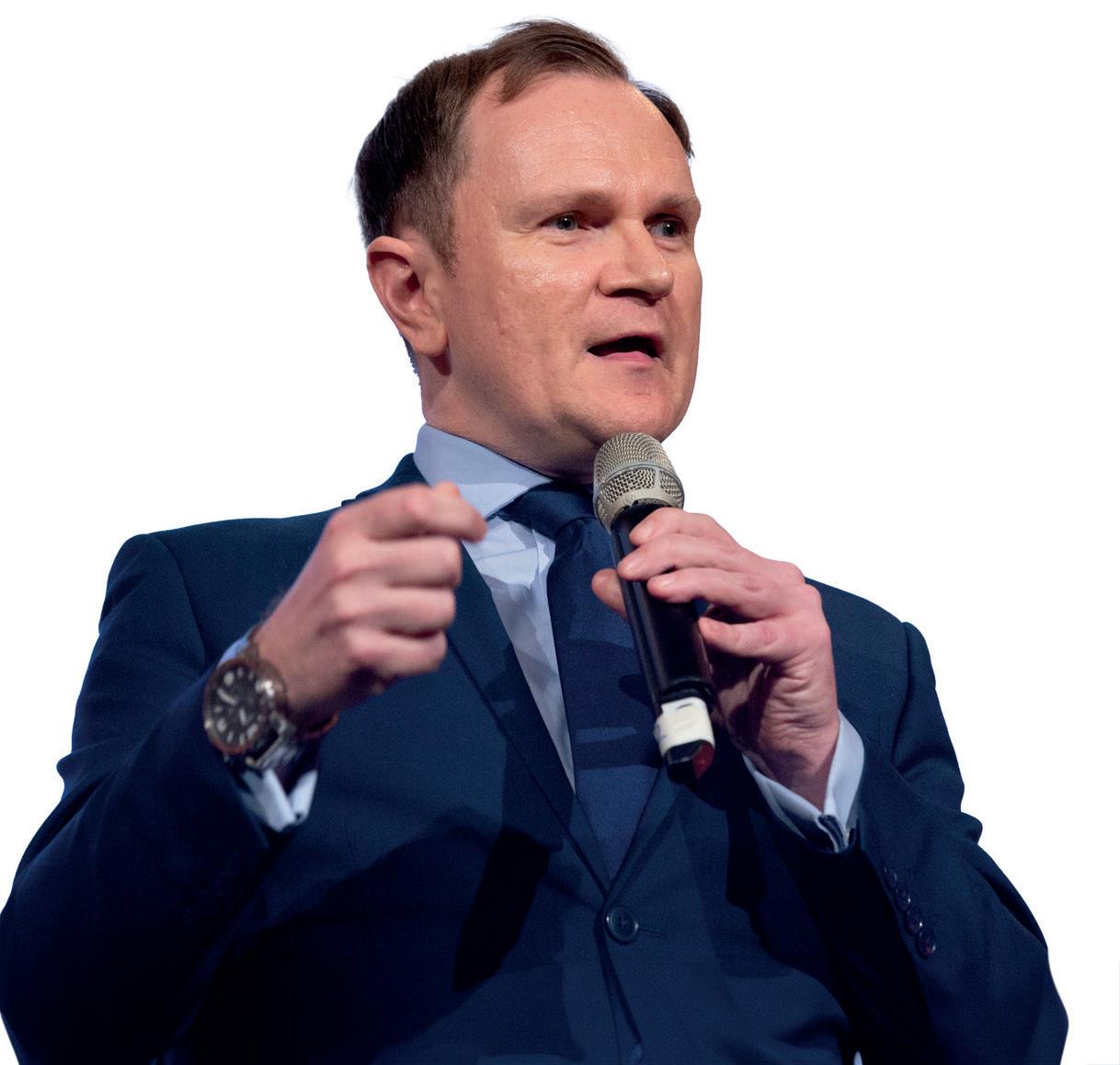
This year we’ll ensure the bonds between the health of the nation and its economic growth become even stronger, and that our leaders across industry and government understand this. We’ll be undertaking the most comprehensive programme
of work yet to showcase and evidence the myriad ways our sector delivers health improvement and subsequently economic improvement.
As well as looking at our contribution to the UK’s economy and health landscape, the sector must continue to make strides in its own improvements, by striving to meet higher standards of inclusion and diversity and making spaces as accessible as possible. To be fit to play our fullest role nationally, we must embrace a renewed focus on inclusion and the expectations of all consumers, to experience a seamless digital service across our facilities, equipment and digital platforms. These fundamental challenges sit alongside environmental sustainability as the biggest areas of risk to our sector overall, and UK Active will be doing everything it can to support members on these journeys of improvement.
We should be optimistic about the future. Our sector has the chance to seize incredible opportunities. l
“Our sector has clearly learned important lessons from the pandemic and energy crises”
67 ©Cybertrek 2024 Issue 1 2024
2024 will be ‘a crucial year’ in the UK, with a general election
Edwards: ‘Incredible opportunities await’
PHOTO: SHUTTERSTOCK/GROUND PICTURE
PHOTO: UK ACTIVE/CARMEN VALINO
BUILD WELL
As W3Fit gears up to launch in the US, we ask Founders Lucy Hugo, Monica Helmstetter and co-founder David Zarb Jenkins for an update
Tell us about 2023. What kind of year did you have?
DZJ: We welcomed 200 delegates to W3Fit in 2023 in Split, Croatia, registering good growth over our inaugural event in Malta in 2022.
A beautiful hotel and location, as well as great weather set the scene and the feedback on the event has been very positive, with a senior audience in attendance.
It was all smiles from the moment everyone arrived until the closing reception, with great energy and positivity evident throughout the programme.
How did 2023 built on the launch year for W3Fit?

DZJ: The W3Fit launch event in 2022 in Malta was a huge success, with numbers and engagement by attendees far exceeding our expectations and this achievement created a platform for us to build on.
We’re elated at how W3Fit is evolving as a mainstay for the industry – in 2023 we saw increased numbers, new product categories and a more international audience contributing to the continued growth.
What changes did you introduce for the 2023 event?
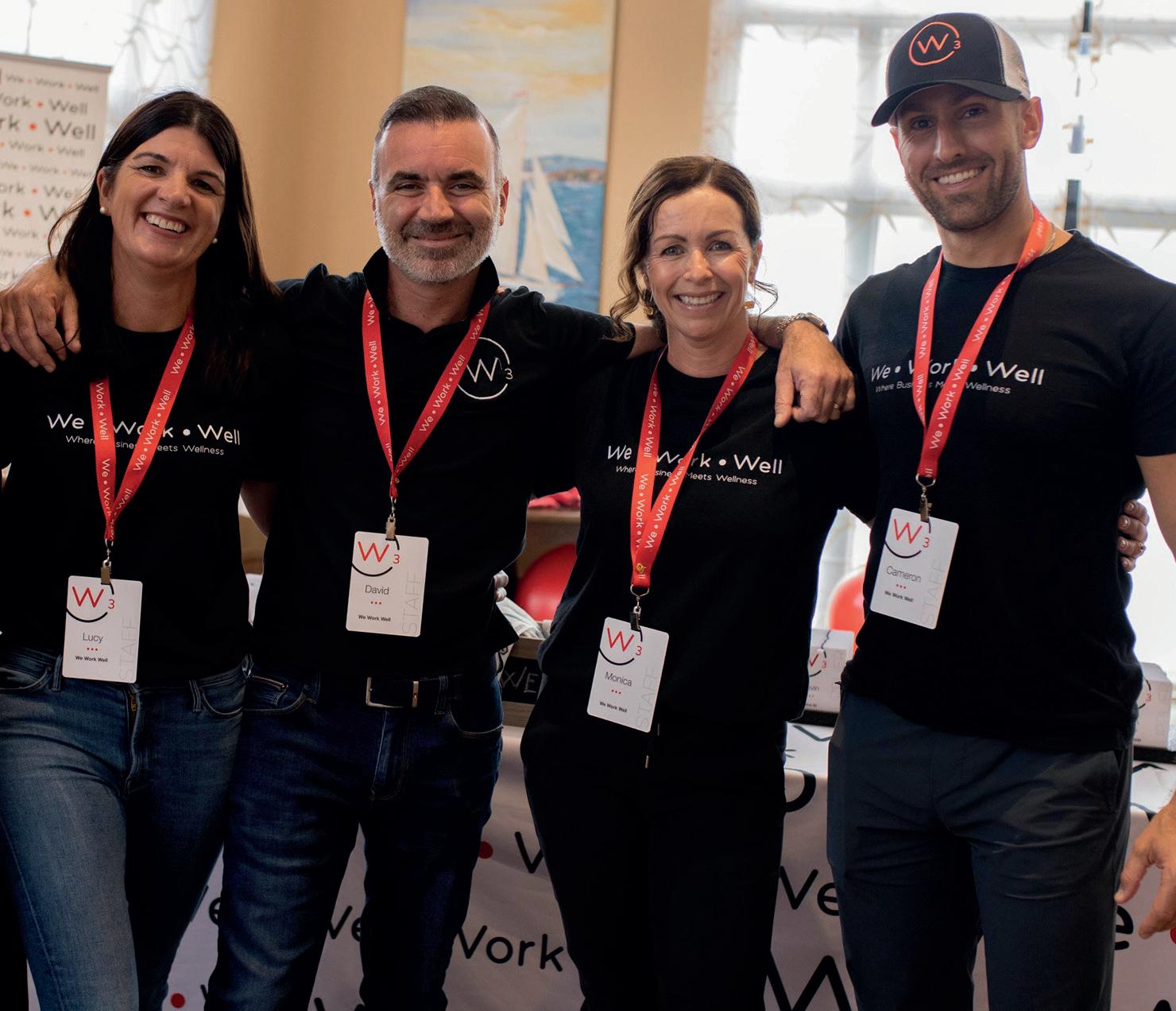
DZJ: In terms of audience, we aimed to make the event more international, with more operators attending from Europe and the Middle East.
From a UK perspective, the event was strong in 2022, but we were conscious many supplier attendees are looking to do business with operators from Europe and the Middle East, so following feedback we grew the number of operators from these regions and we will continue to develop this further in 2024 to enhance the mix of represented countries.
What were the highlights of the 2023 event for you personally?
MH: Watching 180 fitness industry leaders burn energy and build connections at our opening Burn and Build party was a highlight for me.
We encourage our attendees to reimagine how they connect at events, fostering stronger and more authentic business relationships.
SPONSORED
(L-R) Lucy Hugo, David Zarb Jenkins, Monica Helmstetter and Cameron Close
PHOTO: WE WORK WELL
PHOTO: WE WORK WELL / JESUS A. FERNANDEZ

We understand the passion our attendees have for fitness and wellness, however, at many industry events, they don't often get the chance to share that passion. On opening night, they rose to the challenge and pushed their limits during our dynamic teamcentered workout. We all had a lot of fun and it just set a wonderful tone for the event ahead. The Burn and Build opening workout will be a staple at all of our events, both in Europe and the US.
DZJ: The teambuilding activity stood out for me as a tremendous success. 200 delegates landed in the town of Split in We Work Well t-shirts and team colour-coded bandanas for an evening scavenger hunt that was a bit more competitive than we expected! The evening was capped off by dinner in a local restaurant looking over the Adriatic.
You’re gearing up to launch W3Fit in the US. What gap do you see in the market?
LH: Right from the start, we’ve been mindful of creating an event platform that’s scaled to adapt to the evolving needs of any vertical market it enters – both now and in the future.
Watching emerging trends, we saw advancements in technology and continuous innovation in the health and wellness space and believe the timing is right to launch W3Fit into the North American market.
The inaugural event will be held September 8-11, 2024, at Estancia La Jolla Hotel and Spa, California and we’re thrilled that Cameron Close will be leading this new initiative as event director.
On opening night, our attendees pushed their limits during a teamcentred workout
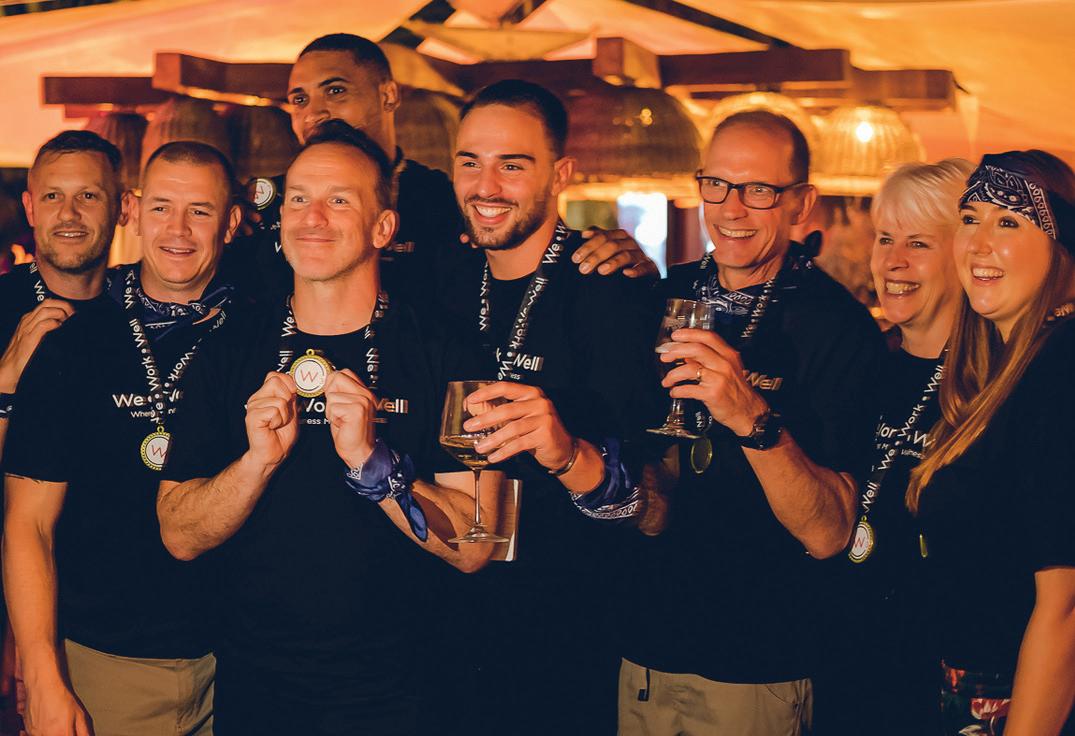
What are your goals for the new US event?
LH: Much like its European counterpart, W3Fit North America aims to represent the next generation of hosted buyer events, attracting innovators in the US club, fitness and hospitality industry through pre-scheduled one-to-one meetings, interactive education and networking activities – all centered around cultivating authentic business relationships, while promoting the health and wellbeing of everyone involved. l
l More: www.weworkwellevents.com
69 ©Cybertrek 2024 Issue 1 2024
Team yellow members take turns to blast jumping jacks during the Burn and Build workout
Scavenger hunt winners, team navy
PHOTO: WE WORK WELL / JESUS A. FERNANDEZ
In that moment, I changed my mindset from being an impossibility thinker to a possibility thinker

Life lessons ____
VICTOR BRICK
Brick recalls the terror of buying a failing club and how the lessons learned have propelled him through his career
There have been many challenges over my career, including when I tried to fi x the roof of my first club and almost bankrupted the company and when I took a million dollars out of the business and lost it in the stock market within half an hour. But the experience that taught me the most lessons and which I’ve drawn on many times over the years, is when I bought my first health club in Baltimore.
It was 1985, I was doing all these different jobs to make a dollar here and there: coaching and refereeing basketball, teaching tennis and teaching physical education at a Community College. These were seasonal jobs which all finished at the end of the school year. We needed something more reliable, so my wife Lynne and I decided to take the plunge, follow our dream and buy our own club. As an aerobics teacher with a loyal following, she was going to be the superstar magnet.
We borrowed money from my parents and bought the Padonia Fitness Center, a combination health club/ racquetball club in Baltimore, Maryland. Lynne was pregnant when we acquired the club and was soon out of action. At the same time, I realised I hadn’t done the necessary due diligence. We’d bought the club thinking it made US$28,000 a month, when actually it was billing US$28,000 a month, but only collecting US$18,000. So we had a US$10,000 a month deficit and no back-up resources.
In a panic, I called the previous owner, Clark MacKenzie, who’s still a good friend, and asked him if he would take the club back. He said to me: “Victor, I'll take the club back, but I thought you had more guts than that.”
Talk about a punch in the stomach. I paused for a moment and then said: “On second thoughts, Clark, I think we’ve got it covered.”

70 Issue 1 2024 ©Cybertrek 2024 TOUGH TIMES

PHOTO: BRICK BOIDES
Lynne and Victor Brick have spent their lives in fitness

In that moment I changed my mindset from being an impossibility thinker to a possibility thinker and vowed to myself to make it work.
The gap between the known and the unknown can easily be filled with fear, if you let it be, but at that moment I determined to fill that gap with a plan instead.
We were losing US$10,000 a month and needed 200 sales to break even, so I decided to hold an open-house sale weekend. We promoted free aerobic classes, free refreshment and free balloons.
Victor Brick Bio
Victor Brick is founder of Brick Bodies and the John W Brick Mental Health Foundation, as well as being CEO of Ohana Growth Partners, which owns 100 Planet Fitness clubs in the US and Australia.
However, I made a rookie error and didn’t proof the postcard we mailed out – it said we had free buffoons!
That didn’t seem to hurt us and we did 205 sales that weekend. Five more than we needed. Shortly after that Lynne came back from maternity leave and since then we’ve never looked back. We now have 100 clubs and employ 1,100 people.
Never give in, never, never, never
We still own that small club – it’s now our corporate office – and every time I drive up to it I think about that scared little boy trying to give the club back. What I learned from that experience is that no matter what you try to do, if you work hard enough, you can at least break even. And if you can't, what's the worst that can happen? You start over.
Your attitude determines your altitude and that experience has influenced how I approach everything: when I need to make a decision, I make it and live with the results. In combat, they say if you're not afraid, you're a fool, but it's how you handle your fear that counts. It’s the same in business. If you're not concerned, you're naïve, but it's how you handle your concern that will make the difference.
72 Issue 11 2023 ©Cybertrek 2023 TOUGH TIMES
Celebrating the opening of the 100th club
PHOTO: DAN STACK

There are still times when I wake in the middle of the night worrying about decisions. At those times I employ every stress-reducing technique I know and remind myself of the plan.
In business you never get fully comfortable with big decisions, because things could always go south. COVID is the best example of this. But, like the military, you fall back on your training and rise to the occasion.
What that experience taught me was that I had a lot more grit than I thought. Tough times don't build character, they reveal it. The ability to hang in there will get you through. Many people consider quitting right before they become successful.
I remind myself of that situation time and time again. Success comes from good judgement; good judgement comes from experience; much experience comes from bad judgement. I've had a lot of “experience” and the key is to learn from your mistakes.
You have to fail and then you have to get back up again. That's all part of grit. You keep swinging and you keep fighting and battling and all of a sudden you'll break free. It's as Sir Winston Churchill said: “Never give in, never, never, never.”
I have that saying on the wall in my office.

Blast from the past – the original club in Baltimore
The gap between the known and the unknown can easily be filled with fear if you let it be
I’d also like to share the advice my dad gave to me when he drove up from DC to help me that week in October 1985. I was so scared I couldn't sleep. I was in my office and when I saw his face my heart leaped out of my chest. I started whining to him about all the bad things that were going on and asked him: “Dad, what are we gonna do?” He said: “Just work a little harder.”
And that's what I've been doing ever since. When times are tough work a little harder. That little bit of effort will get you home. ●
73 ©Cybertrek 2024 Issue 1 2024
Brick Bodies has embraced the Planet Fitness concept
PHOTO: BRICK BODIES
PHOTO: BRICK BODIES
PROGRESS REPORT
expectations are rising all the time, but nowhere more than in relation to digital. UK Active’s Dave Gerrish explains how the industry is shaping up
Organisations across the UK health and fitness and leisure sectors are at different levels of maturity when it comes to digital transformation and although they’re making strides, improvements can still be made to enable them to reach a wider audience and reduce inequalities by enabling better access.
UK Active has worked with Sport England, the British Chamber of Commerce and a raft of other partners to publish the results of its most recent consultation on digital in its report Digital Futures 2023: The third annual review of the digital maturity and effectiveness of the UK’s fitness, leisure and sports sector. This report provides the fullest picture yet of the sector’s digital status.

The 2023 consultation was completed by 204 fitness, leisure and sports organisations and saw a 14 per cent increase in the number of private operators taking part, when compared to 2022. Partners included National Governing Bodies for sports and the Active Partnership Network in the UK.
Of the 136 UK operators who took part, 62 per cent were public sector, 26 per cent private and 12 per cent universities. Within the public sector tranche, 55 per cent were trusts and 45 per cent local authorities.

About the study


The Digital Futures research programme began in 2021 and participation has doubled each year since, with this year’s sample representing 2,200 sites across the UK serving an estimated 5.5 million customers a year –up from 1,800 last year.



The UK Active report has been endorsed and supported by the British Chamber of Commerce
The sample was composed of 76 per cent English, 6 per cent Scottish, 5 per cent Welsh and 1 per cent Northern Irish respondents, while 12 per cent were nationwide operators. 51 per cent had 1-5 sites, 16 per cent had 6-10 sites, 14 per cent had 11-50 sites, 5 per cent had 51+ sites and 13 per cent were NGBs and Active Partnerships. This year also saw global territories used as a benchmark following a recommendation by PureGym – a member of the Digital Futures Advisory Group – working with AUSactive, EuropeActive, Sport:80 and the GameDay app.
Digital Futures 2023 provides a measure of how well organisations are embracing digital, and highlights the main areas for improvement to digital strategies. It also draws on data from UK Active’s consumer insights work to provide context behind consumers’ preferences that could have an impact on an operator’s digital journey.
74 Issue 1 2024 ©Cybertrek 2024
Consumer
PHOTO: UK ACTIVE

Consumers expect frictionless digital experiences

64% of operators have a digital strategy, but only 20% have a digital strategy that’s ‘up to date, complete, ambitious and supported by a roadmap’
75 ©Cybertrek 2024 Issue 1 2024
PHOTO: SHUTTERSTOCK / GAUDILAB
The scoring system
A digital maturity and effectiveness score was established based on multiple choice responses from an online survey.
Questions asked in 2023 were identical to those asked in 2022, with the addition of two about emerging technologies and environmental impact.
Organisations were asked 40 questions to establish how they engage with digital. These covered five areas – organisational model, performance and impact, data and insights, digital experience and accessibility, inclusion and satisfaction.
The overall scores (health and fitness operators plus other participants) in these five areas in 2023 showed small changes on the previous year, with scores down 1 per cent in the area of organisational model and digital strategy, up 3 per cent on performance and impact, down 5 per cent on data and insights, up 1 per cent for digital experiences and the same year-on-year for accessibility, inclusion and satisfaction (see table 1).
The 5 per cent decline in the score for ‘data and insights’ suggests that with the constant influx of new technologies such as AI, and the increasing volume of data organisations are collecting, some feel they’re falling behind, even if they’ve been progressing in other areas of digital.
Digital Futures categories
The most established category of operators – called the Digital Futures Cohort – is made up of organisations that have taken part in the consultation for two or three years (58 of the organisations that took part in 2021 also participated in 2022, while 28 have completed all three years. See Table 2).
Members of this group continuously outperform the rest of the overall sample. For example, they scored 65 per cent for ‘performance and impact’, which is 10 per cent above the sector as a whole.
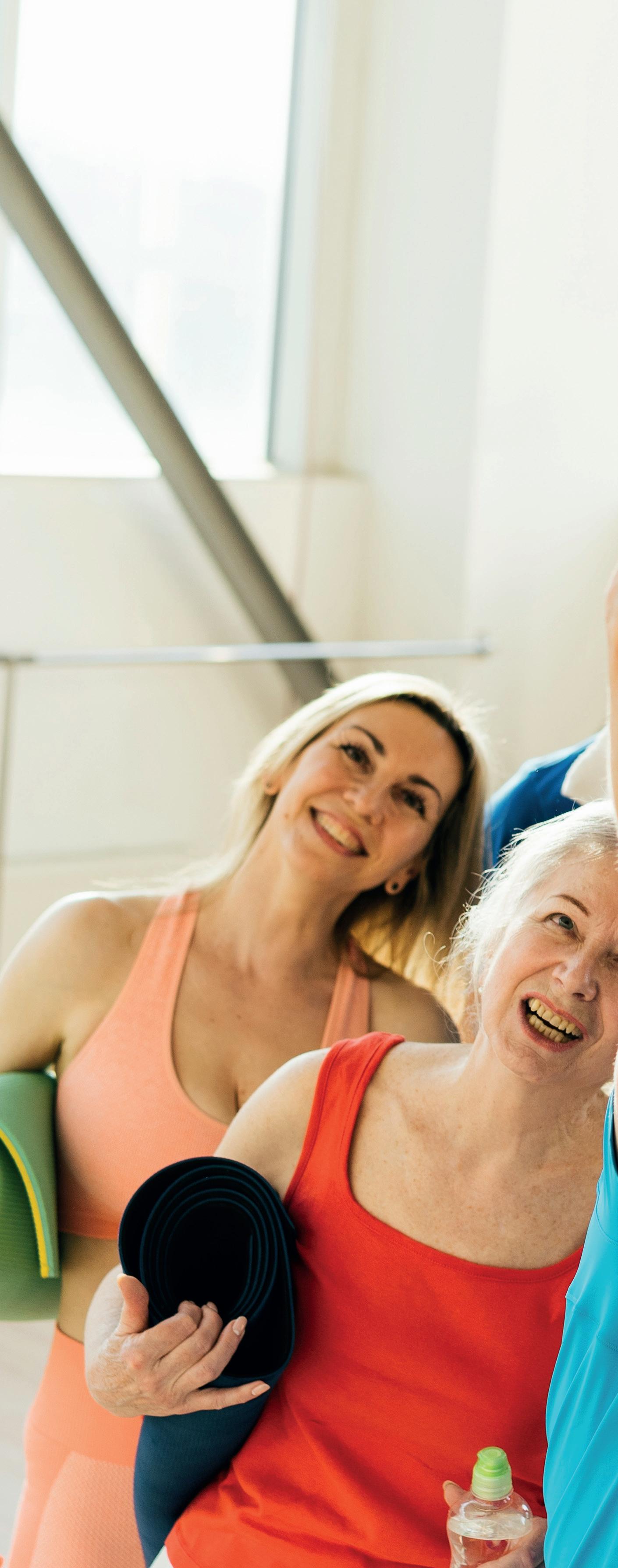
76 Issue 1 2024 ©Cybertrek 2024 TECH Organisational model 47% (-1% VS 2022) 55% (+3% VS 2022) 50% (-5% VS 2022) 47% (+1% VS 2022) 56% (Equals 2022) Performance & impact Data & insights Digital experiences Accessibility, inclusion & satisfaction SOURCE: DIGITAL FUTURES 2023
Table 1: All Digital Futures participants – highest scoring digital areas
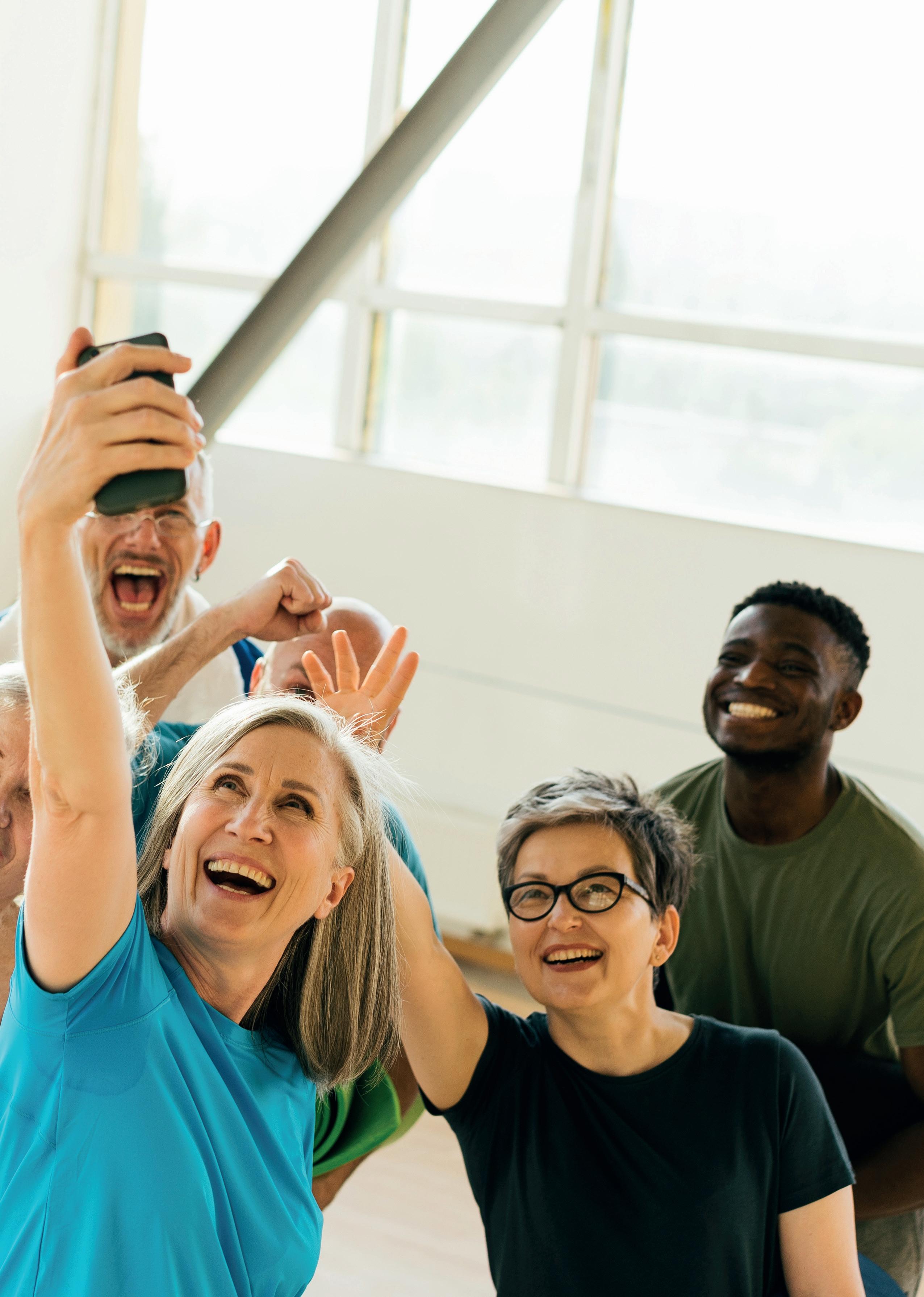

of operators use social media, creating channels for members to use
SHUTTERSTOCK / RZ IMAGES Check your digital score here https://digitalfutures. ukactive.com/preview Private operators scored highest on average, with 65%, while trusts scored 56%, local authorities 5% and universities 53%
67%
PHOTO:
57% Returning participants
51% Fitness & leisure operators
43% First time participants
47% Overall
Furthermore, 64 per cent say digital accounts for at least half their revenue (compared to 47 per cent of the sector overall) and 97 per cent say they make operational savings through the use of digital (compared to 84 per cent of the sector overall).
Those participating in both 2022 and 2023 increased their score by 4 per cent on average.
Banding operators by performance
The two- and three-year participants in the Digital Futures Cohort are categorised as either Digital Leaders (if they score 80+) or Digitally Established (if they score 60-79) and together they achieved a digital maturity score of 57 per cent this year (against 53 per cent in 2022).
Five operators reached Digital Leader status – the pinnacle of the digital maturity and effectiveness index – by scoring 80 per cent or more. This compares with three in 2022 and just one in 2021. The highest score was 87.
Being a Digital Leader typically means tech is already driving business performance and setting the benchmark for peers and other companies in the market to follow. However, becoming a Digital Leader isn’t within the scope of all organisations.
One national operator who took part in the survey actually acknowledged it would never reach Digital Leader status, as the complexities of its service offering were preventing it from gaining a higher score. Nevertheless, it still gained from the process, as the programme highlighted that it needed to work on its data strategy.
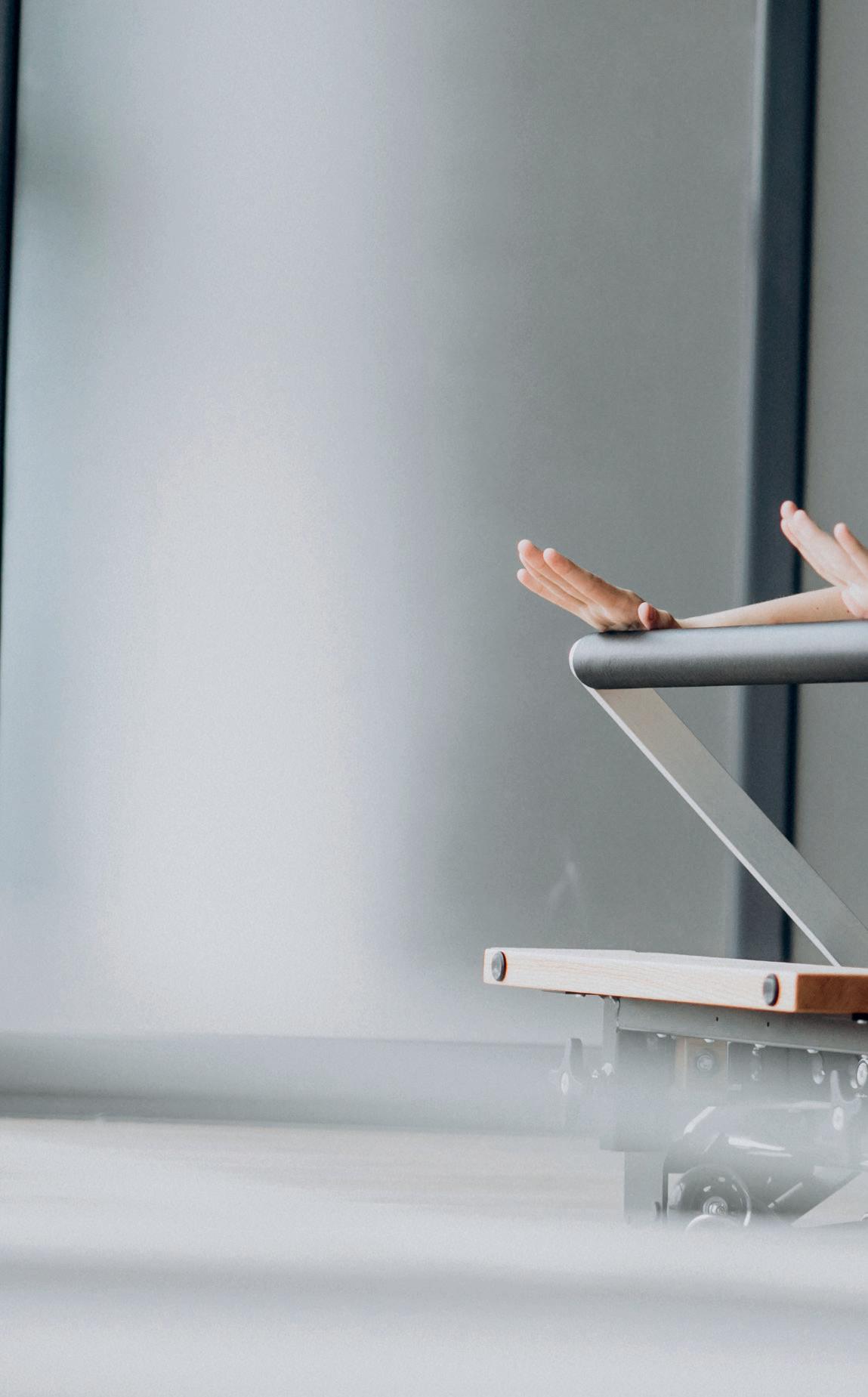
Digital Leader (80+%)
Digitally Established (60-79%)
Digital Experimenter (40-59%)
Digital Foundations (20-39%)
Digitally Aware (0-19%)
The index describes those scoring 60-79 per cent as Digitally Established, meaning they’re harnessing digital more than most peers, but have opportunities for greater automation and innovation.
In the next band down, those scoring 4059 per cent are called ‘Digital Experimenters’, typically meaning they’re making great strides forward, but missing the investment, goalalignment and rapid advances to yield a really strong performance. Organisations in this bracket scored an average of 51 per cent.
First timers sit in the Digital Foundations (20-39) and Digitally Aware (0-19) categories, scoring 43 per cent on average and when comparing their score with those who’ve participated in all three years, it’s clear this drives progress. The lowest score was 29.
Steps to improving your organisational model
1. Develop a robust digital strategy
2. Ensure digital is baked into processes organisation-wide
3. Work to improve digital literacy throughout the organisation
4. Invest in systems improvements
5. Implement customer research ahead of development
78 Issue 1 2024 ©Cybertrek 2024
TECH
Table 2: Whole Digital Futures sample, scores by category
SOURCE: DIGITAL FUTURES 2023

The decline in scores for ‘data and insights’ suggests the influx of new tech such as AI makes some feel they’re falling behind
Scores by type and location
Private operators scored highest on average, with 65 per cent attaining the Digitally Established level, trusts scoring 56 per cent, local authorities 54 per cent and universities 53 per cent.
Private operators also scored higher than public operators and universities for most digital categories, but universities scored highest for Data and Insights and matched private operators for Performance and Impact.
As with previous years, organisations with more physical sites scored higher too. Those with 51+ sites scored 64 per cent, 11-50 sites 52 per cent, 6-10 sites 49 per cent and 1-5 sites 45 per cent.
The overall results
The average score for the entire sample this year was 47 per cent across all areas of assessment

Who’s backing Digital Futures?
Advisory
EGym
Gladstone
Les Mills
Myzone
Technogym
Xplor
Operators
Anytime Fitness
David Lloyd Leisure
Everyone Active
Parkwood
PureGym
Suppliers
Endurance Zone
Keepme
Leisure Labs
Perfect Gym
Xn
Zoom Media
and each of the organisations that took part also received scores in the individual categories.
This score was four percentage points lower than the previous year, but this doesn’t necessarily mean a drop in digital maturity for the sector as a whole. There have been new participants from inside and outside fitness and leisure and a slightly higher participation from smaller organisations, which tend to score lower.
In addition, the greater the knowledge of digital, the more accurate (and sometimes lower) the score.
The scores for the whole sample for the question ‘Do you have a digital strategy?’
was up 36 per cent on 2022 to 64 per cent, suggesting there’s a more concerted effort to build a digital focus into overarching strategies, although only 20 per cent said they have a digital strategy that’s “up to date, complete, ambitious and supported by a road map.”
79 ©Cybertrek 2024 Issue 1 2024
PHOTO: SHUTTERSTOCK / PH888
50% of operators say their people are ‘digitally savvy’

This number rose to 43 per cent in the higher-level Digital Futures cohort.
When asked, ‘How does digital influence participation or engagement growth?’ scores were also up by 32 per cent on last year, indicating that investing and using digital processes is having a tangible impact when it comes to reaching and engaging with more members.
However, when asked, ‘What do you do with data you collect from audiences?’ The average score was down by 9 per cent (5 per cent among health and fitness operators), suggesting, as mentioned, that more needs to be done to support operators in using data effectively and the conclusions of the research also highlighted this as a major development area.
Old software
Old systems are still failing some in the sector, with 90 per cent of operators saying at least some of the systems they have hold them back (compared to 84 per cent in 2022).
Legacy systems that don’t integrate seamlessly present a cost and logistical challenge, particularly when multiple systems are required to provide the best experiences and operators are still finding leisure management systems challenging to work with.
There’s a cost and resource impact in changing systems but those who are upgrading to cloudbased versions can better meet consumer needs.
2023 saw the launch of a Digital Futures microsite, which enables software suppliers to support customers in embracing digital transformation, while also allowing operators to see year-on-year views of results with recommendations and resources.
90% of fitness and leisure operators say that at least some of the software they use holds them back
The recommendations
Looking back at the development of the Digital Futures initiative, we see that in 2021, collaboration and simplification were the two key areas of focus – collaboration was about organisations working more closely together with each other, with platform providers and with other third-party providers, such as local authorities, NGBs and Active Partnerships.
Simplification was about reducing complexities, such as the volume of different membership types and products, disparities across different local authorities and multiple versions of platforms.
In 2022, the focus turned to digital maturity and effectiveness, through the introduction of recommendations to deliver organisational excellence and exceptional customer experience.
Three themes emerge in 2023 – data use , inclusion and personalisation.
80 Issue 1 2024 ©Cybertrek 2024
TECH
PHOTO: SHUTTERSTOCK / CHAY_TEE

Average overall feedback
All fi tness and leisure operators
94% have online booking/ purchasing (90% in 2022)
93% have automated some processes (87% in 2022)
93% say digital increases participation (91% in 2022)
89% have an app (80% in 2022)
89% say digital increases retention (88% in 2022)
88% make operational savings through the use of digital (89% in 2022)
73% send regular marketing emails/messages (70% in 2022)
67% are active on social media (60% in 2022)
64% provide digital products or services as well as physical (62% in 2022)
53% say digital accounts for at least half of their revenue (42% in 2022)
50% say a large proportion of their people are ‘digitally savvy’ (48% in 2022)
32% say connected experiences are an established part of their offering (32% in 2022)
25% continuously monitor and invest in how their digital channels are found (new for 2023)
23% say virtual experiences are part of their offering (23% in 2022)
19% say their web presence is as good as it can be (18% in 2022)
7% use machine learning in automation (8% in 2022)
It’s clear large parts of the sector need more support – even those with higher levels of digital maturity – in the area of data use, where scores have gone down and there’s a significant opportunity to improve inclusivity in ways that would benefit consumers and operators.
Operators need to do more to deliver on inclusion and accessibility to ensure digital transformation doesn’t exclude segments of the population and there’s a need for shared case studies to demonstrate how this can benefit everyone – particularly through the application of personalisation, which can have such a powerful impact on outcomes and engagement.
These themes can only be integrated into an operator’s overall strategy if they’re clearly
identified, supported and resourced, but there are huge wins to be had for the sector if this can be implemented, including delivering a competitive advantage, enhancing customer engagement, driving efficiency, fostering agility and promoting data-driven decision-making.
Further reading and insight
Digital Futures 2023 offers tips and guidance to help operators and suppliers establish tailored solutions to ensure the advantages of digital can be felt across all organisations. You can download it at www.hcmmag.com/DF23. ●
Dave Gerrish is strategic lead – digital at UK Active davegerrish@ukactive.org.uk
81 ©Cybertrek 2024 Issue 1 2024
2023
SOURCE: DIGITAL FUTURES
Eco-floors
How healthy is your flooring for the people who train on it and the planet? Steph Eaves sheds light on sustainability practices

Fusion flooring is recyclable and designed for a long lifecycle
NET-ZERO
PHOTO: BLK BOX / ADIDAS
Gregory Bradley
BLK BOX
What has been your most sustainable installation?
Our work with Adidas at its World of Sport headquarters in Herzogenaurach, Germany required us to comply with LEED Gold certification standards in order to meet its ambitious sustainability targets.
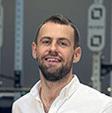
In collaboration with EXOS and Adidas’s project delivery team, BLK BOX supplied and installed over 20,000 sq ft of Performance flooring throughout the campus, ensuring each area was tailored to the unique athletic and design requirements of the space.
Our designs not only facilitated top-tier athletic performance but also embodied the eco-conscious spirit that drives Adidas to achieve its carbonneutral 2050 vision. Our performance flooring was selected due to the high recycled content and responsible supply chain of materials. The result was a net reduction in carbon emissions.
What’s your company’s approach to sustainability?
Our approach is multifaceted. We adopt and draw inspiration from principles akin to the cradle-to-cradle philosophy and strive to innovate within our own operations.

We reduce our carbon footprint through local manufacture, ensuring materials are responsibly and sustainably sourced, while not losing sight of the profound impact that highquality, long-life products can have on our industry and future generations. Through careful material selection, we’ve been able to ensure that at least 65 per cent of raw materials and packaging within our Performance flooring range are responsibly sourced post-consumer products.
At BLK BOX HQ, 65 per cent of our electricity is generated from renewables and we’ve invested over £2.5m in the latest machinery to help minimise our environmental impact.
We emphasise the reuse and recycling of materials, with 56 per cent of our steel recycled and a powder coating line that reclaims 94 per cent of overspray. In line with our ‘Built Better’ philosophy, we also ensure our suppliers meet stringent ethical standards as part of our wider sustainability strategy.
Tell us about the eco credentials of your flooring
Being FloorScore accredited and LEED v4 certified, BLK BOX Performance flooring is a testament to our commitment to maintaining the lowest possible levels of volatile organic compounds, ensuring air quality in any training facility remains safe for users and staff. Beyond emissions, Performance flooring is produced to recognised ISO standards and embraces full transparency through Environmental Product Declarations (EPDs) and Health Product Declarations (HPDs).
Which of your products is most sustainable?
Fusion, our flagship product in the Performance range, is a great sustainable innovation, being made of 98 per cent recycled content, surpassing the industry standard for sustainable flooring without compromising on aesthetics or performance. Its duallayered design has a vulcanised rubber surface layer that’s fusion-bonded to a shock-absorbing base layer.
BLK BOX Performance flooring ensures the air quality in any facility remains safe for users
83 ©Cybertrek 2024 Issue 1 2024
PHOTO: BLK BOX
Paul Lafone
TVS Group
What has been your most sustainable installation?
We recently supplied our Sportec Style Tiles for Virgin Active’s extensive refurbishment programme. Sportec is our most sustainable product because it’s made from over 99 per cent recycled material and is so hard wearing that it’s not uncommon to see the products used for over 10 years. It can also be recycled again at the end of its life.

ISO 14067 (Product Carbon Footprint) and ISO 14040/44 (Life Cycle Assessment).
What’s the thinking behind this approach?
Our use of the Product Carbon
Footprint demonstrates our commitment to transparency and environmental awareness. It serves both as a benchmark in the development of new products and a guide in defining our corporate strategies, while also offers the potential to identify improvements.

How does your company approach sustainability?
The Product Carbon Footprint (PCF) determines the climate impact of each of our Sportec flooring products. We look at their whole lifecycle, calculating the production of greenhouse gases from the raw materials or purchased parts of the product, up to the point at which it leaves our company.
The calculation is carried out using a software tool certified by a sustainability consultancy called Denkstatt, which complies with the standards
We look at the lifecycle of our products from ‘cradle to grave’
Our products are labelled in our publications and technical documents with the corresponding CO2 data, so customers who have to comply with environmental requirements can see at first glance whether a product meets the criteria.
What other steps do you take?
Our energy management system also helps us use energy resources efficiently and our factory’s energy management system is certified to ISO 50001.
Energy-relevant topics feature in all our processes. With our energy policy as a basis and strategic goals in mind, the programme is developed, implemented, regularly evaluated and constantly optimised.
What are the eco credentials of your flooring?
We manufacture flooring products from secondary material, but also recycle 100 per cent of accumulated material, such as offcuts, startup waste or older unsold product lines, in order to feed it back into the production process.
NET-ZERO 84 Issue 1 2024 ©Cybertrek 2024
PHOTO: TVS GROUP / DOMINIC WRIGHT
PHOTO: TVS GROUP / KRAIBURG RELASTEC GMBH
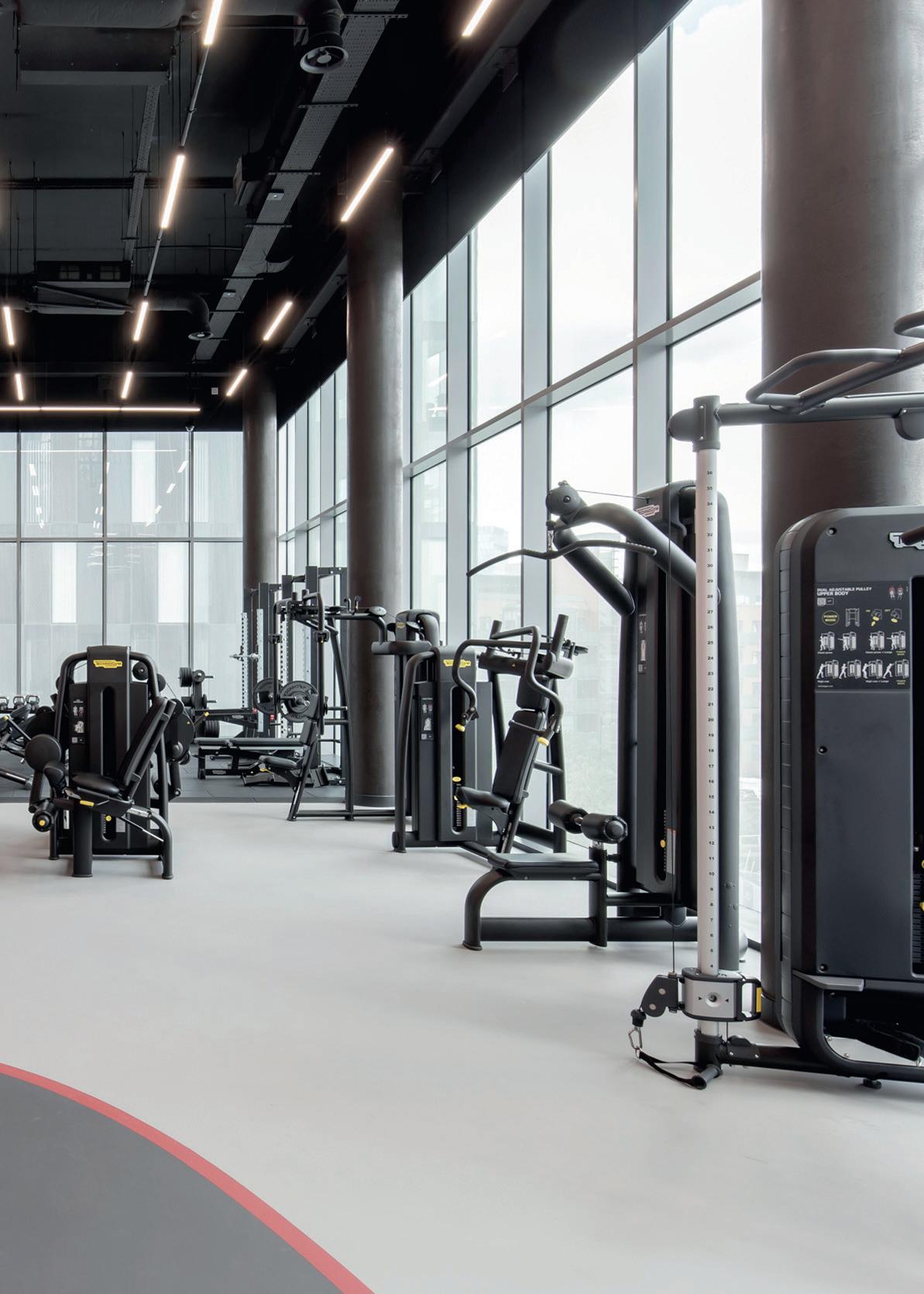
Sportec is made from over 99 per cent recycled material
85 ©Cybertrek 2024 Issue 1 2024
We’re transforming our own leftover material into a great flooring solution that maintains performance
Marcos Requena
Pavigym
What is your company’s approach to sustainability?
Our commitment is evident through our adherence to ISO 9000 and 14000 standards, especially 14001, ensuring rigorous quality and environmental stewardships.

We’re actively involved in EU projects, particularly in the development of high-performance materials for functional flooring and sports flooring and in doing so, we reaffirm our commitment to a sustainable future that generates a positive global impact and achieves economic and ecological harmony.
Although we’re not currently Cradle to Cradle certified, our company has made substantial progress in the five key areas covered by this certification: material health, product circular economy, clean air and climate protection, water and flooring management and social justice. We’re considering adhering to this certification in the short-term.
Our commitment to sustainability goes beyond compliance and is ingrained in our corporate culture. We work with environmentally certified suppliers and prioritise energy efficiency, using – for example – solar-powered presses and optimising heat retention. In an effort to reduce our carbon footprint, we strategically locate production plants and manufacture exclusively in the European Union, which reduces logistics costs and emissions.
Our workforce’s hybrid working model, with 60 per cent of our time spent telecommuting,
not only increases flexibility, but also reduces fuel consumption. These practices underline our dedication to environmentally-friendly business operations.

Tell us about your most sustainable installation?
JD Fitness Centre in Liverpool has adopted innovative sustainability practices by choosing BigJag, our latest acoustic flooring solution.
As well as offering high subfloor impact protection and effective reduction of noise levels in and around the facility, the flooring also stands out for its contribution to the environment.
Traditional insulation alternatives consist of several layers on top of each other, which involves the use of more materials, with a consequent increase in waste and energy consumption.
BigJag, in contrast, has three layers integrated into one piece, reducing environmental impact, with less waste, more efficient transport and lower energy consumption.
86 Issue 1 2024 ©Cybertrek 2024 NET-ZERO
Pavigym fl ooring is manufactured exclusively in the EU
PHOTO: PAVIGYM
/ BALTIC PICTURES
PHOTO: PAVIGYM
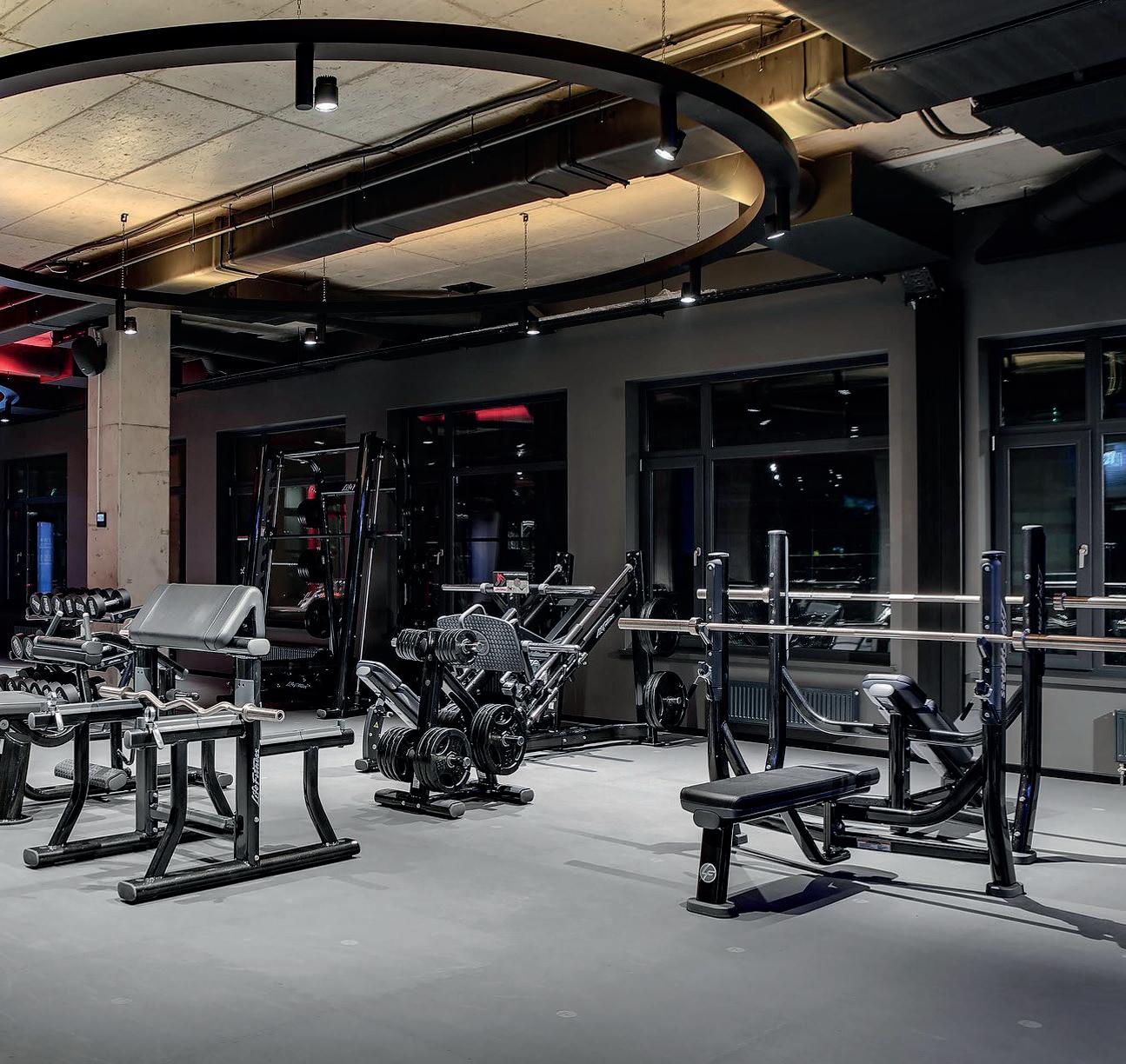
The flooring doesn’t release rubber particles with wear and tear, thus improving the environment and health for users. This choice by JD at its flagship Liverpool facility is a statement of intent and a real commitment to improving the environment.
What are the eco credentials of your flooring?
Our main raw material is virgin rubber. Its manufacturing process is far more efficient, sustainable, low-carbon, resource-efficient, and competitive than tyres-recycled rubber. It prevents the loss of recycled rubber granules which is a great concern for the environment as addressed by the EU Norm 2023/2055.
This rubber is 100 per cent recyclable and reusable, as the loose laid products can be easily disassembled, transported and reinstalled or even remanufactured. Our interlocking system avoids adhesives, any other chemical products and installation rejects during the fitting process: operators get an easy, cost-effective installation.
The products last over 10 years – a key sustainability factor; not having to replace your flooring every three to four years prevents further CO2 consumption. Finally, in addition to our ISO 9001 certification, we are certified on ISO 14001: Environmental commitment.
Which of your products is most sustainable?
Undoubtedly, our Extreme flooring range, as nothing goes to waste during production: we use the sanding of virgin rubber and the reuse of our waste (mainly the remnants from the cutting process) to crush and reintegrate them into the formula. This way, we close the loop, transforming our leftover material into a flooring solution that maintains performance and aesthetics while significantly contributing to sustainability.
Specifically, the Super Black colour (as chosen by JD in Liverpool) has been created by using exclusively recycled additives to reduce costs and environmental impact.
87 ©Cybertrek 2024 Issue 1 2024
James Anderson
Physical
How does your company approach sustainability?
From waste management and travel to our supply chain and deliveries, we constantly look at how we can reduce our impact on the planet.
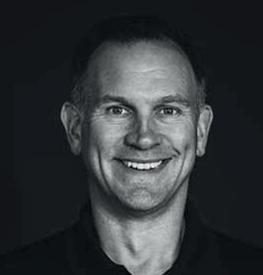
In our supply chain, we select and work with equipment manufacturing partners to ensure optimum quality of product and minimal impact on the environment. Where other factors are equal – and even where it can mean a greater cost of materials – our procurement team is tasked with sourcing environmentally-friendly options.
Our courier partners who make final deliveries to customers are also committed to minimising their impact on the environment: our smaller parcel carriers are carbon neutral and our larger delivery carriers are ISO 14001:2015 accredited.
What are the eco credentials of your flooring?
Physical’s exclusive partnership with Ecore unlocks a range of sustainable flooring solutions for customers. Ecore was born green and has been making smart choices for more than a century: it started by harvesting the benefits of wood without harming trees (Ecore cork products) and has evolved into mining waste streams for high performance raw materials, currently dominated by recycled rubber.
Ecore takes back more than it puts in: stats from 2020 show Ecore diverted more than 111 million pounds of truck tyres from landfill, only contributing 9.6 million pounds of waste to landfill – a Net Landfill Diversion of 101.4 million pounds.
Ecore’s energy-efficient manufacturing processes don’t feature smokestacks, use minimal water and little
Ecore’s energy-e cient manufacturing processes do not feature smokestacks, use minimal water and little or no heat
or no heat and reuse scrap to minimise waste; rubber does not degrade through the recycling process, so it can be continually collected and recycled back into the system.
It also employs a closed-loop chilling system, recirculating water rather than releasing it into the sewer, which conserves 17.5 million gallons of water each year.
By incorporating proprietary energy-efficiency methods, it uses 40 per cent less energy than standard industry procedures.
Which of your products is most sustainable?
All our Ecore flooring. On average, the products contain 62 per cent post-consumer recycled content, and when it upcycles tyres to turn them into flooring, Ecore harnesses all the attributes that made them great tyres in the first place: the ability to support weight, provide traction and absorb shock. This is hugely beneficial to gym operators and users, creating safe, ergonomic, acoustically great surfaces that put a big tick in the sustainability box.
Does Ecore commit to sustainability standards?
Ecore is an active member of numerous organisations and many of its products have earned thirdparty certifications for compliance with rigorous environmental standards. Several products have gone through the EPD (Environmental Product Declaration) process, including a comprehensive life cycle assessment to ISO 14040 standards. Products also meet the stringent criteria required to earn points under two of the six categories of LEED.
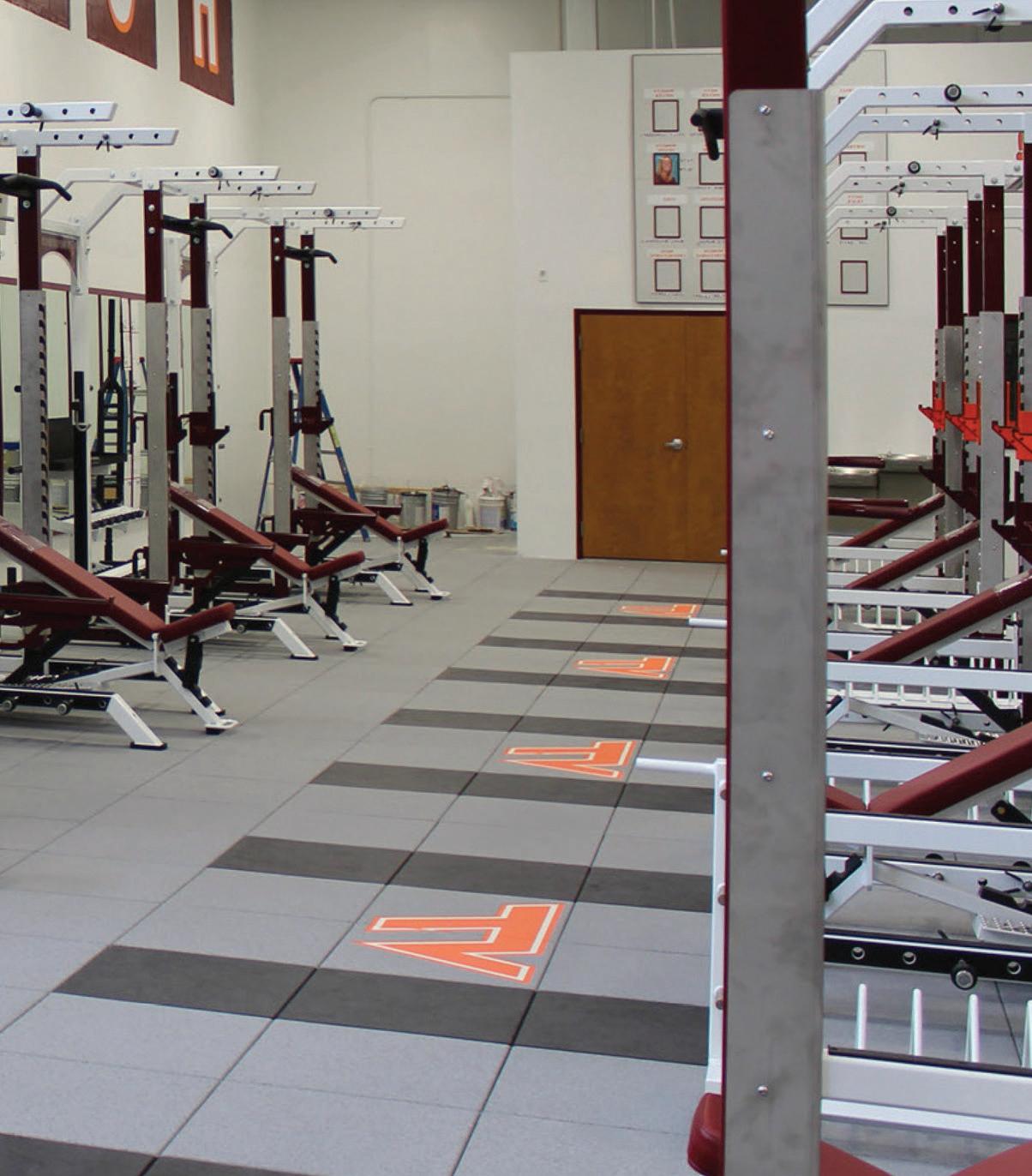
88 Issue 1 2024 ©Cybertrek 2024 NET-ZERO
The Ecore company ‘was born green’
PHOTO: PHYSICAL COMPANY
PHOTO: PHYSICAL COMPANY









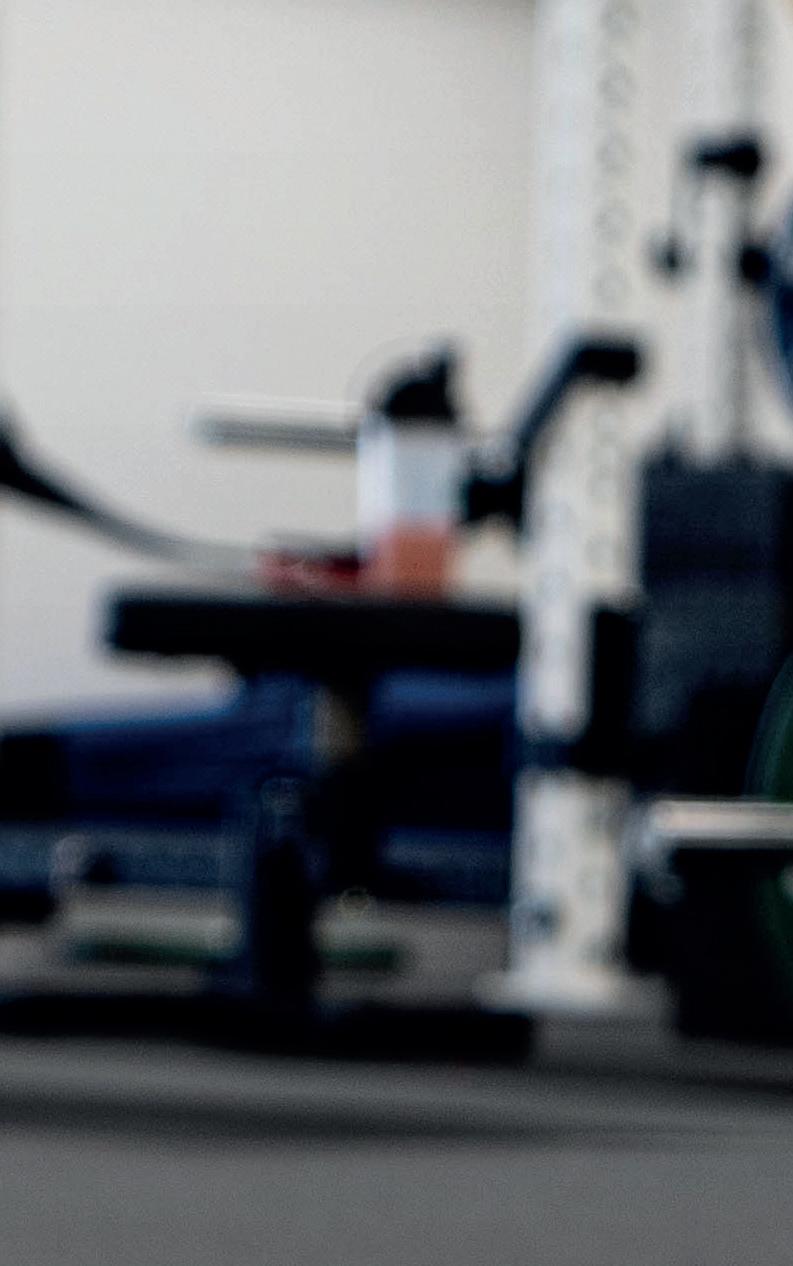













Learn more at blkboxfitness.com FLOORING: BUILT BETTER. FIND OUT MORE
ERGONOMIC DESIGN DAMPENS ACOUSTICS ENSURES SAFETY FORCE REDUCTION UNBEATABLE WARRANTY
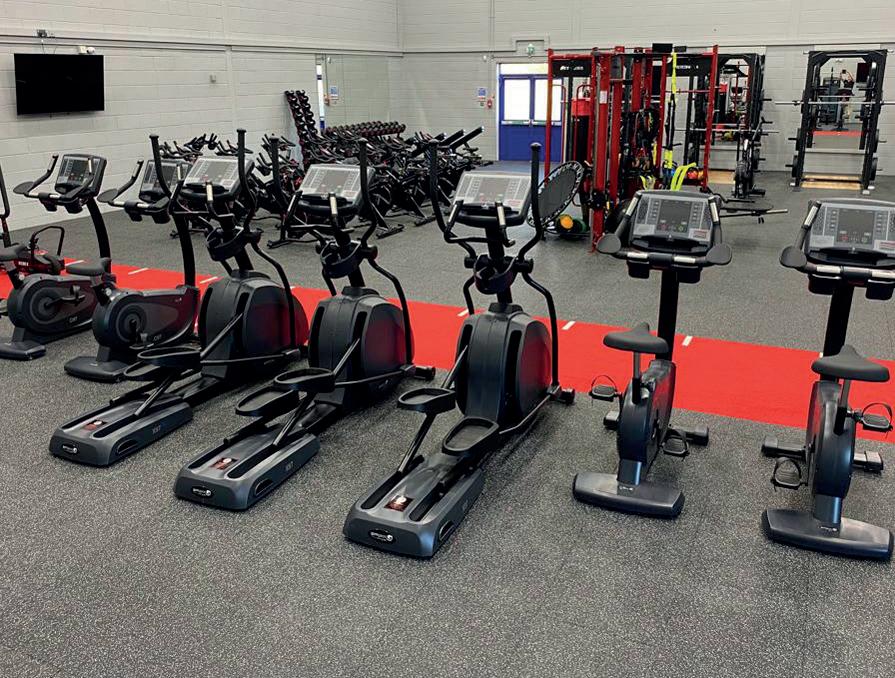
Gym Gear
Tell us about your most sustainable installation
It has to be Salford City Academy, UK. The green aspect was a major factor in the brief we were given from the outset. The facility not only has our recycled flooring solution but also our range of self-powered cardio equipment. Not a single piece of gym equipment requires external power. Adding to the sustainability of this site, most of the equipment is made from steel that can in turn be recycled.
What is your company’s approach to sustainability?

Our environment policy to guide us towards becoming more eco-friendly in all our business activities. Our Environmental Action Plan breaks our Environment policy down into manageable tasks with a deadline against each as we work towards achieving net zero by 2030. We’re currently rolling out Hybrid Electric vehicles across our fleet and have completed various tasks including replacing all the lighting in our buildings with LEDs.
Drilling down into the supply chain, many of our manufacturers have been encouraged to move to
Our rubber gym floor tiles are made from 100 per cent recycled vehicle tyres
cardboard packaging and away from polystyrene and at Gym Gear HQ, we’ve purchased a large cardboard compactor that takes our waste cardboard packaging and compresses it into bails that are collected by Smurfit for recycling.
We also have a polystyrene compactor, which breaks up polystyrene and compresses it into solid bricks that can then be recycled.
As an SME we are proud of what we’ve achieved to date and we continue to make progress year on year.
What are the eco credentials of your gym flooring?
Our eco-friendly rubber gym flooring not only provides a durable and resilient surface for gym spaces, but also contributes to the broader goal of minimising environmental impact.
Our rubber gym floor tiles are made from 100 per cent recycled vehicle tyres, with only tiny EPDM colour granules on the surface of the colour fleck tiles being a non-recycled raw material.
Which of your products is most sustainable?
Our most sustainable flooring product would have to be the plain black Premium Rubber tiles because they’re made from 100 per cent recycled raw materials. ●
90 Issue 1 2024 ©Cybertrek 2024
David Bulcock
The academy in Salford features recycled fl ooring
PHOTO: GYM GEAR
NET-ZERO
PHOTO: GYM GEAR

Sustainable Flooring in Gyms



Where possible we offer resilient rubber floor coverings which are made mainly from recycled material instead of primary raw materials, such as our inter-connecting, impactresistant SPORTEC® Style Tiles with a Color-0 finish.




Furthermore, our SPORTEC® floor finishes, and elastic underlays, are 100% recyclable again at the end of their life cycle.














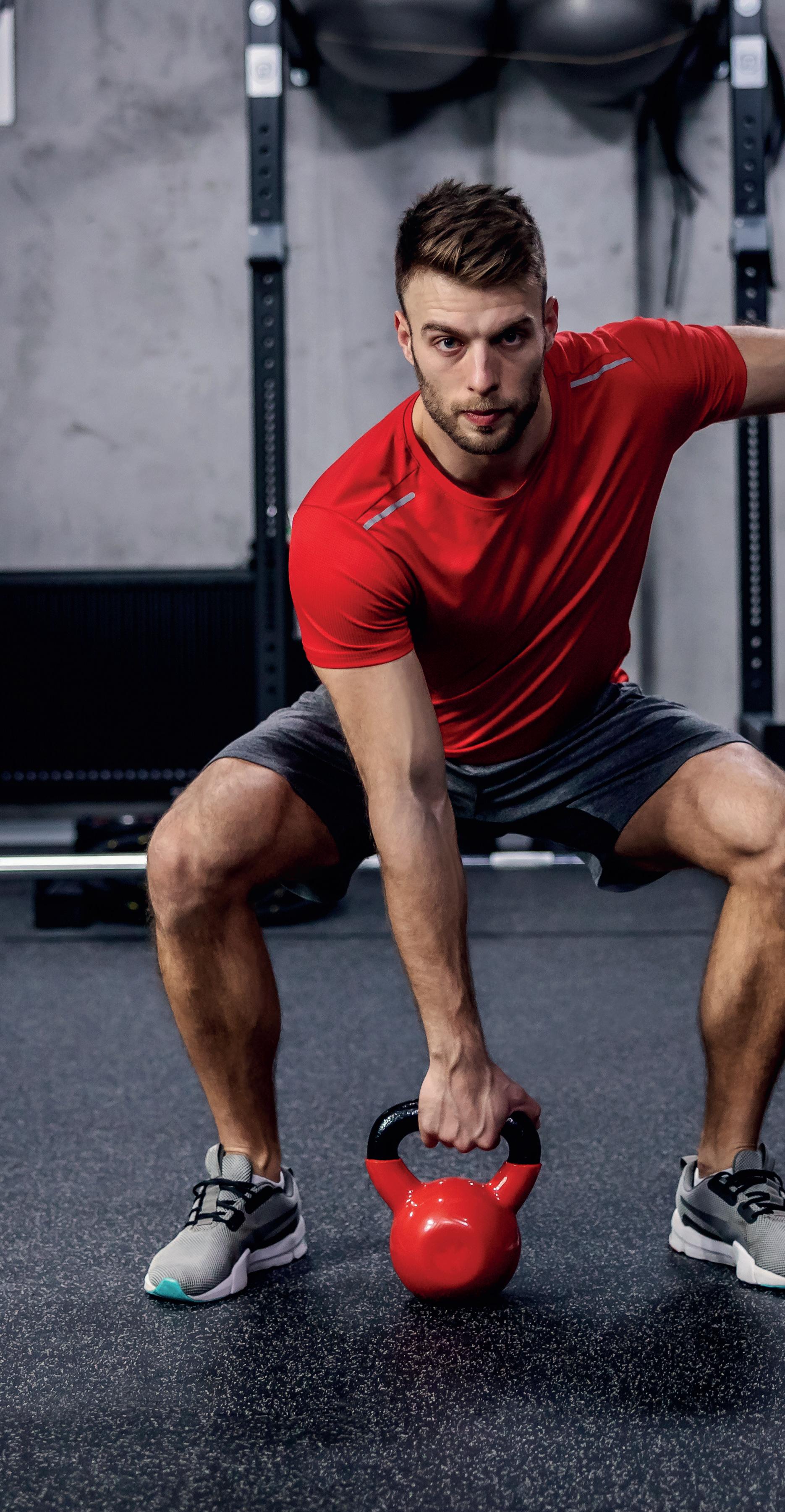



+44
Sales@TVS-Group.co.uk
Contact us now: T:
(0) 1706 260 220 E:
www.TVS-Group.co.uk

GYM FLOOR 92 Issue 1 2024 ©Cybertrek 2024 PHOTO: SHUTTERSTOCK/MONSTER ZTUDIO
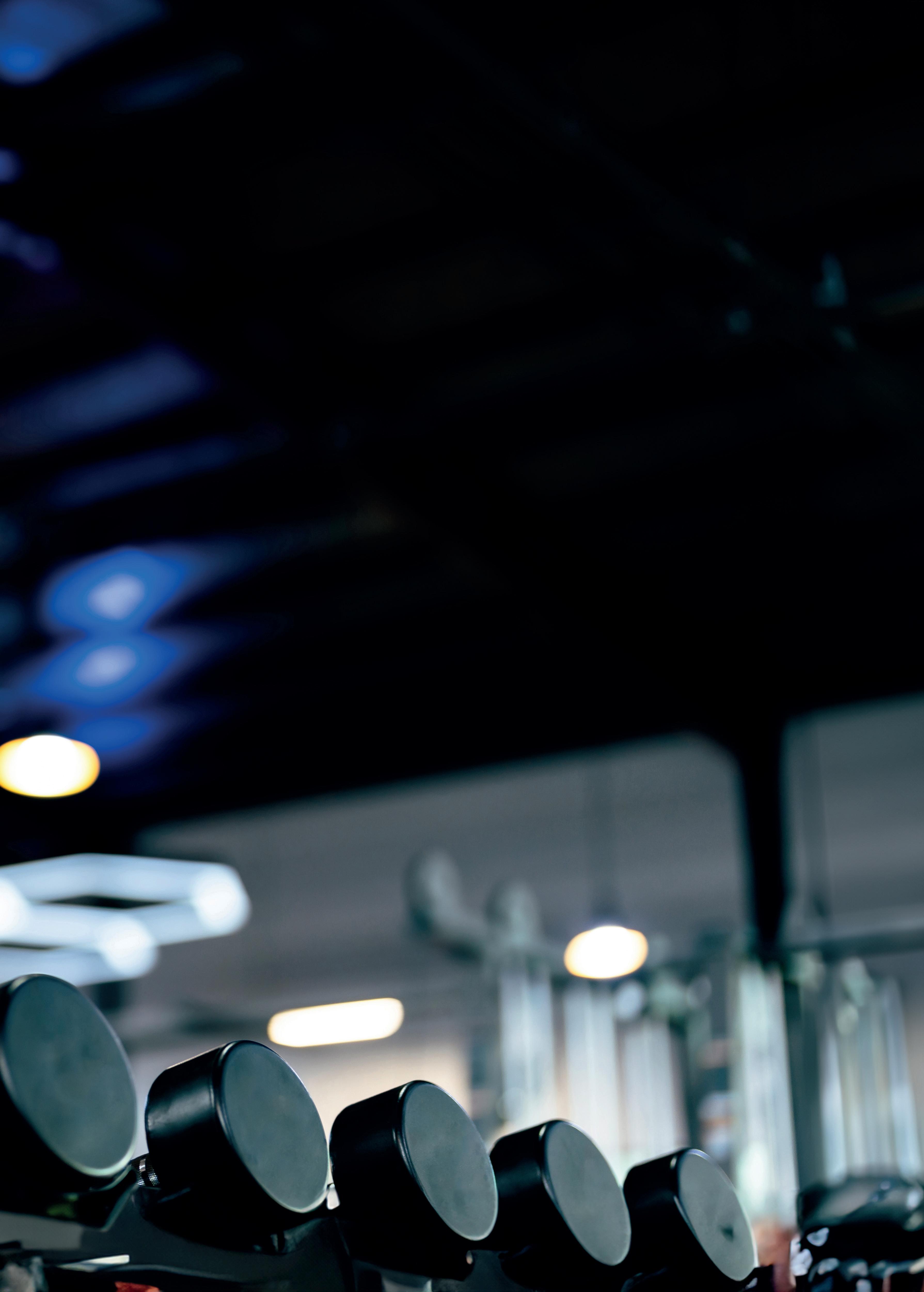
Everything in its place
The right storage can transform the flow and feel of your training spaces and the user experience. Steph Eaves asks the experts for their most creative solutions
We incorporate user-friendly features such as numbers, colour coding and visual prompts
 Chris Hull
BLK BOX
Chris Hull
BLK BOX
What are your most creative storage solutions?
PHOTO: BLK BOX
In dynamic environments, such as small group personal training (SGPT) facilities where space is often at a premium, BLK BOX offers PT Pods or the PT Pod Pro with Nexus Cable integration that allow for versatility in training. We also offer modular storage upgrades which allow clients to design bespoke SGPT storage solutions. Each option combines maximum storage capability with accessibility, which is essential during high-intensity sessions where time is of the essence and workout variance is integral. Accommodating a broad range of equipment, from dumbbells to kettlebells, within our multi-

tiered designs we can ensure that the equipment is readily available without impeding floor space or causing pinch points.
Systems with our Nexus Cable integration extend the functionality by incorporating a dual cable stack, which allows for an even greater variety of training options. By incorporating weight stacks within the footprint of the racks we not only keep the gym floor safe and organised, but also enhance the efficiency and effectiveness of the training experience.
What’s the best way to encourage members to put kit away?
We’ve found convenience and simplicity are key. We ensure BLK BOX storage systems integrate into the flow of the environment to facilitate swift transitions between exercises. We incorporate
94 Issue 1 2024 ©Cybertrek 2024 GYM FLOOR
PHOTO: BLK BOX
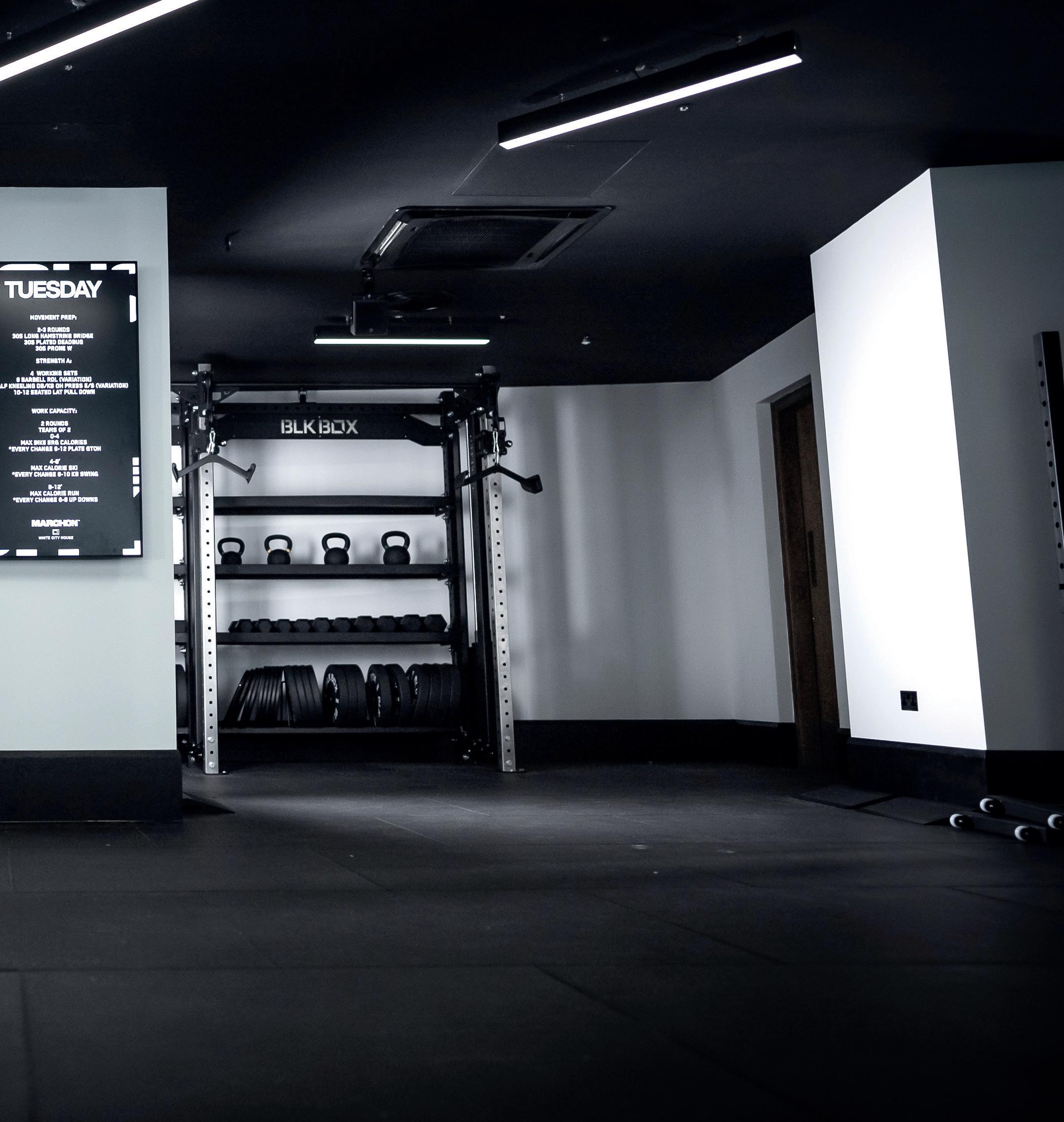
user-friendly features such as numbers, colour coding and visual prompts, which aid members in quickly locating the correct location for each piece of equipment and empower a sense of ownership and responsibility for maintaining the gym floor.
How do these products scale for different clubs?
Similar to our Rig and Rack ranges, each BLK BOX storage system is modular and designed with scalability in mind. Whether it’s a Big Ass Storage unit, a Base Camp Storage configuration, or a completely bespoke system, we offer a spectrum of capacity options.
Systems can be easily adjusted to fit space and equipment requirements, ensuring clubs can optimise floor space and provide adequate storage, regardless of size. This flexibility is crucial for accommodating growth, allowing for additional storage units to be added as the membership and equipment inventory expands.
Can the products be customised?
Customisation is a central part of BLK BOX’s DNA. With an in-house design team and well equipped manufacturing facilities in the UK, we’re able to create bespoke solutions that capture a brand’s essence with customisation options from colours, to logos, attachments and unique configurations.
The result is equipment that reflects the brand, resonates with members and enhances the training experience.
Final thoughts?
When designing a training space, storage is a core part of our team’s focus, not an afterthought that’s bolted on or thrown into an empty space. True to our ‘Built Better’ ethos, it’s critical our storage solutions not only complement the aesthetic of the facility, but also meet the practical needs of gym operators while contributing to the overall training experience.
95 ©Cybertrek 2024 Issue 1 2024
Flexible gym storage needs to accommodate growth
Storage is a great way of controlling space, creating flow and segmenting areas
Gary Oleinik
Absolute Performance
Tell us about your creative storage solutions
We offer two types of storage; bespoke fully integrated and free-standing.
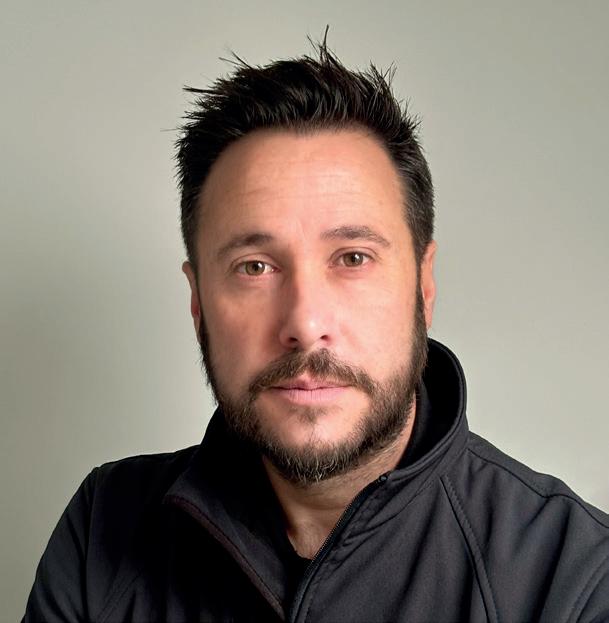
Bespoke integrated products are part of our Werksan range, an IWF (International Weightlifting Federation) accredited brand.
Werksan shelving and storage solutions are designed to suit the space and style of each facility. Storage space can be integrated into the racks and rigs or personal training pods to keep plates, bars and other kit neat, tidy and off the floor. They're also provided as bespoke storage to house ancillary items such as hex dumbbells, medicine balls, bands and mats.
Our Apex freestanding storage solutions are created to house all the different types of kit a small or large gym will need. They keep the space looking professional and enable easy access to the equipment. We provide shelving units for dumbbells, kettlebells, balls and sandbags and also holders and trees for plates and bar storage products. For studios, where space is often limited, many of our solutions have a small footprint, while others can be wall-mounted.
How do your designs help members feel comfortable putting things away?
We make equipment easy and safe to access by reducing the chances of finger trapping and by stopping the kit from rolling away. We also offer laser-cut labelling to help users relocate the equipment correctly.
Our storage solutions are designed with key considerations in mind, including the type of equipment it stores, how the user interacts with it and its footprint. We take into account things such as the weight and shape of the product, height of the shelves, spacing between weights and between shelves.

The Apex hex dumbbell rack has angled shelves, for example, to make it easier to lift the dumbbell by the grip and shelves are staggered so the bottom shelf is as easy to access as the top shelf. Each shelf has rubber padding to protect the weights and a front lip to stop them sliding forwards.
How do these products scale?
Our Werksan range is modular, making it fully scalable. Whether a gym has two racks or 20, they can make use of storage to keep plates, bars, dumbbells, balls and bags safely stored and off the floor. Space between racks is often wasted, so making use of it for storage
GYM FLOOR
PHOTO: RICHARD WASHBROOKE PHOTOGRAPHY
PHOTO: ABSOLUTE PERFORMACE
How the user interacts with storage and what footprint it takes up all have an impact

is a great way for a gym to maximise usable space. Our freestanding solutions are often multi-functional – our medicine ball or Bosu ball racks can double up as storage for sandbags in smaller gyms or positioned together in larger gyms to create a storage area.
Can the products be customised or branded for the operator?
Our racks, rigs and their storage solutions are fully customisable. We can finish them in brand colours or a colour to match an interior design. They can also be laser cut with logos or finished with brand plates, which delivers a sense of place and ownership to the facility.
When you combine this with customised plates, weights and platforms, the facility can become a unique space owners feel proud of and members can feel energised in.
Any final thoughts?
We encourage customers to think of storage as more than just a place to put equipment, it’s a great way of controlling space, creating flow and segmenting areas. Ensuring equipment is stored well and is in place for each activity keeps training spaces safe and organised. Efficiency, functionality, equipment longevity, aesthetics and client enjoyment are just a few of the benefits.
97 ©Cybertrek 2024 Issue 1 2024
We’re seeing a move to incorporating storage racks into training rigs and stations
JAMES ANDERSON
Physical
What are your most creative storage solutions?
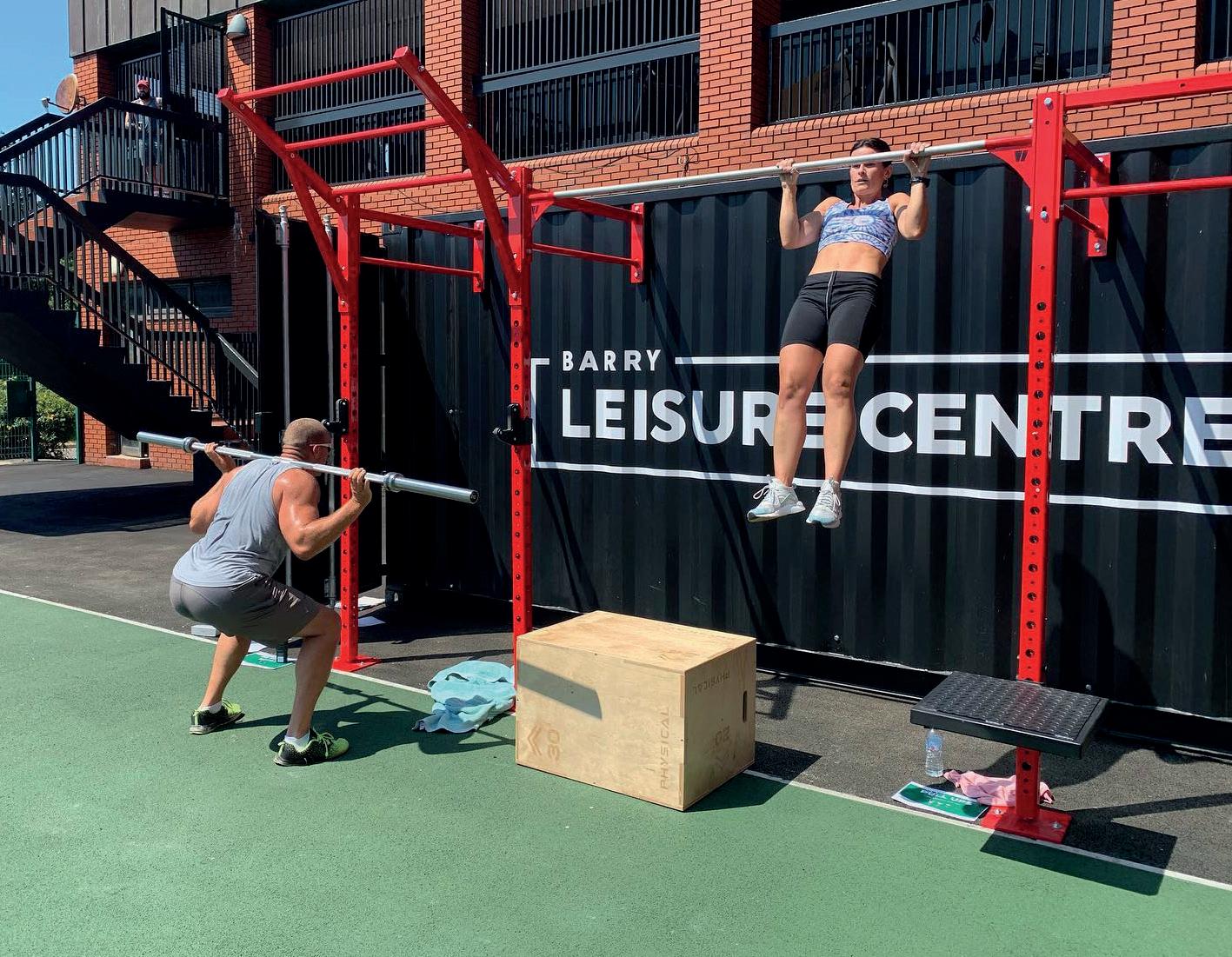
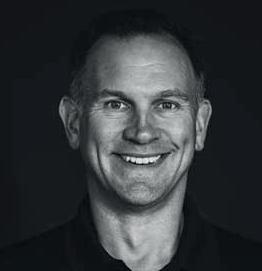
Functional and small group training are our passion: we specialise in creating fitness playgrounds from the ground up, supplying not only the training products, but also the flooring and storage solutions that ensure these spaces are as easy to use as they are inviting.
We supply storage solutions in all shapes and sizes, to house everything from barbells to dumbbells, kettlebells to Olympic plates, power bags to studio Pump sets and more. All have been designed to ensure everything needed is within reach while keeping training areas tidy and safe, with no trip hazards.
The other trend at the moment is the move to incorporate storage racks into training rigs and training stations – we’re seeing things such as dip bars being integrated into gym storage structures and storage integrated between stations on training rigs, creating multi-purpose solutions that maximise every inch of floor space and make the experience seamless.
Can design encourage members to put things away?
You want storage to be right at the edge of the training space; it’s why the integration of storage into training stations is particularly interesting. You also want it to be sturdy and human-sized: people shouldn’t have to reach up to put kit away or worry about it falling on them. It also helps if the storage has a good aesthetic, so people feel drawn to tidy up.
In a functional space, multi-purpose storage is a good solution, accommodating all the equipment used in the workout, so members don’t have to
go to different areas of the gym to put things away; you want to make it as easy as possible. Crucially, it’s about designing storage solutions that don’t cause bottlenecks, so members can put kit away without feeling they’re getting in anyone’s way.
How do products scale for different sized clubs?
We create bespoke solutions, often using modular storage, so we can create exactly what clients need based on space, floor layout and equipment.
We don’t believe in a one-size-fits-all approach, as we know how much impact good storage can have on the whole exercise experience.
We work with clients on developing enhanced product offerings – incorporating boxing frames, lifting platforms and functional equipment, for example – and bespoke storage that’s accessible and less imposing, but still has space for everything a gym needs.
We also offer an option to build exercise stations into our storage rigs: cable pulley, lifting station, squat rack and so on. This maximises training opportunities and makes full use of floor space, enhancing the member experience, whatever the size of the gym.
Can the products be branded for the operator?
Our modular storage solutions can be made in a range of colours, so they can be customised to the colour scheme of each operator’s brand.
Did we miss anything?
If operators are looking to take small group training outdoors, our partnership with container gym specialist Beaverfit can help – from fixed containers, shelters, racks and rigs to portable boxes and trailers, and all the workout equipment.
98 Issue 1 2024 ©Cybertrek 2024 GYM FLOOR
PHOTO: BARRY LEISURE CENTRE
PHOTO: PHYSICAL
Storage shouldn’t be intrusive, says Anderson
Matthew Januszek
Escape Fitness
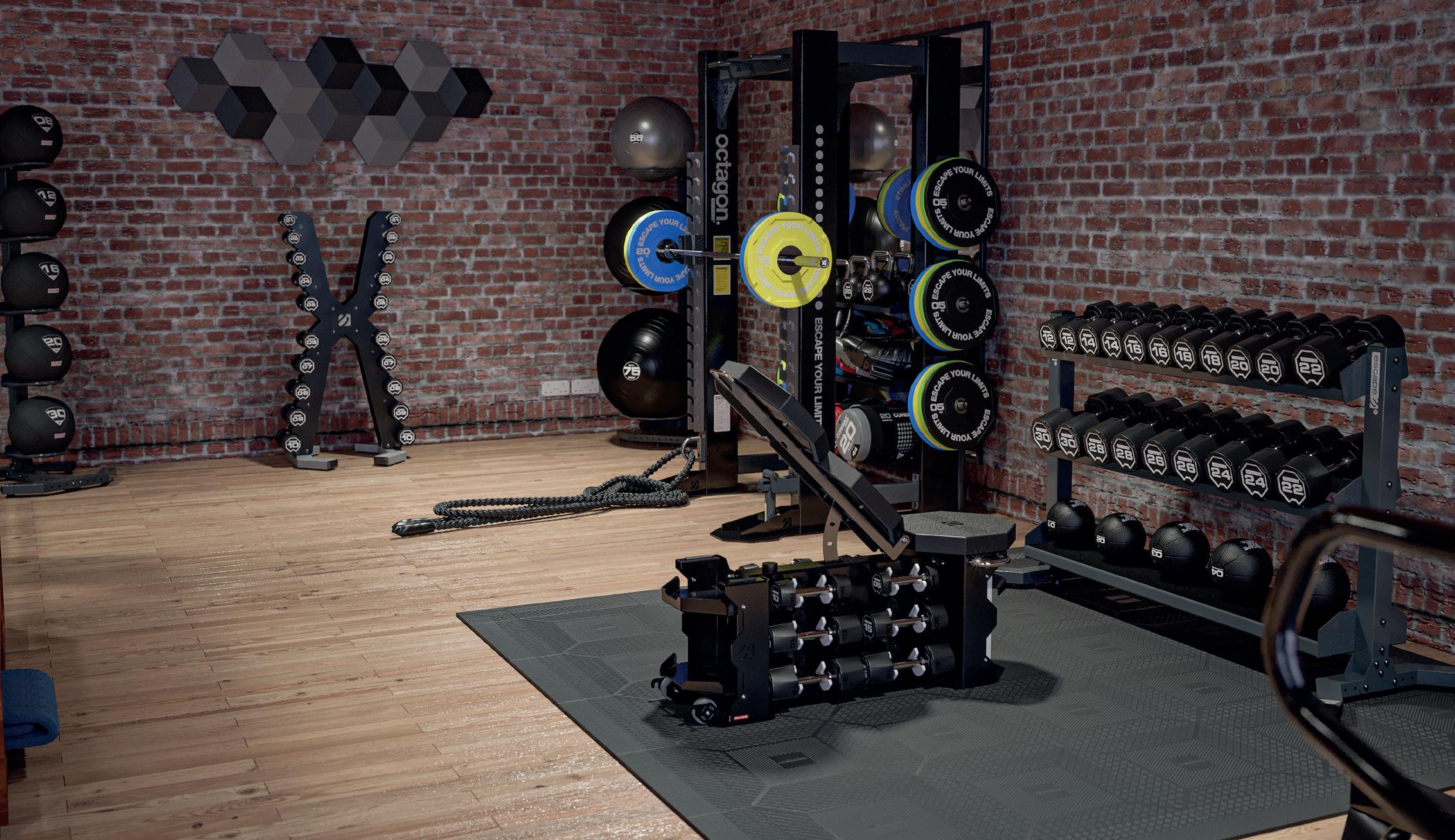
What are your most creative storage solutions?
All our rigs and frames, whether they be multi-user configurations or single person training stations, accommodate integrated storage. In addition to the convenience of easily accessible equipment, integrated storage also enables the creation of dedicated training zones, using the storage racks as space dividers.
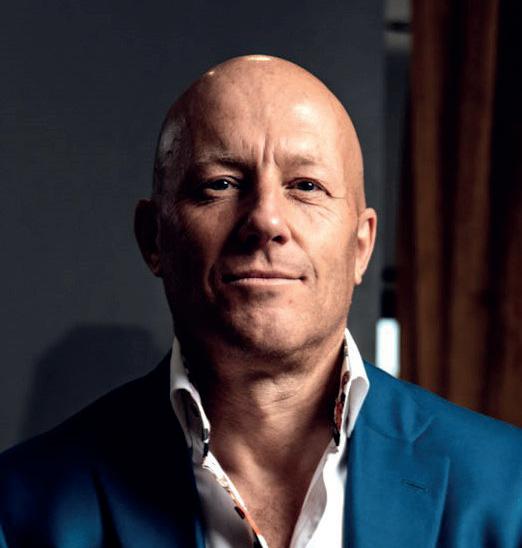
An example of how effective integrated storage can be is our new MARS Mobility and Recovery Station. It’s a standalone training pod that houses all the equipment needed for an effective recovery session.
Our partnership with Hyperice means it incorporates the Hypervolt 2 Pro percussion massage device, as well as an integrated MARS screen delivering digital coaching and equipment demonstrations. Users can complete a fully coached recovery session without moving more than a metre from the pod.
We also offer racks for situations where a full frame is not required. These are designed to house anything from functional kit and dumbbells, to kettlebells, plates and bars.
How do your designs help members feel comfortable putting things away themselves?
All our storage solutions are designed to make equipment selection and replacement as easy and safe as possible. For example, provision is made to store heavy objects at a height which makes them easy to replace and remove without having to overstretch or bend, protecting muscles and joints.
Often replacing a heavy item at waist height is easier than placing it on the floor. This encourages people to return equipment to racks rather than leaving them lying on the training surface. Our storage racks can also be configured to
Users can complete a fully coached recovery session without moving more than a metre from the pod
accommodate a wide range of equipment, empowering coaches to be creative, and keeping routines new and fresh for trainers and participants.
Do these products scale for different-sized clubs?
We can supply a training and storage solution to fit any space and any requirements. Many of our frames are also freestanding, while rigs and frames are modular.
We also have HST 90, a training and storage solution that slots into any corner, optimising every square inch of available space.
Can your products be customised?
Our frames and storage solutions are designed so no two training spaces look or feel the same.
All our frames can be fully customised and we have a team of in-house designers who create bespoke configurations that optimise any size or shape training space. We also offer a range of attachments.
Frames are constructed from steel that can be painted to match brand palettes and brand logos. We can also coat our Octagon Frames and selected dumbbell shelves to add extra protection, making them suitable for outdoor use.
99 ©Cybertrek 2024 Issue 1 2024
PHOTO: ESCAPE FITNESS
PHOTO: ESCAPE FITNESS
Escape designs storage for all its products
Tom Rooke
IndigoFitness
Tell us about your creative storage solutions
We aim to enhance functionality in our storage units, from throw targets and dips to landmine attachments and cable stacks. These units add versatility and value to the gym floor.

We’ve spent years perfecting our storage shelves and solutions and aim to ensure there’s a dedicated space for each accessory to be stored, ensuring a clutter free gym floor. This organisation stops equipment being mixed up or not put back, promoting a seamless workout experience.
A recent innovation involves adapting to existing architecture, such as pillars, to maximise previously neglected floor space. This strategic placement ensures equipment accessibility throughout the gym, eliminating the need for transportation between areas and making session setups more efficient.
How do your products scale?
To cater to the diverse needs of clubs of varying sizes, our shelves are available in three widths. This allows us to create units that fit with the architecture of each space, while accommodating the quantity of equipment required. The result is not only space-efficient, but also visually pleasing, fitting with the overall aesthetics of any health club, regardless of its size.
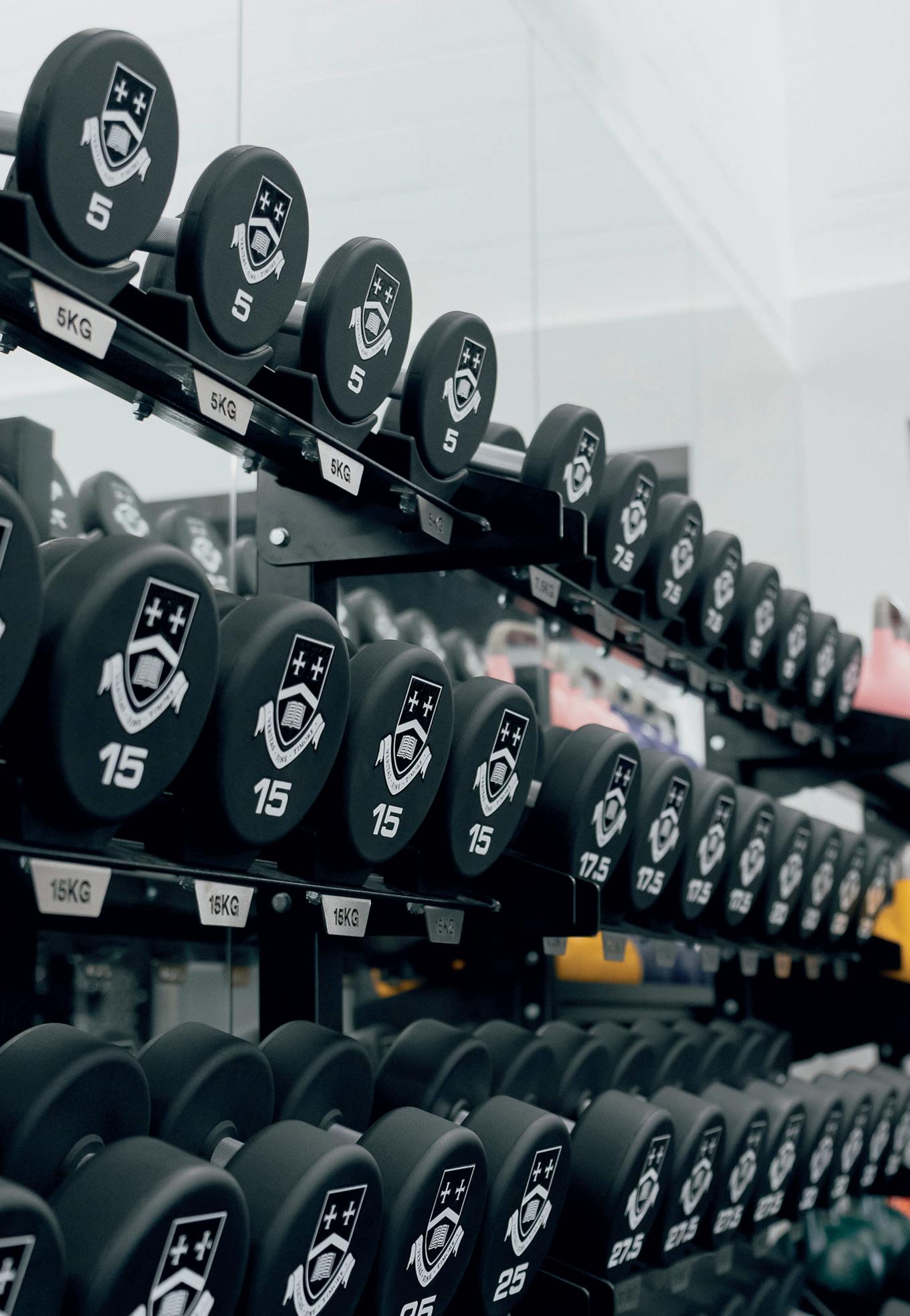
Can the products be branded for the operator?
Each can be personalised to reflect the unique branding of the client. With the option for laser-cut joining plates, clients can integrate their logo or design, adding a distinctive touch. Furthermore, the framework colours are fully customisable, allowing the product to meet the client’s brand, ensuring a bespoke solution.
Final thoughts?
Storage has evolved from individual racks cluttering the gym to be an integral component of health club and studio design, that can maximise floor space, functionality and identity within a facility.
Adapting storage to sit within existing architectural features, such as pillars, maximises neglected floor space
100 Issue 1 2024 ©Cybertrek 2024 GYM FLOOR
The aim is to prevent equipment being transported around the gym fl oor
PHOTO: INDIGOFITNESS
PHOTO: INDIGOFITNESS




















































101 ©Cybertrek 2024 Issue 1 2024 COMMERCIAL GYM EQUIPMENT, CAPABLE OF ADAPTING TO YOUR STYLE. MAKE OUR EQUIPMENT, YOUR OWN. See all of our custom options and more, in our new brochure. WWW.JORDANFITNESS.COM 01553 763285
Product innovation
Steph Eaves rounds up the latest health, fitness and wellness kit

Technogym Visio enables personalised training, says Nerio Alessandri
Technogym Visio is a new display designed to provide training assistance and fitness content. Users can access a library of workouts adapted to their training goals. The 32-inch touchscreen display delivers unsupervised one-to-one

Technogym Visio is a great opportunity for operators to personalise the training experience
Nerio Alessandri
training that can be configured according to the equipment. Technogym envisions the product will be suitable for use in hotels, apartments, unsupervised health clubs facilities and by PTs, who can focus on giving feedback rather than instructing.
New videos and training content can be created and uploaded by personal trainers and operators, in addition to those available from Technogym.
Users can choose from Sessions – instructor-led videos of different workouts like HIIT, strength, yoga, Pilates and more; or Routines, in which users train at their own pace following video instructions with audio cues.

Customised programmes are also available, using the Exercise Guide and Timer settings.
The app allows users to track activity and improve their training experience.
fitness-kit.net keywords
Technogym
Precor consoles allow casting from users’ phones says Adam Hubbard
Precor has launched its third generation of cardio consoles, which allow users to cast content from their mobile phone onto the screen. “PrecorCast removes the need for embedded console apps or logins,” says Adam Hubbard, director of product and marketing at Precor. “Wireless casting means exercisers can keep their eyes on the screen.”
The console features a new interface with workout and media options organised with featured workouts at the top.
These can be searched and filtered, enabling exercisers to find workout that match their interests. Additionally, they can shift to the media tab to set up casting.
The console’s display and cradle are two separate parts,
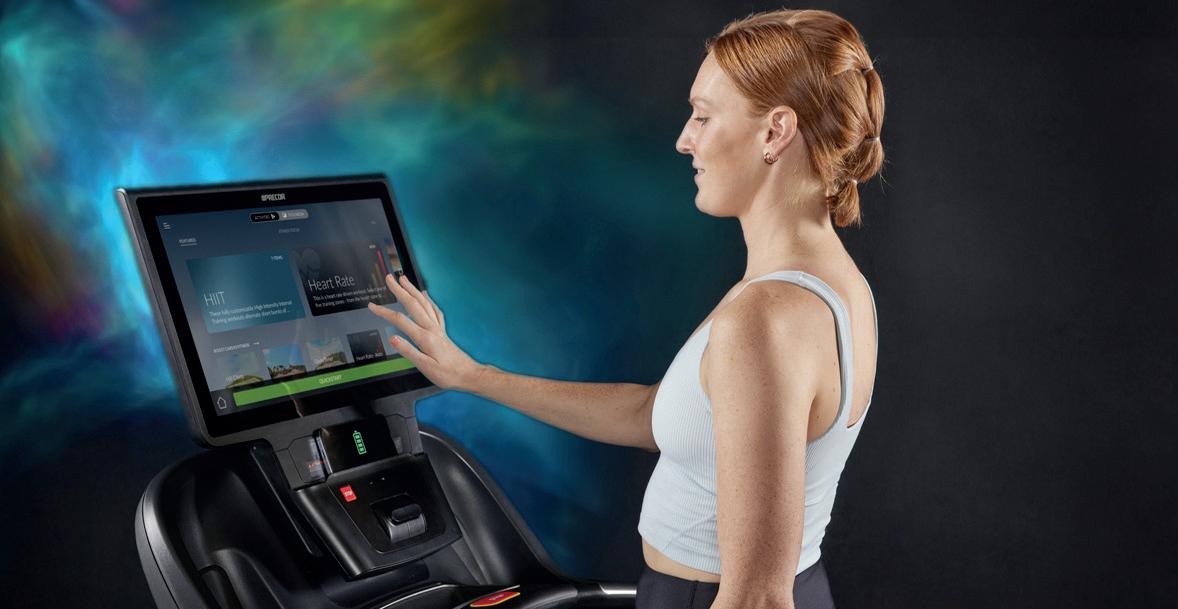
Wireless casting means exercisers can keep their eyes on the screen
Adam Hubbard
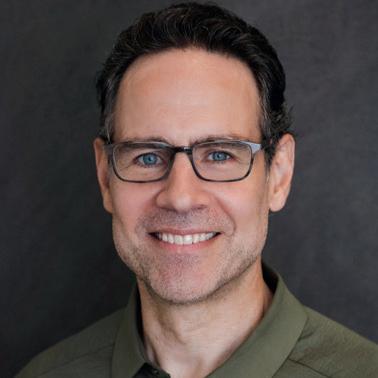
making it easier to swap out components – the consoles come in 16” and 22” screen sizes.
Wireless charging is compatible with Apple and Android and works with phones and Bluetooth headphones and a screensaver reel allows operators to display rotating promotional slides, including QR codes.
fitness-kit.net keywords
Precor
FITNESS-KIT.NET
● Wireless casting is safer for users
● Visio delivers a wide range of content
PHOTO: TECHNOGYM / HASSELBLAD H6D
PHOTO: TECHNOGYM
PHOTO: PRECOR
PHOTO: PRECOR
For more insight, or to get in touch with the companies featured, visit www.fitness-kit.net and type in their keyword
BLK BOX’s Nexus range has been designed to maximise space, says George Morris
Recognising the need for spaceefficient functional bodybuilding solutions, BLK BOX has developed the Nexus range, merging cablebased strength training with free-weight functionality with an aim of maximising training possibilities within a limited space.
Each unit has two 120kg cable stacks while retaining the features of a traditional rack, including squat bays, pull-up stations and storage.
The customisable Nexus range is compatible with BLK BOX modular racks and storage systems and as training facilities expand, the Nexus range can be adapted by adding bays and attachments such as dip bars and spotting arms.
George Morris, head of product at BLK BOX, said: “The Nexus

The Nexus range showcases our dedication to improving the training experience
George Morris
range showcases our dedication to quality and local craftsmanship, emphasising our focus on improving the user’s training experience.”
fitness-kit.net keywords
BLK BOX
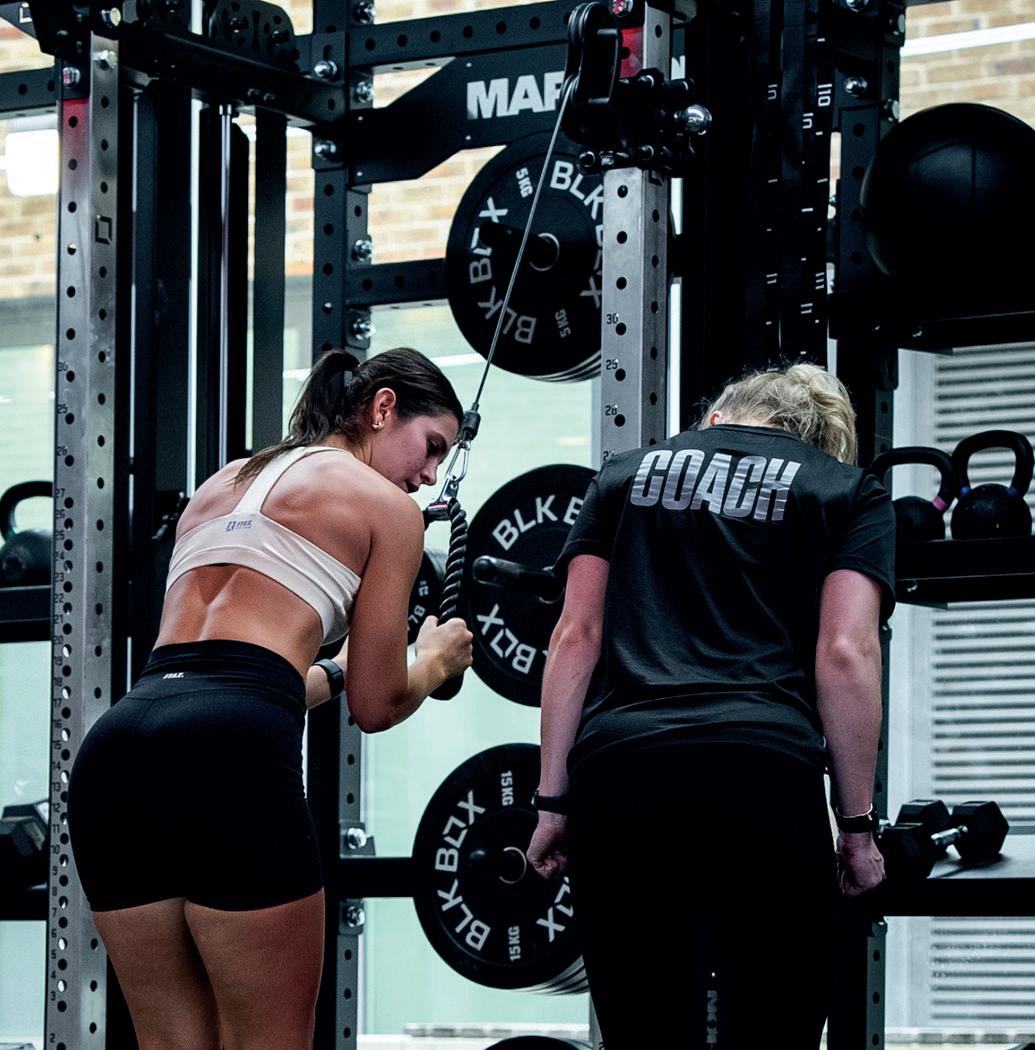
Fitter Stock delivers downloadable wellness content, explains David Langridge
Fitter Stock, a white-label digital health, wellness and fitness content provider, has launched an e-commerce platform that gives operators access to downloadable wellness content through a ‘build your own’ subscription model.
Themes include sleep, nutrition, fitness and mental health, plus tips on healthy eating, audio meditations, yoga workouts
● FitterStock has been designed specifically for the sector
and exercise demonstrations. Six-, 12-, 24- and 36-month licence terms are available. Content can be incorporated into a customer’s own digital platforms, including apps, websites, content management systems or customer communications without the need for an API.
The platform also includes live chat manned by real people to support customers.
David Langridge, MD of Fitter Stock and 1FitLife, said: “Similar to iStock, Fitter Stock provides

Organisations can enhance their digital offer without the need for extensive investment in content creation
David Langridge
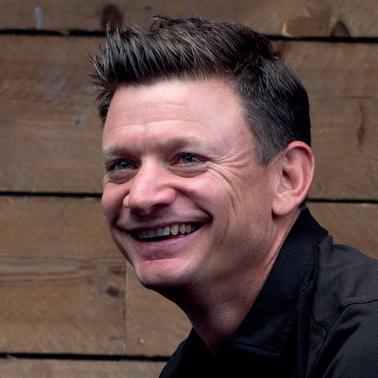
companies with a straightforward ‘download and use’ licence. With our monthly, per-video pricing, regardless of views, clients can be confident about spend.
“Organisations can enhance their digital offer, creating a video and audio library on their own platform, without the need for extensive investment in content creation,” he said.
“Clients also receive a thumbnail image, title, description, and search tags with each file. Fitter Stock can also provide subtitles.”
fitness-kit.net keywords
Fitter Stock
103 ©Cybertrek 2024 Issue 1 2024
● Nexus is a flexible and scalable system
PHOTO: BEN RAMSHAW / 1FITLIFE
PHOTO: FITTER STOCK
PHOTO: BLK BOX / MARCHON
PHOTO: BLK BOX


















FIND A SUPPLIER CLICK HERE to search for a supplier on HCM’s Company Profiles Hub CLICK HERE to visit the HCM Handbook Company Profiles Tap into HCM ’s comprehensive supplier directory and profiles to get in touch with the industry’s leading suppliers of products and services to power your business





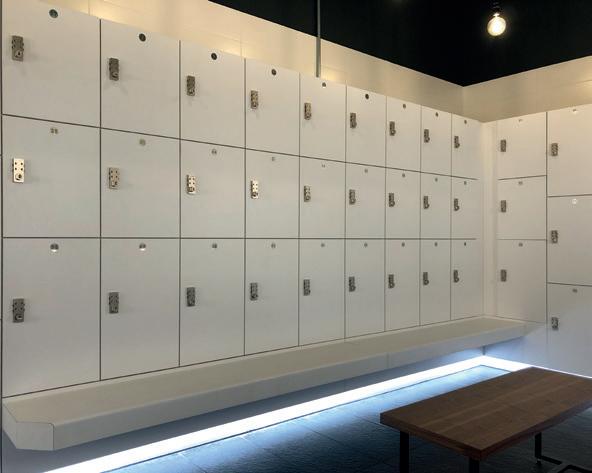



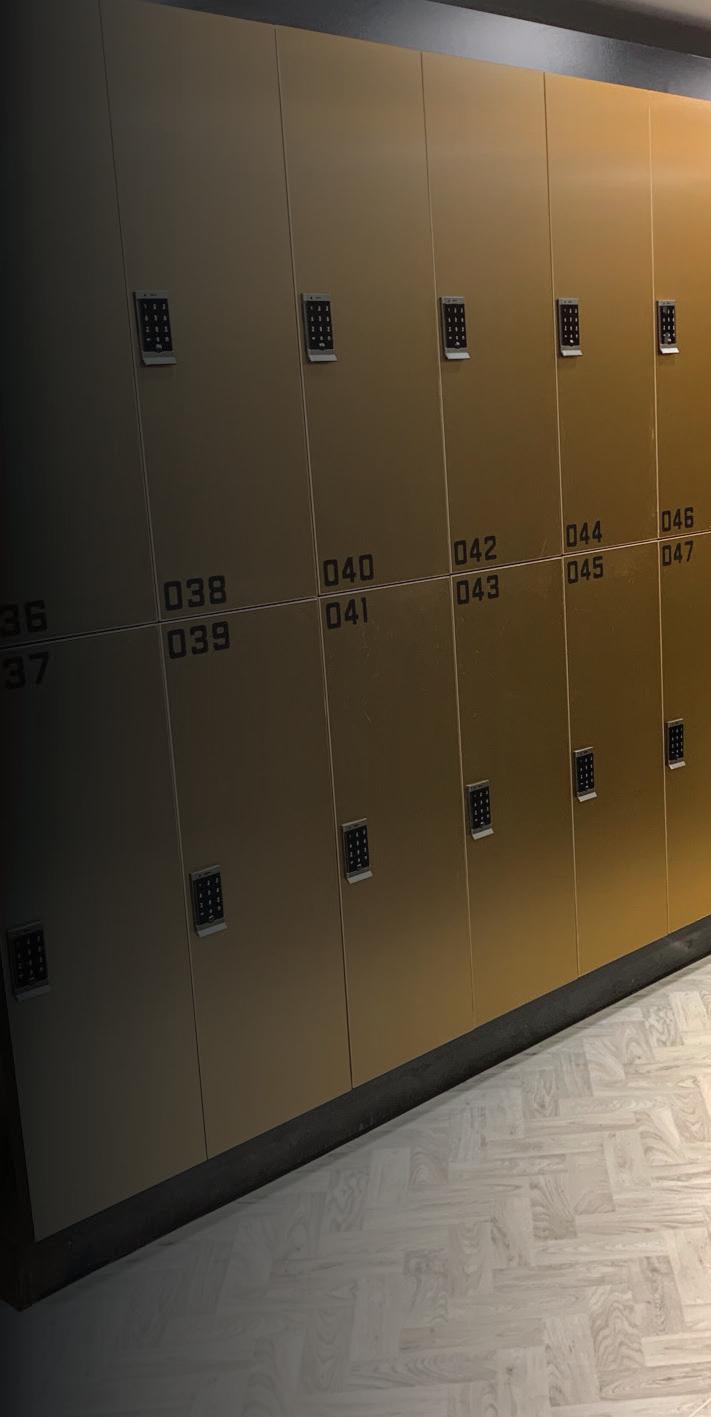
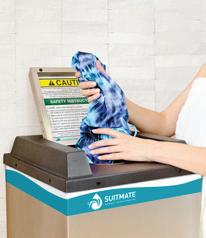

DIRECTORY FLOORING www.tvs-group.co.uk Contact us now: Office: +44 (0) 1706 260 220 Email: Sales@TVS-Group.co.uk Gym Flooring & Acoustic Solutions www.TVS-Group.co.uk www.safespacelockers.co.uk SUPPLIERS OF HIGH QUALITY CHANGING ROOM SOLUTIONS FOR THE FITNESS AND LEISURE INDUSTRY Contact us today for more information T: 0203 651 1500 E: info@safespacelockers.co.uk w: safespacelockers.co.uk » Lockers, benches, padlocks and cubicles » Changing room design » Consultation services » Locker servicing and maintenance » Financial solutions Official distributor of SUITMATE® Swimsuit Water Extractor in England, Scotland and Wales LOCKERS & INTERIORS Tel +44 (0)1803 555885 Email sales@crownsportslockers.co.uk www.crownsportslockers.co.uk LOCKERS & INTERIORS LOCKERS & INTERIORS www.fitlockers.co.uk FITLOCKERS Thinking beyond standard storage CONTACT US m k K Turnkey capability Styles and FITTINGS FOR EVERY setting CODE OR KEY SECURITY Sales@fitlockers.co.uk 01442 409600 www.fitlockers.co.uk Made in Britain janwilliams@leisuremedia.com To book your advert contact the sales team +44 (0)1462 431385 janwilliams@ leisuremedia.com www.regupol.com Fitness Flooring and Acoustic Flooring in Gyms www.regupol.com FUNCTIONAL TRAINING / FLOORING

The power of placebo
Delivering personally-designed workouts can create a placebo effect that yields better results, find researchers
Believing your training programme has been personally optimised just for you creates a placebo effect that leads to better results.
In a Norwegian pilot study, called The effects of being told you are in the intervention group on training results: a pilot study, published in the journal, Scientific Reports, researchers at the University of Agder found the placebo effect – which is common in medicine – holds true for exercise as well.
“If you believe the training programme you're following has been optimised for you, that in itself will have an effect, regardless of the content of the programme. It is exactly the same as the placebo effect we know from medicine,” says research fellow Kolbjørn Lindberg.
The University of Agder study involved 40 individuals who underwent physical tests in a laboratory and were then given very similar training programmes.
Half the participants – the intervention group – were told the training programme had been specially adapted for them based on their tests. The control group did not receive such a message.
Those who thought they’d received an individually-adapted training programme achieved better results than the control group
Better results
The groups were tested again after eight to 10 weeks of training and it turned out that those who thought they had received an individually-adapted training programme had achieved better results on average than the control group.
The main differences were with regards to squats and general muscle thickness.
Lindberg says this may seem surprising, but there are reasons why believing your training programme has been personally adapted for you could yield better results.
“The intervention group may have felt that they had to perform, since the programme was supposed to give them results,” he says. “Also those who thought they were following a personal programme trained a little more and with a higher intensity. Many such small factors can affect the results.”
l More: www.hcmmag.com/Placebo
106 Issue 1 2024 ©Cybertrek 2024
RESEARCH
Participants who believed their workout was customised got better results
PHOTO: SHUTTERSTOCK / FIZKES


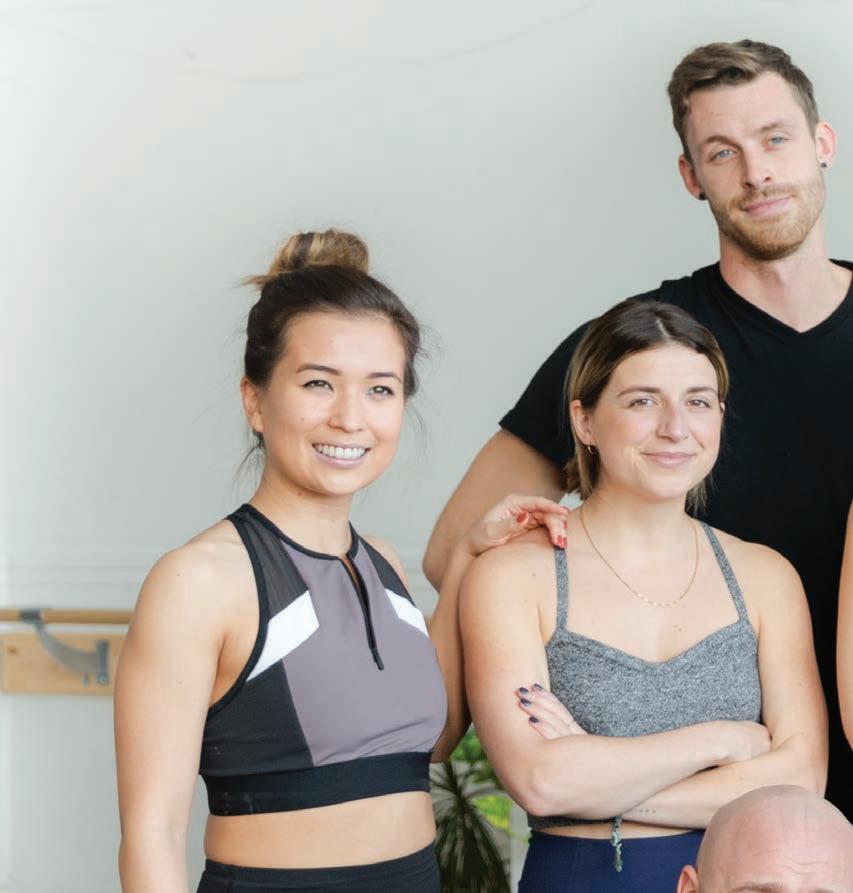

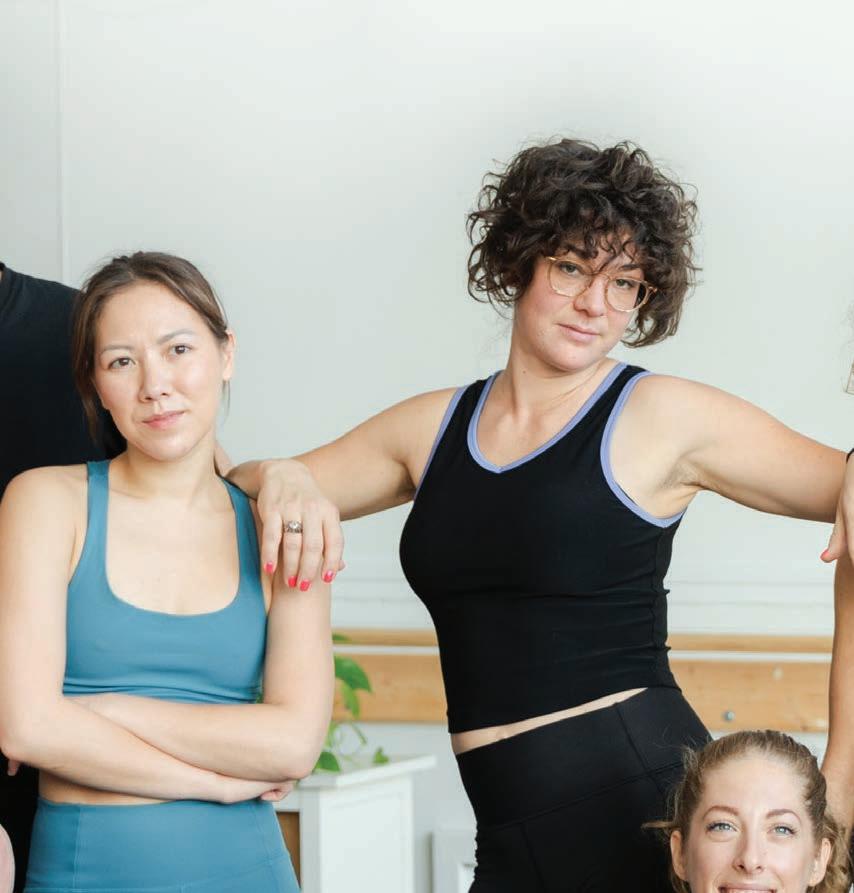
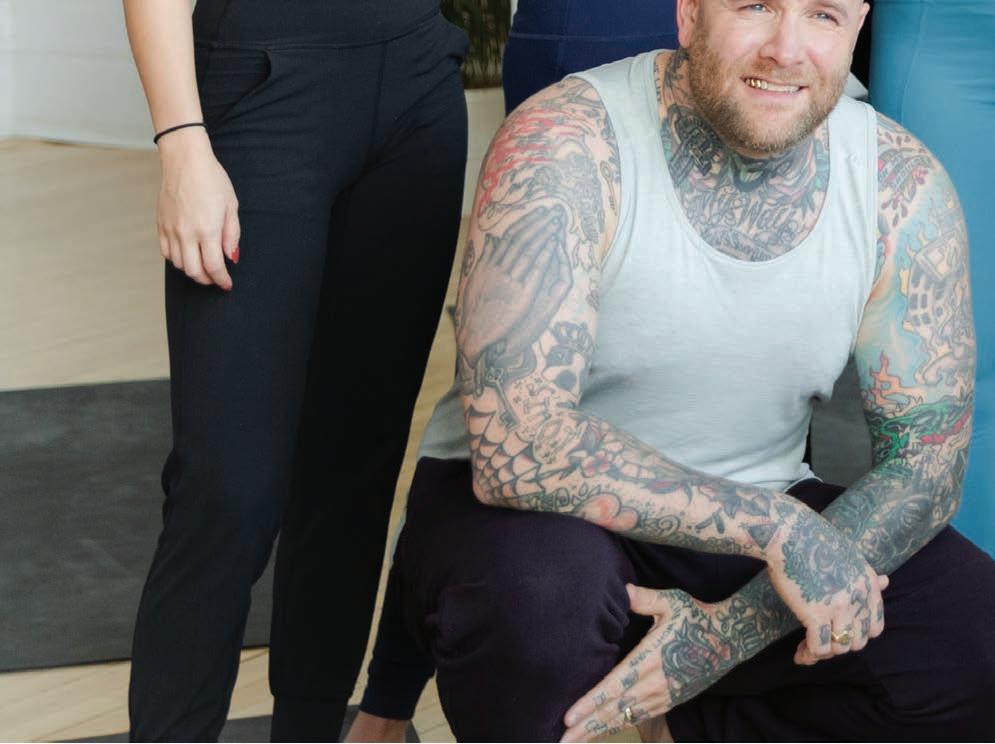

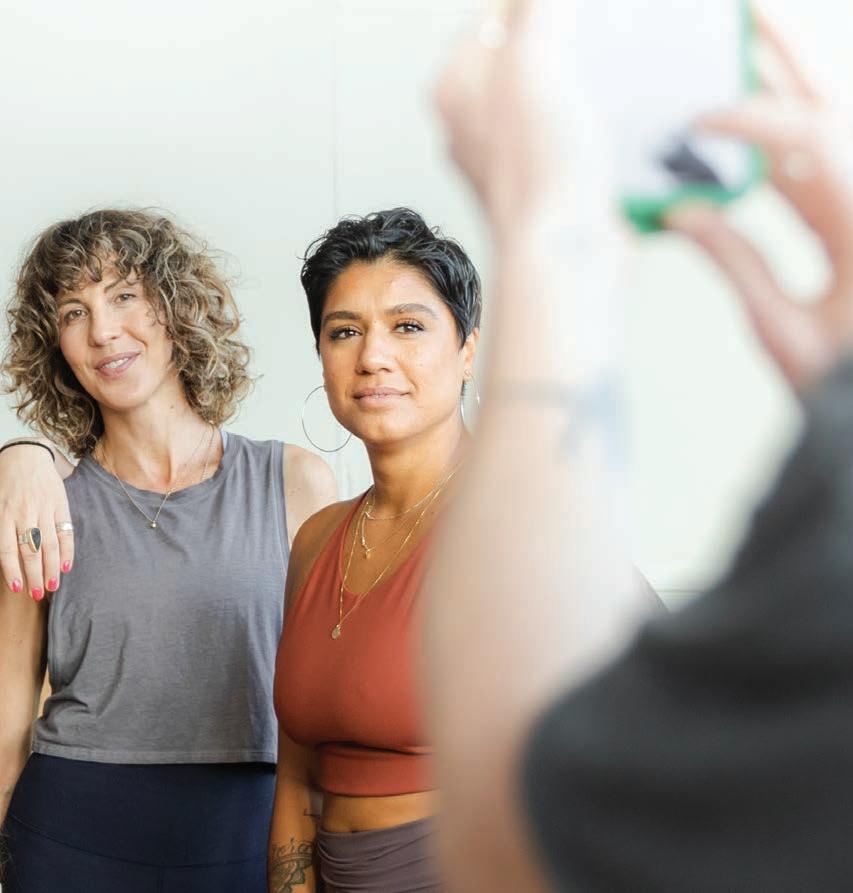
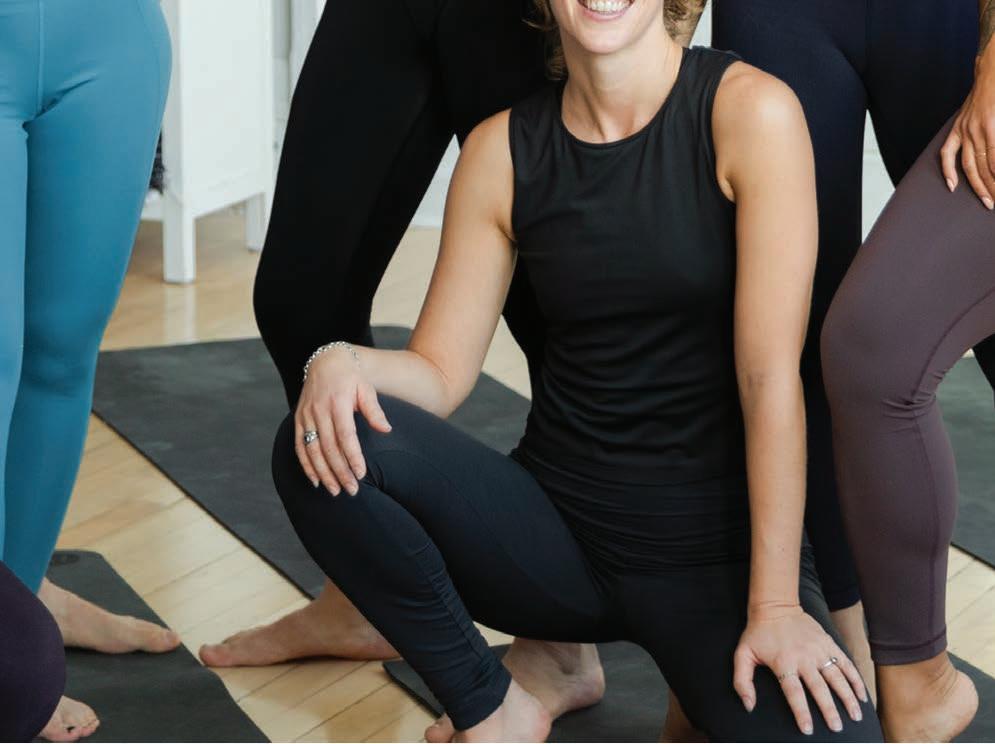

There’s only one studio like yours. Everything you need to run—and grow—your business. There’s only one software like ours. To book a demo or learn more, visit uk.mindbodyonline.com

























































































































 Jason Stanton, CEO, Mytime Active
Jason Stanton, CEO, Mytime Active
























































































































































































































































 Steve Farber Founder Extreme Leadership Institute
Steve Farber Founder Extreme Leadership Institute





 Passing the torch to the ‘love believers’ in your organisation can eventually help you become one too
Passing the torch to the ‘love believers’ in your organisation can eventually help you become one too






 Changing rooms have a range of luxury amenities
The reception area was fitted out by Ridgeway
Washrooms have a luxury look and feel
Changing rooms have a range of luxury amenities
The reception area was fitted out by Ridgeway
Washrooms have a luxury look and feel





 Sarah Luna President Xponential Fitness
Sarah Luna President Xponential Fitness
 Online dance fitness brand Kinrgy will move into bricks and mortar
Luna is excited about untapped opportunities
PHOTO: XPONENTIAL FITNESS
PHOTO: XPONENTIAL FITNESS
Online dance fitness brand Kinrgy will move into bricks and mortar
Luna is excited about untapped opportunities
PHOTO: XPONENTIAL FITNESS
PHOTO: XPONENTIAL FITNESS





 Will Orr CEO The Gym Group
Will Orr CEO The Gym Group




 GLL received the Investors in People Gold Award
GLL received the Investors in People Gold Award
 Martin Franklin
CEO Europe Les Mills International
Martin Franklin
CEO Europe Les Mills International



 Huw Edwards CEO UK Active
Huw Edwards CEO UK Active


























































































 Chris Hull
BLK BOX
Chris Hull
BLK BOX


































































































